Coreopsis丨The luxuriant flowers may be planted by humans, and the green water in the distance is smoky.
Coreopsis is now a general term for plants in the genus Coreopsis, which includes six species: Coreopsis grandiflora, Coreopsis sword-leaved, Coreopsis verticillata. Coreopsis is an introduced species native to American grasslands and woodlands, favored by plant breeders for its robust habit and rich flowers. There are more than 100 different species, although not all are perennials.
When I visited the National Garden Fair in July, I saw a lot of coreopsis in the park, especially the "Terra Nova" display garden in the horticultural town. A large number of coreopsis of different colors and varieties were used to form a spiral color ribbon. It looked plump and colorful, full of the texture of oil painting. The inspiration of the Terra Nova display garden came from the work "Starry Night" by Impressionist painter Van Gogh!
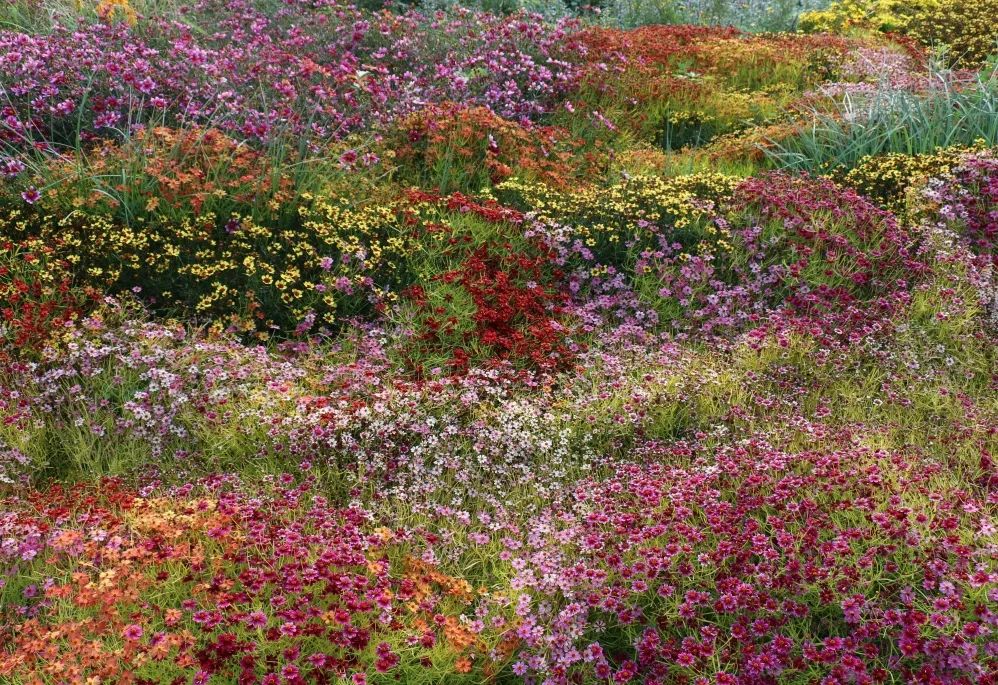
Interested friends can take this article to the Expo and see how many varieties they can find.
Today's article has some scientific meaning. I want to let you know that Coreopsis is not only yellow, but also colorful.
This hardy hybrid begins blooming in late spring, reaching 24" tall with strawberry-colored centers and butter-colored petals; the flowers form a medium-height canopy of color that changes as the season progresses. Cooler temperatures in the fall color the flowers strawberry pink. Pruning in August will cause them to bloom again; continued flower production and vigorous growth make 'Autumn Red' destined to become one of America's gardeners' favorites.
This is the first hardy coreopsis to have this flower color. It is more compact than 'Red Shift'.
Tolerating heat and humidity, it is ideal for planting in the front of a sunny border, or in a mixed container. Plants bloom best in a sunny location. A real breakthrough of color is achieved.
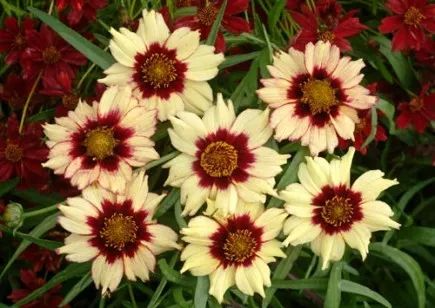
Perennial herb, light-loving, plant height 20-23 inches, leaves mostly opposite, linear, flowers solitary, ligulate flowers pink, rose-red, showy.
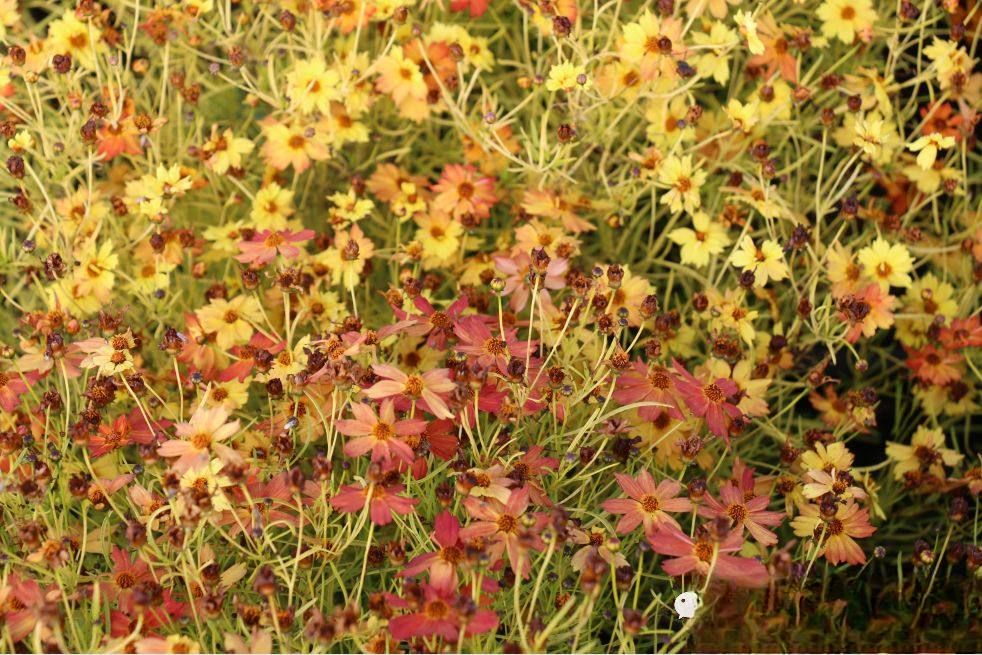
Annual, 6-12" (15-30cm) tall. Peak flowering mid-June to early September. Bright, feathery gold foliage creates a backdrop for clear magenta flowers that bloom from late spring to fall. Drought tolerant, blooms until just before frost. Small, compact habit, forms a nice low clumping plant, perfect for edging borders, and also works well in group plantings!
Some plants were cut back in mid-July of the second year to see if this would extend the flowering period and rejuvenate the plants. The results were not satisfactory. A second flowering reached 60% coverage in late August. In the second year of the trial, resistance to powdery mildew increased significantly. In general, powdery mildew was not prevalent in 2013, but 'Cherry Lemonade' was relatively weak in terms of resistance to powdery mildew. A plus for this variety, and for the entire Lemonade series, is that its bright yellow-brown foliage adds ornamental appeal for several weeks even before flowering.
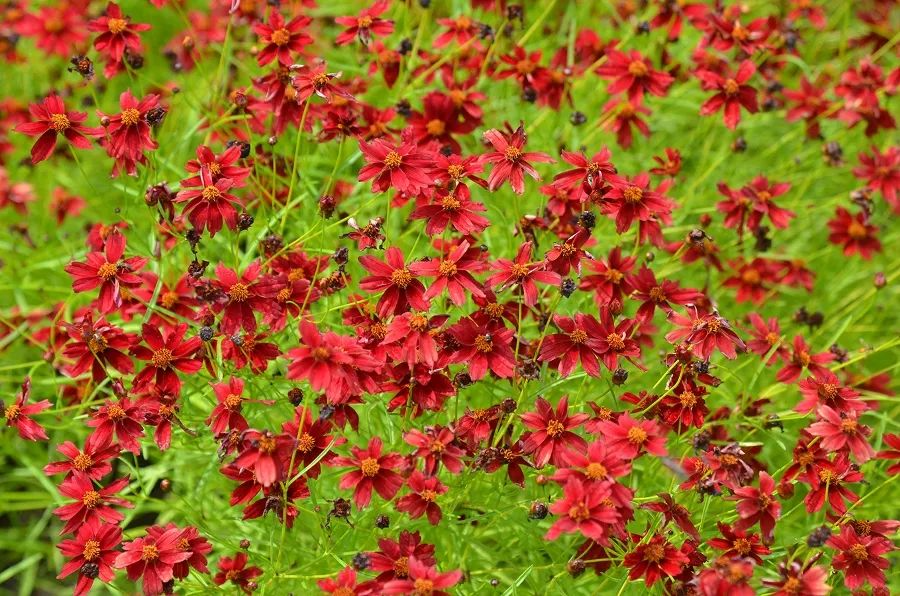
The plant is 5" tall and forms a cushiony mound with dark green leaves covered with small, deep cherry red flowers with overlapping petals. A perfect habit! Performs well in a sunny location.
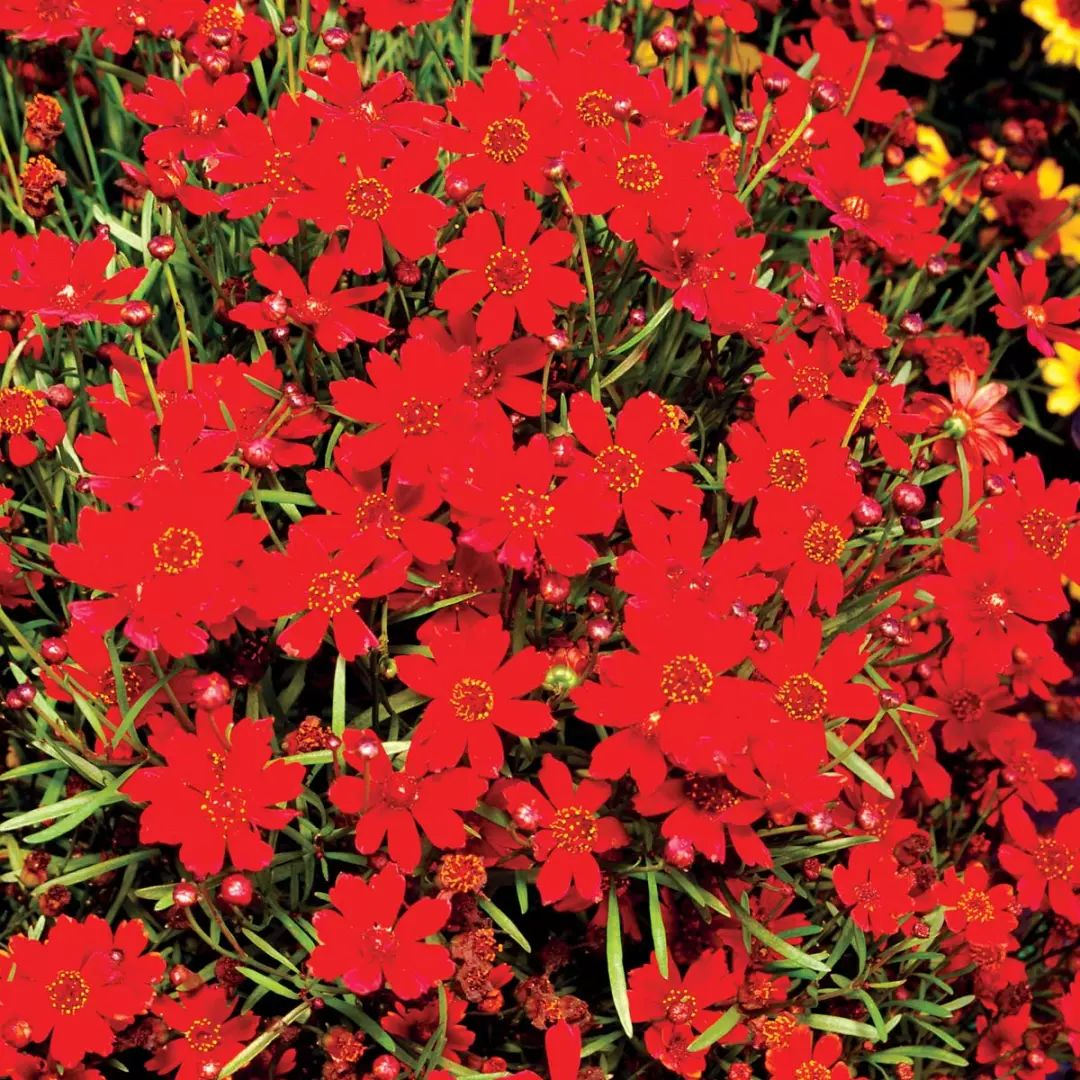
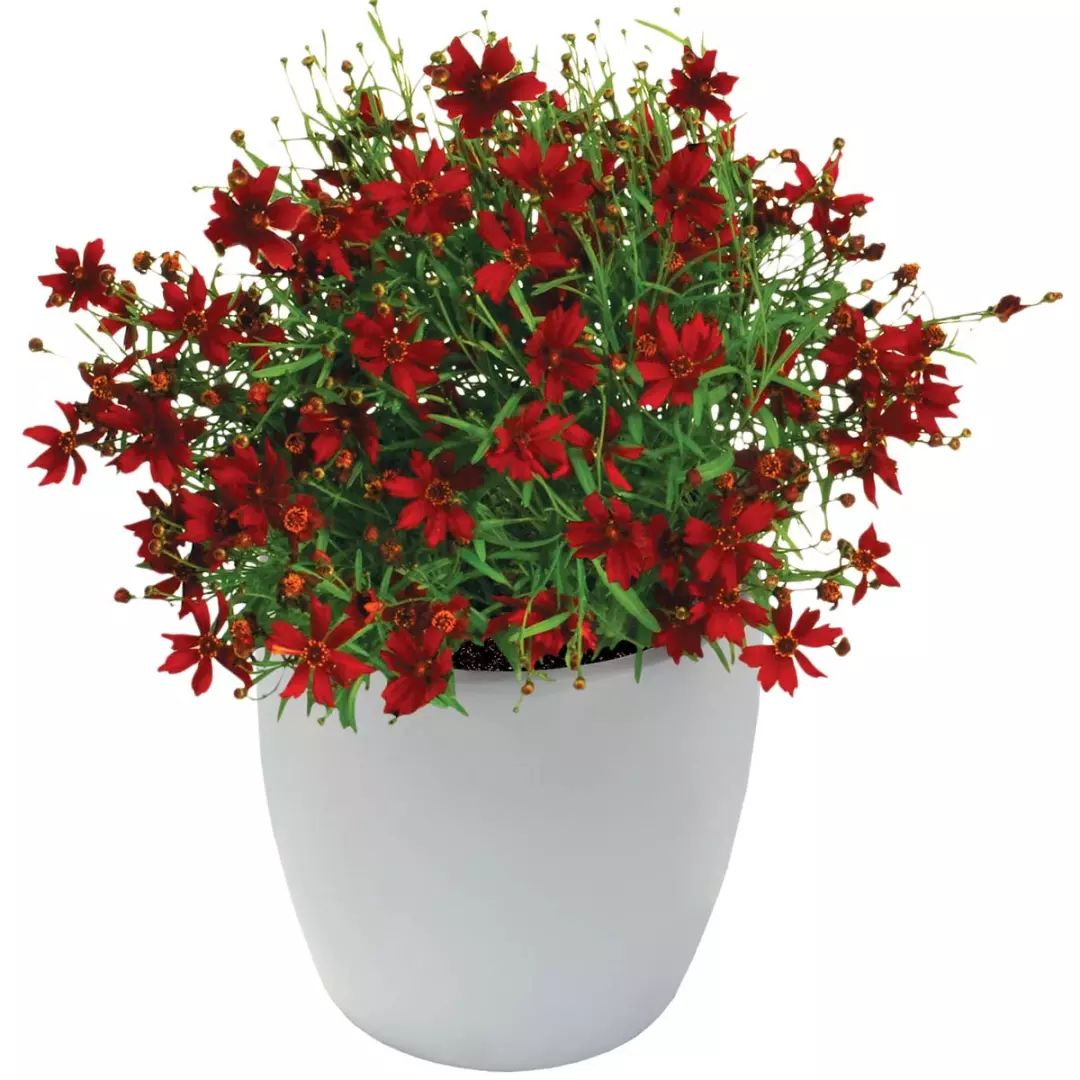
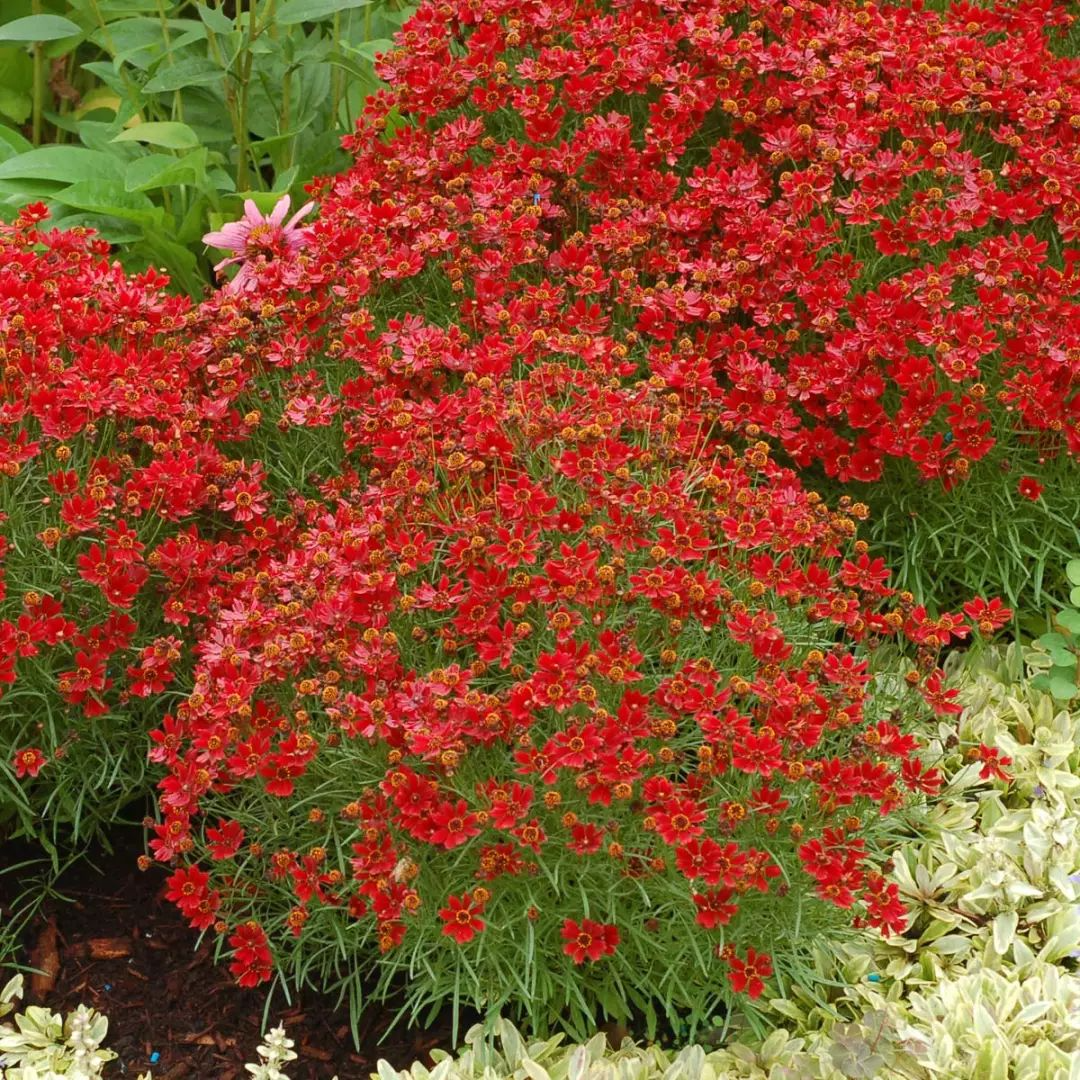
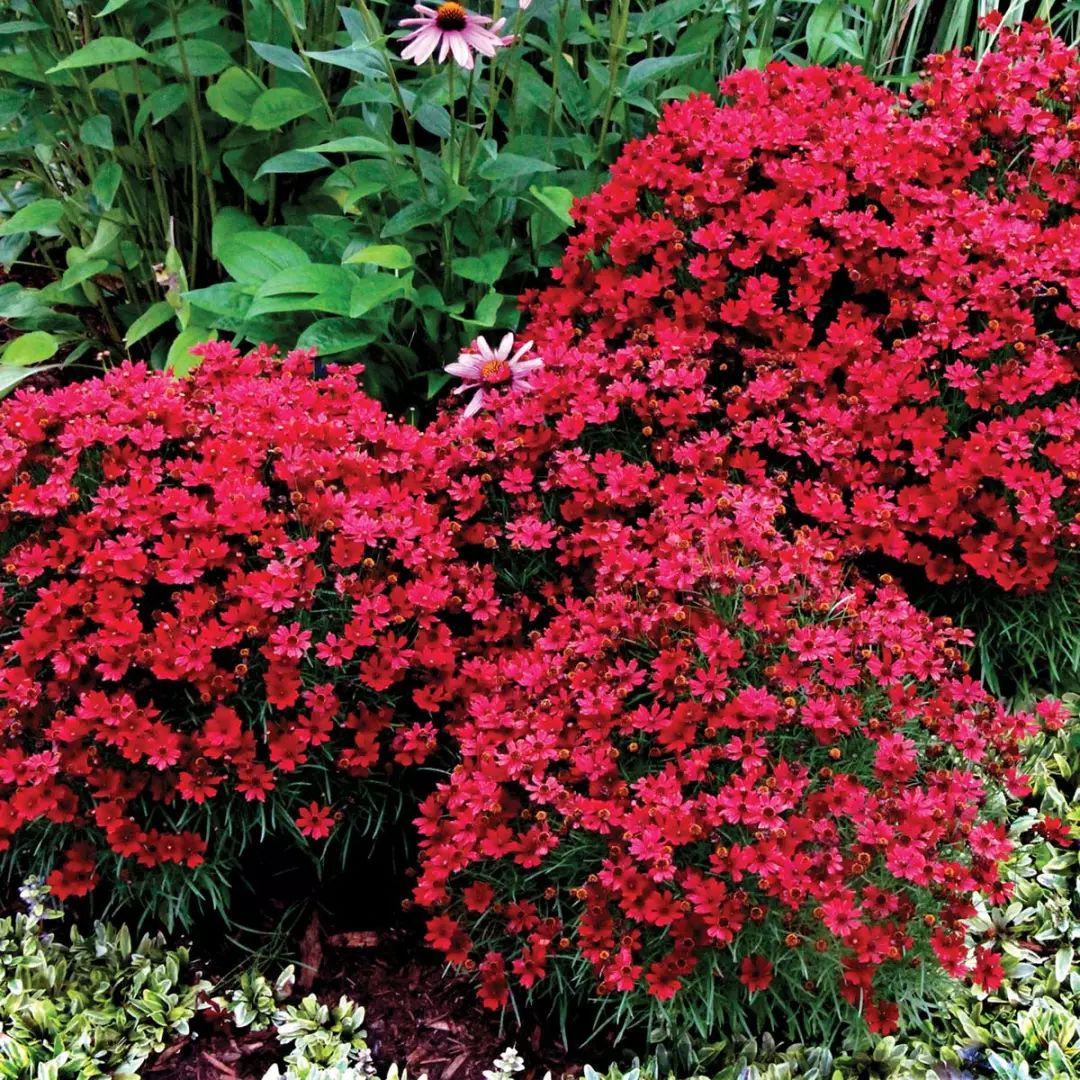
The plant is 8 inches tall, compact, and low; it has cranberry-colored flowers with white edges.
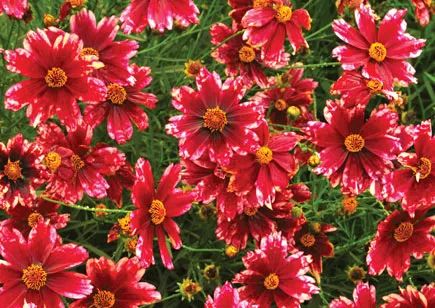
Coreopsis 'Creme Brulee'
Originally discovered in Lois Woodhull's Long Island garden, this new hybrid was developed from Coreopsis grandiflora and Coreopsis 'Moonbeam'.
This is a very long flowering perennial, 45-55cm tall, with neat dark green, linear clumps of leaves, bearing large, buttery, bright flowers. Each petal has a delicate notch at the tip, and these lively, long-blooming flowers not only cover the foliage, but also line the sturdy stems beneath the flowers. Prune the plant in August to encourage re-flowering. Ideal for planting at the front of a sunny border, or growing in mixed containers. Tolerates heat and humidity. Plants flower best in a sunny position. Flowers are larger and the flower colour is a darker shade than the older selection 'Moonlight'. Flowers from Bressingham®.
To enjoy a range of colour and texture in the landscape, plant with Verbena 'Flush of White' and Osmanthus fragrans 'Sapphire Blue', Osmanthus fragrans 'Abbey Road', Phlox 'Barthirtythree', Astilbe 'Beauty of Lisse' and Agapanthus 'ATIBLu'.
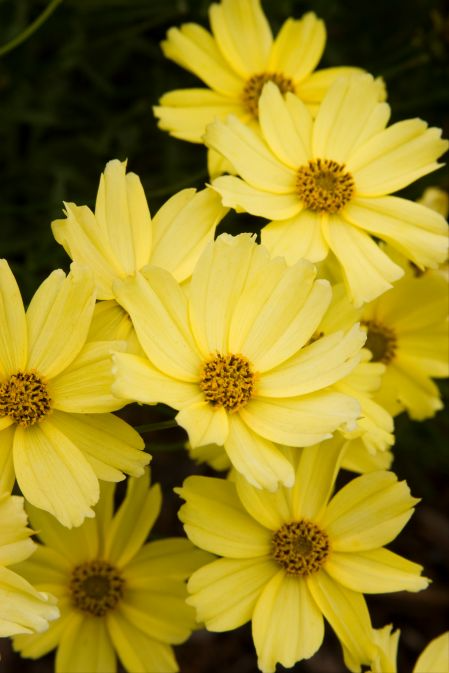
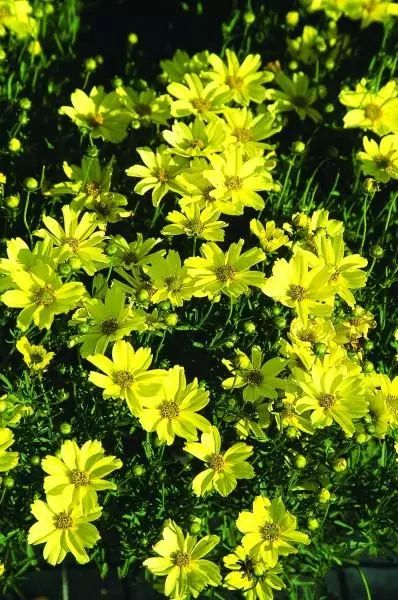
Coreopsis has always been a popular choice for perennial gardens, but this new range is a breakthrough. The Uptick™ range features a neat, mounding habit, impressively large bi-coloured flowers and good mildew resistance. A hardy grower that flowers from May to September. With a plant height of 30-35cm, this variety offers large, buttery yellow flowers with a creamy yellow edge around a purple centre and the range has won several industry awards.

A low, compact bush with large peach and coral-red flowers that grow for months on this lovely plant. Another hardy variety from the Terra Nova® breeding program, this one covers its old flowers so quickly that it never has a rest period.
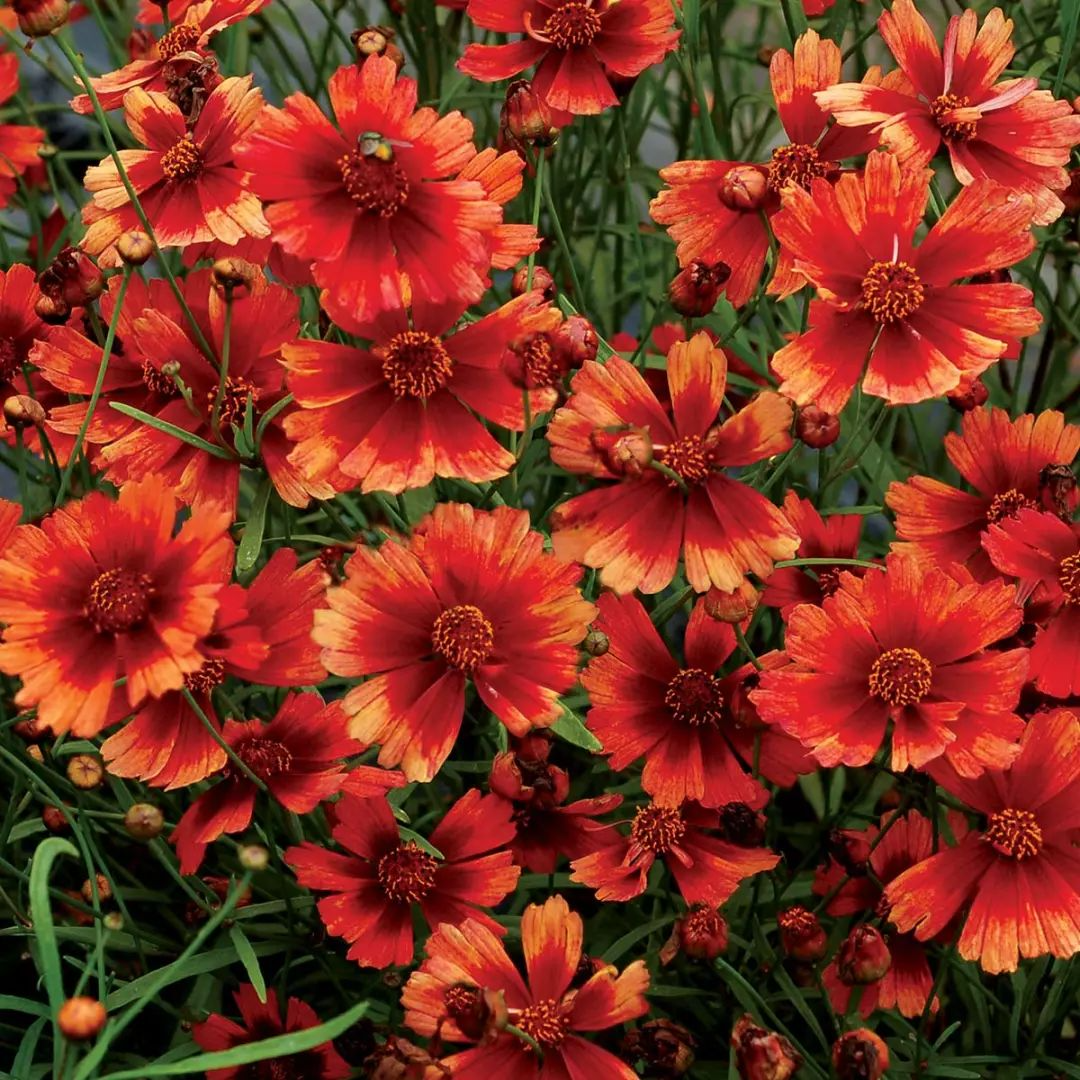
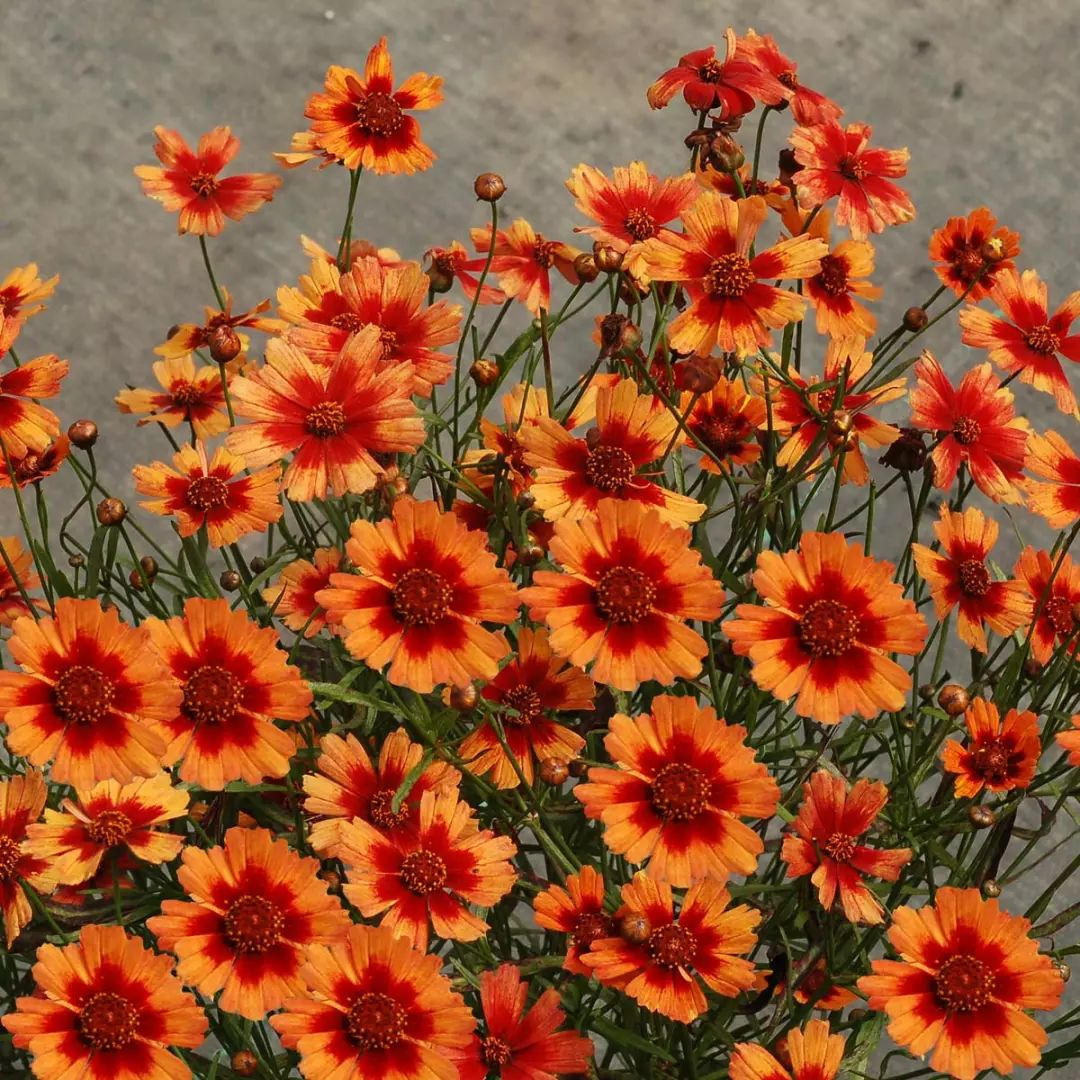
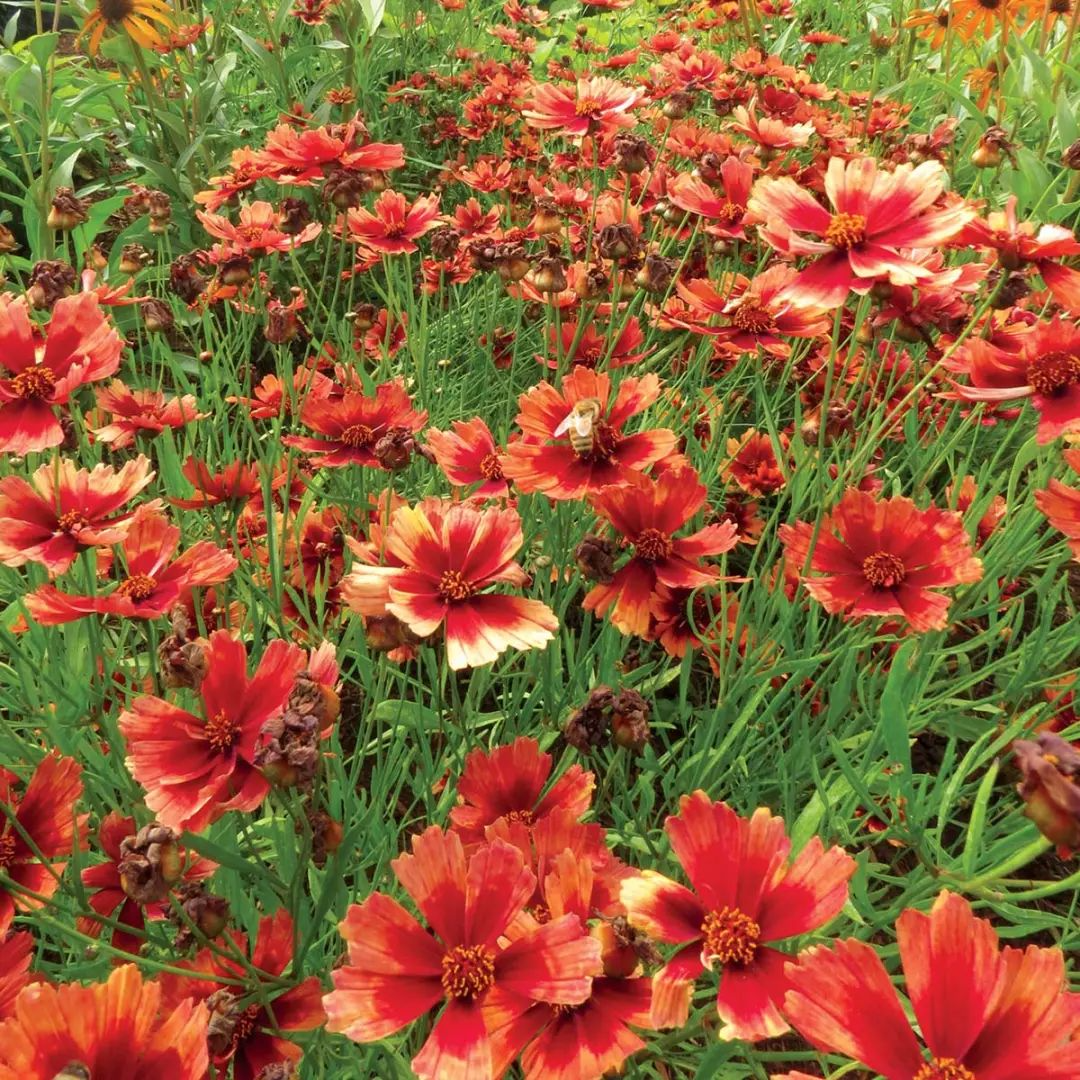
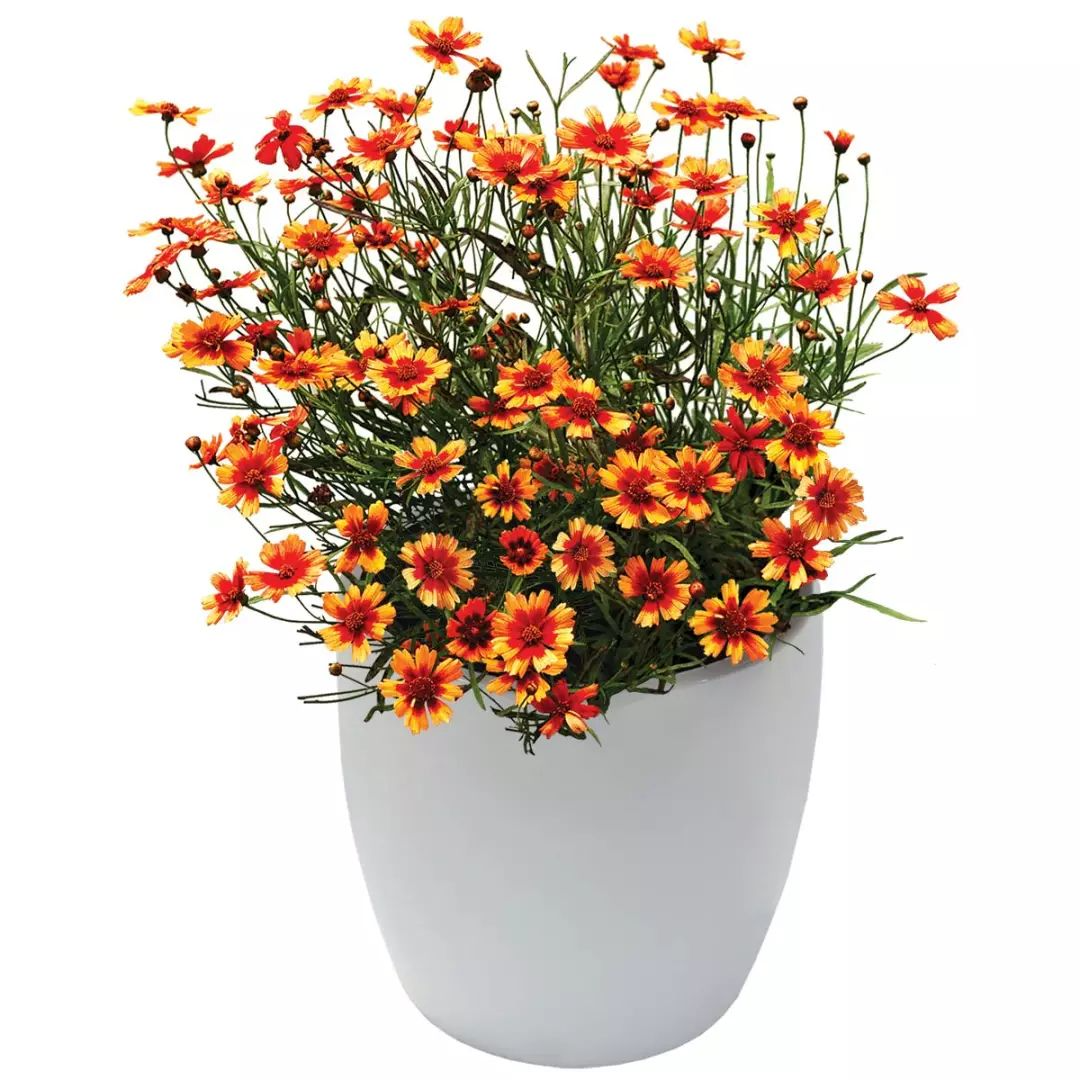
A long perennial plant that blooms in sunny areas, 35-45cm tall, forming a dense mass of blue-green foliage. Small magenta ray flowers with burgundy bases and orange centres appear from summer to late autumn. Prune in late July to encourage growth, if planted in very fertile garden soil the plant may need some support, if opening in July just cut back by half.
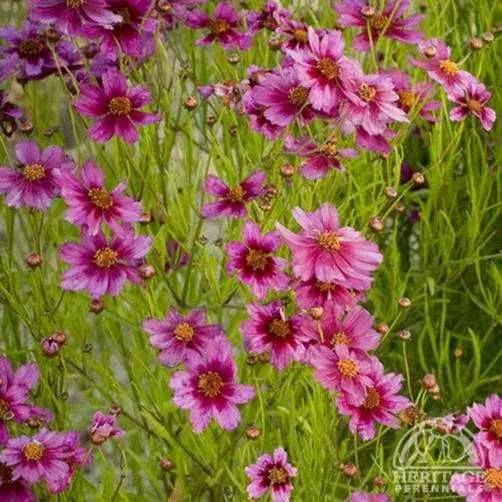
A 10" tall, compact hybrid with perfectly formed dense, linear foliage mounds covered in startling yellow and red bi-color flowers. Beneath the sheer beauty of this plant is the hardiness of the Coreopsis, making it super easy to grow with the added bonus of being powdery mildew resistant! This is definitely one to plant in a front border or in a mixed container. Versatile, simple and fun!
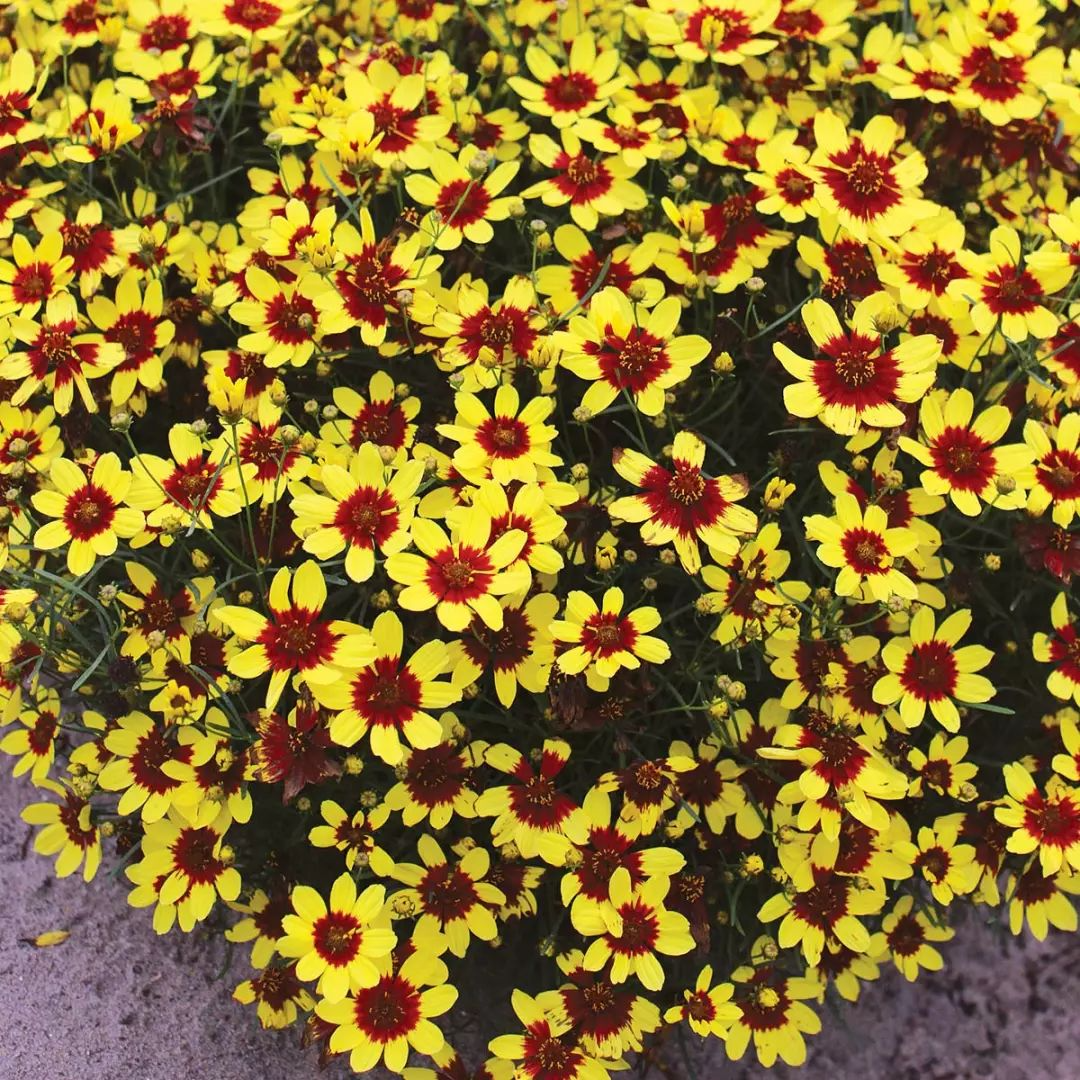
Perennial grown as an annual or biennial, 18" tall, forms a low bush; beautiful pink flowers, bicolor, pale pink on the edges, red in the center. Very free blooming, covering the foliage. Flowers all summer long. A new addition to the popular 'Punch' series.
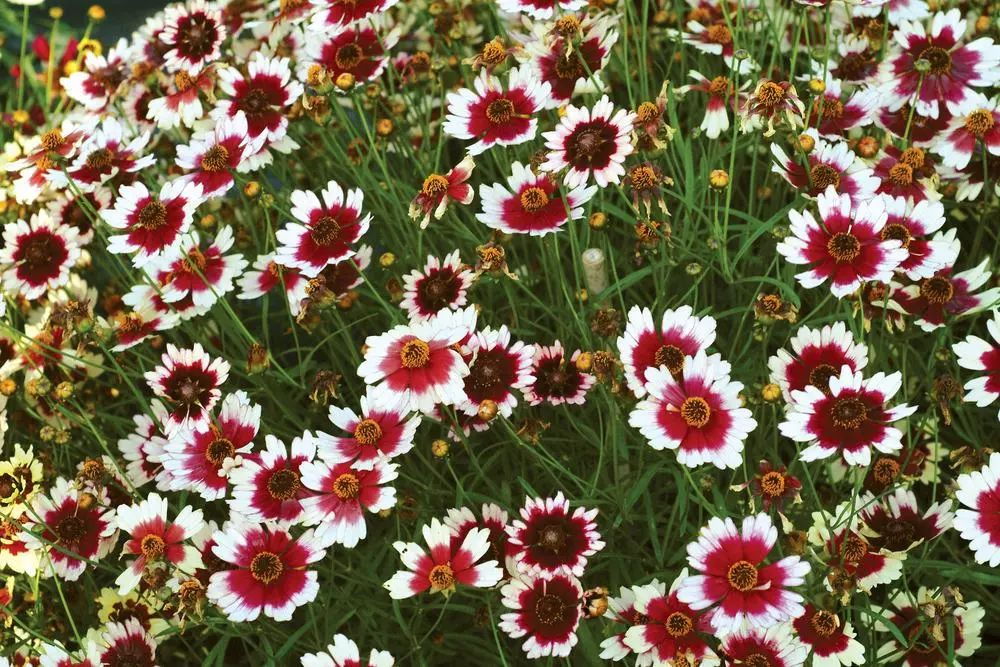
'Galaxy' is quickly becoming a standby perennial for seasons of color and durability.
Forming a low mound of medium-textured leaves. 'Galaxy' has double yellow petals that sparkle against green foliage, and the semi-double daisy-like flowers have golden petals surrounding an orange center. This plant is smaller than the others in the series, at 12 inches tall and 12 inches wide, making it a great foreground plant for the border.
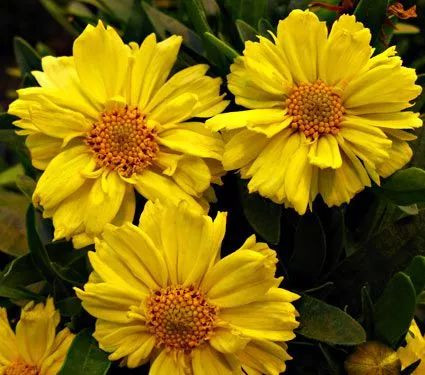
Compact plant with many garnet-red flowers on foliage. Great for mixed landscapes. Freshens up low-maintenance areas. Great in containers, mixed plantings or edging. Easy to grow.
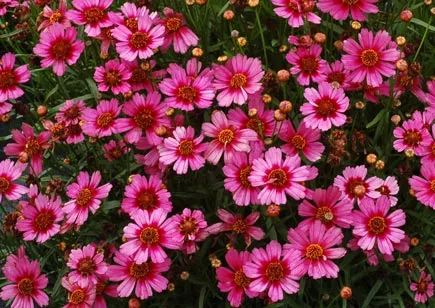
Plant height 50-60cm, large 1.5" golden flowers, each with a fiery red centre, adorn this compact (2ft tall x 32in) mound (over 200 flowers on one plant!) with a long flowering period of 3 to 4 months.
Light-loving, drought-tolerant, moisture-tolerant and heat-tolerant, this is a very long perennial that forms an upright, medium-sized mound of bright green fern-like leaves. Goldenrod blooms from early summer to late fall, lightly prune the plant in July or August to encourage reblooming when bloom begins to wane. Perfect for the middle of a sunny border, in a mass or planted in a mixed container.
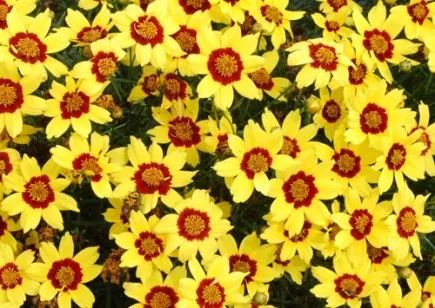
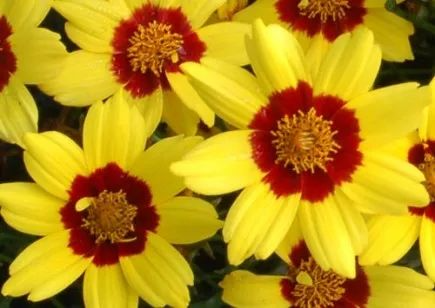
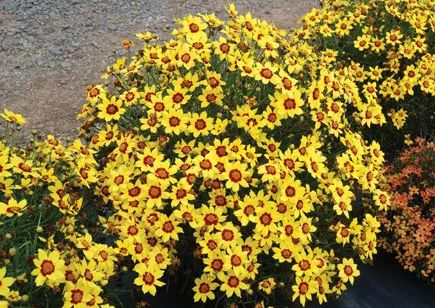
The best habit ever for a hybrid. Plants are 10" tall and form a uniform, tight, rounded clump with lots of red and gold bicolor flowers that bloom all summer long. Delightful.

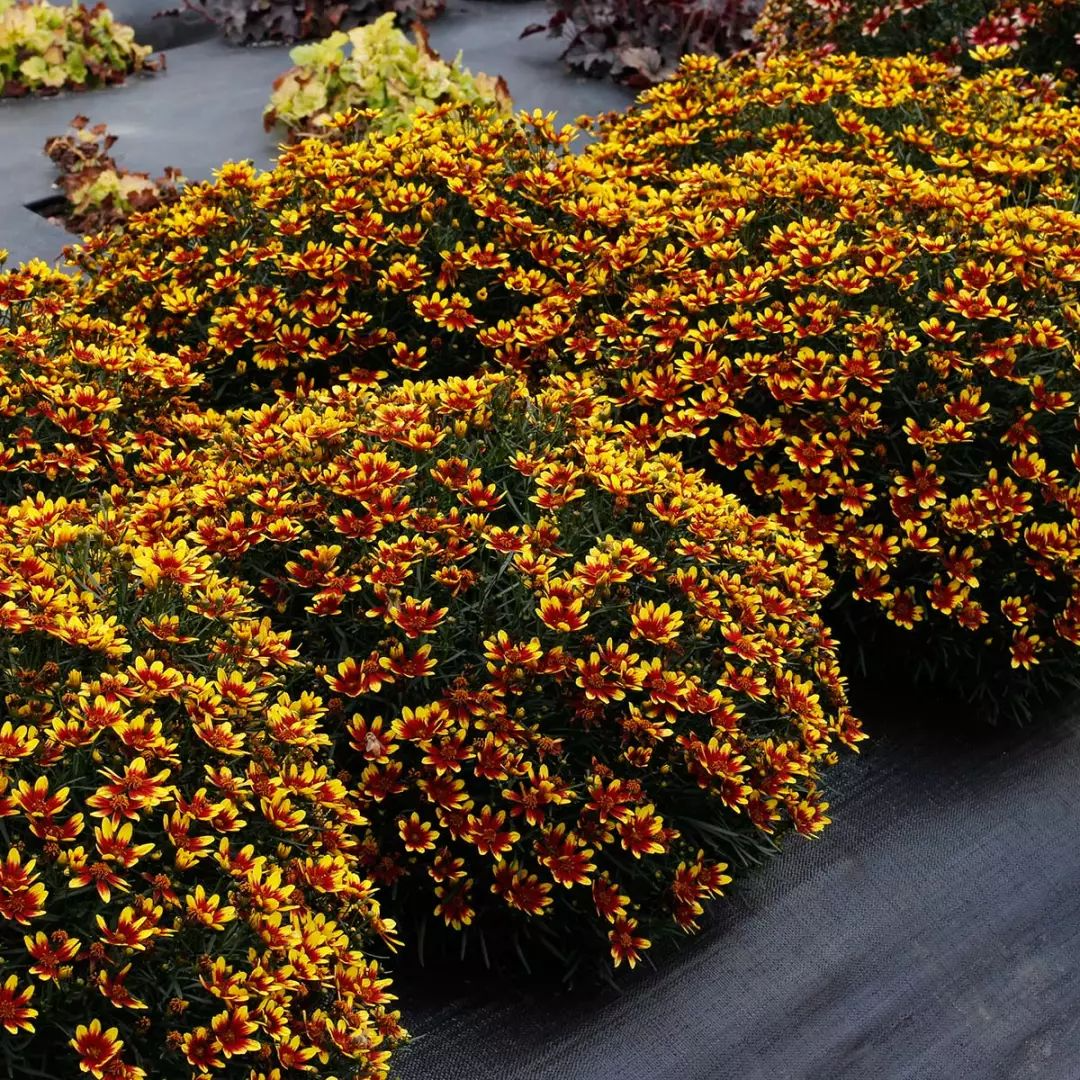
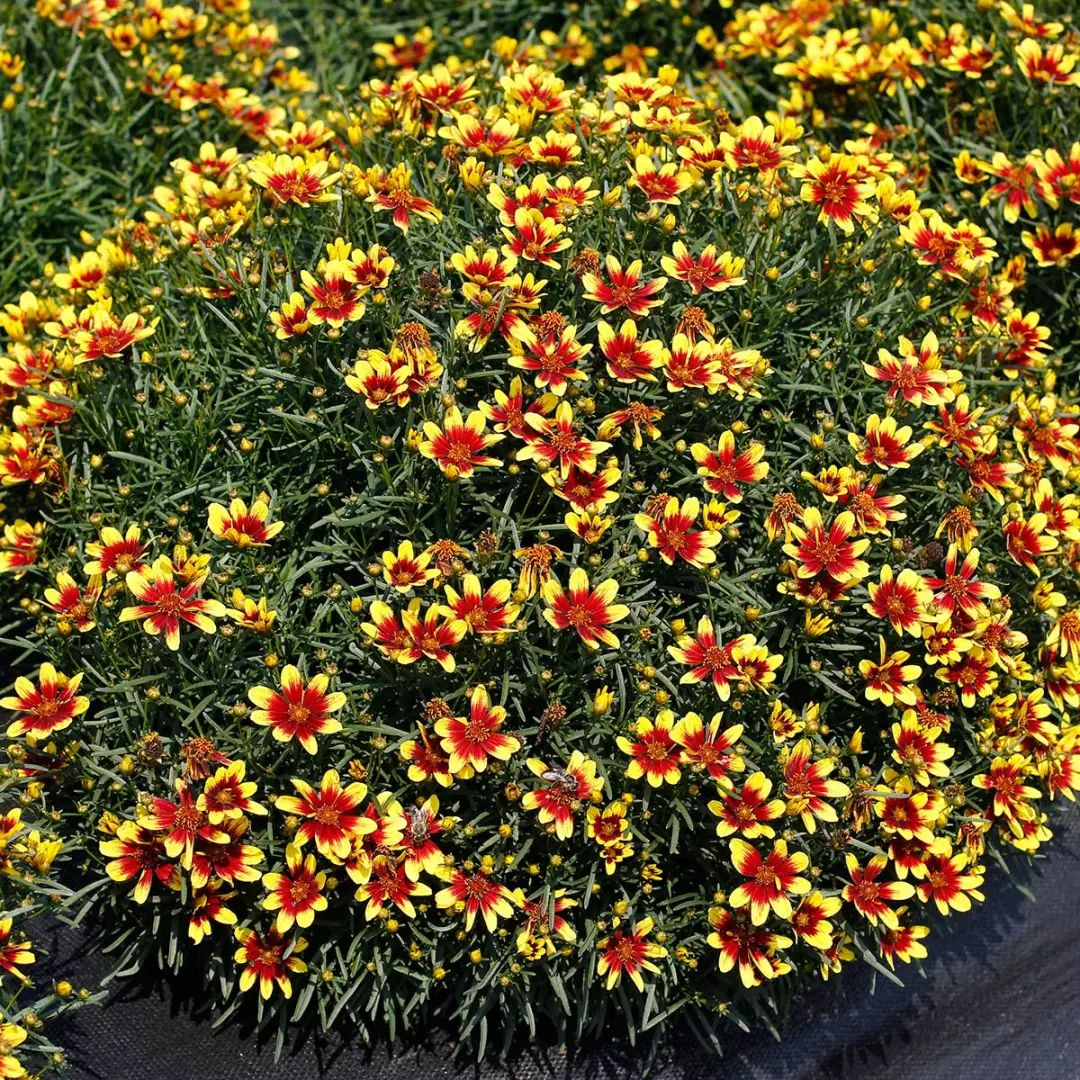
A one or two year old, light loving, heat tolerant plant, this plant displays a wonderful display of ringed flowers in cream, claret, burnished red and gold colours that hang gracefully from the branches. Prune for continued flowering, or cut back mid-season to encourage regeneration.
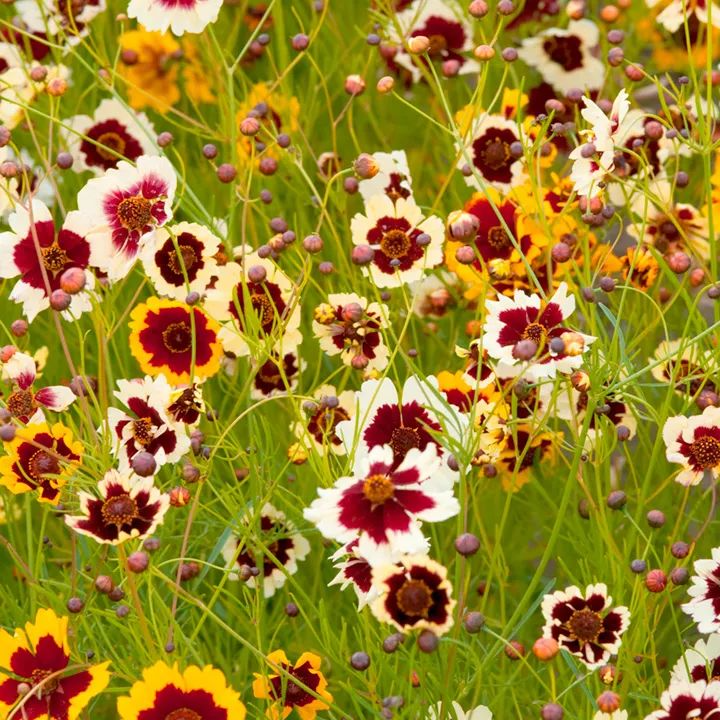
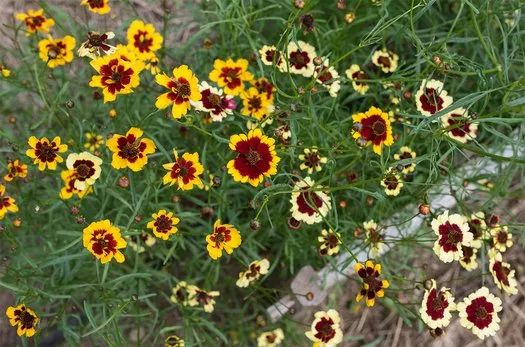
The perennial is cultivated as an annual or biennial. The outer edge of the ligulate flowers is white wine color, and the root is saturated burgundy red.
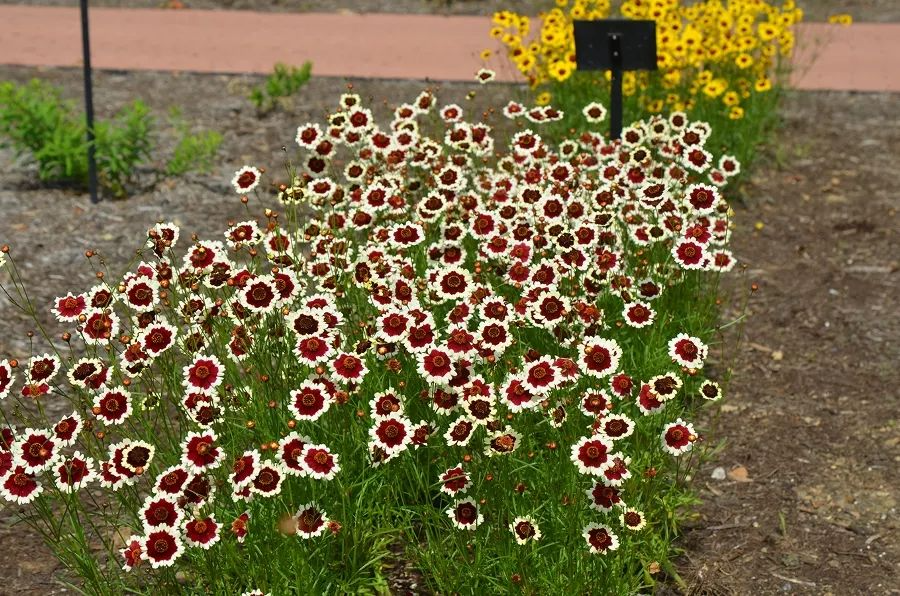
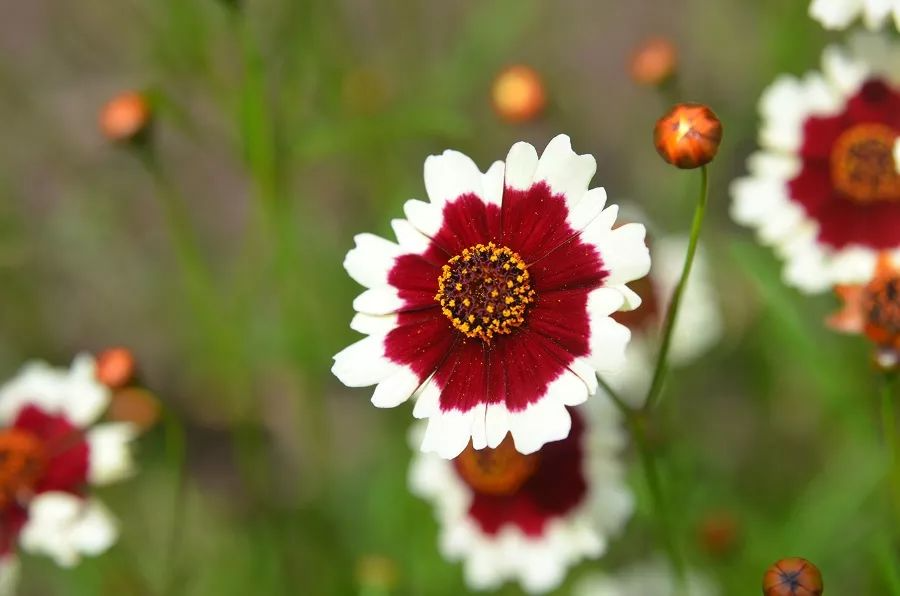
This new hybrid is very popular. The plant is 10 inches tall and, like the traditional Coreopsis, it is hardy, but 'Ladybird' is more compact and more resistant to powdery mildew. In summer, the flower stems extend about 10 inches above the bright green leaves, dotted with red flowers. The ligulate flowers have orange-yellow edges, making it a wonderful flower ornamental in the garden.
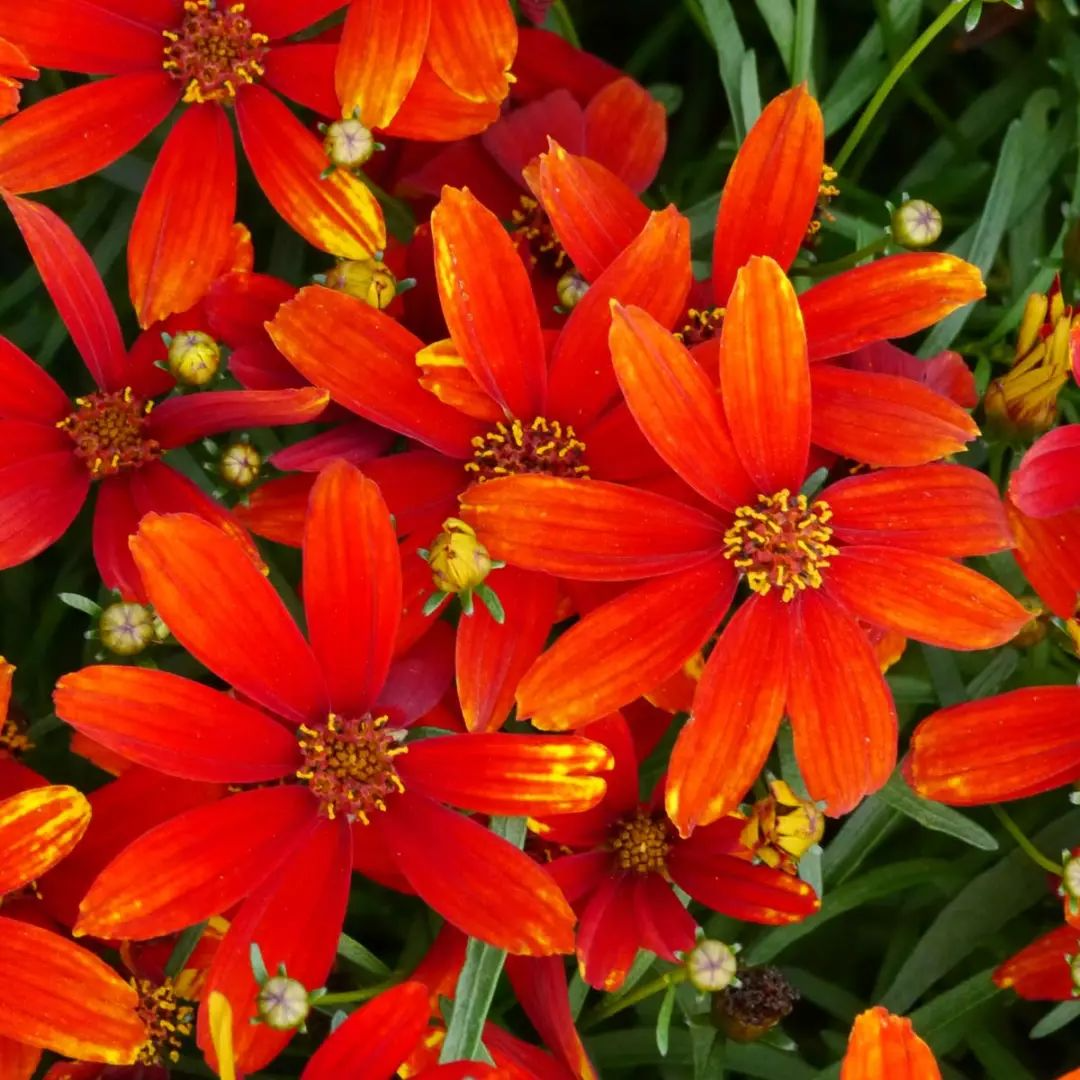
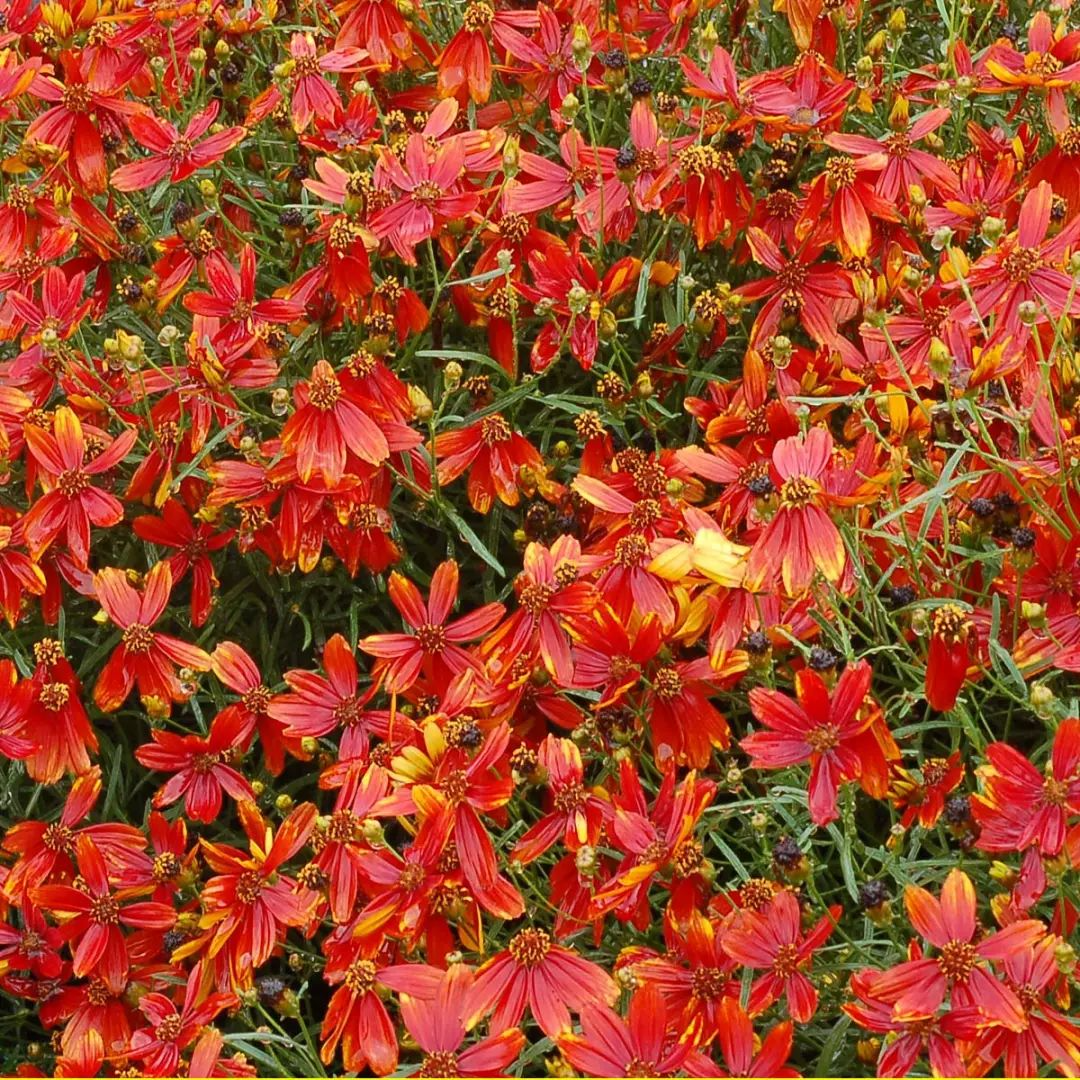

The soft yellow flowers are lightly fluted and kissed with rose pink. The lacy foliage provides a nice backdrop for the one-inch free-standing blooms.
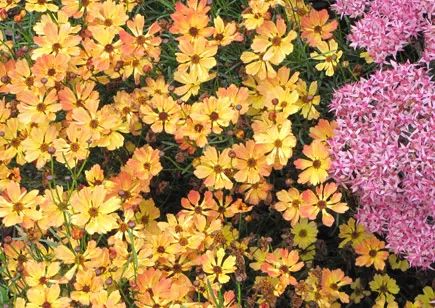
Plants are 10" tall and covered with large, golden flowers with red centers. The flowers cover the plant in a low, compact habit (similar to 'Firefly'). Loved by bees and butterflies.
Like 'Firefly' but with red flowers and gold tips. Shorter and denser than the earliest varieties, with smaller flowers. Has good mildew resistance.
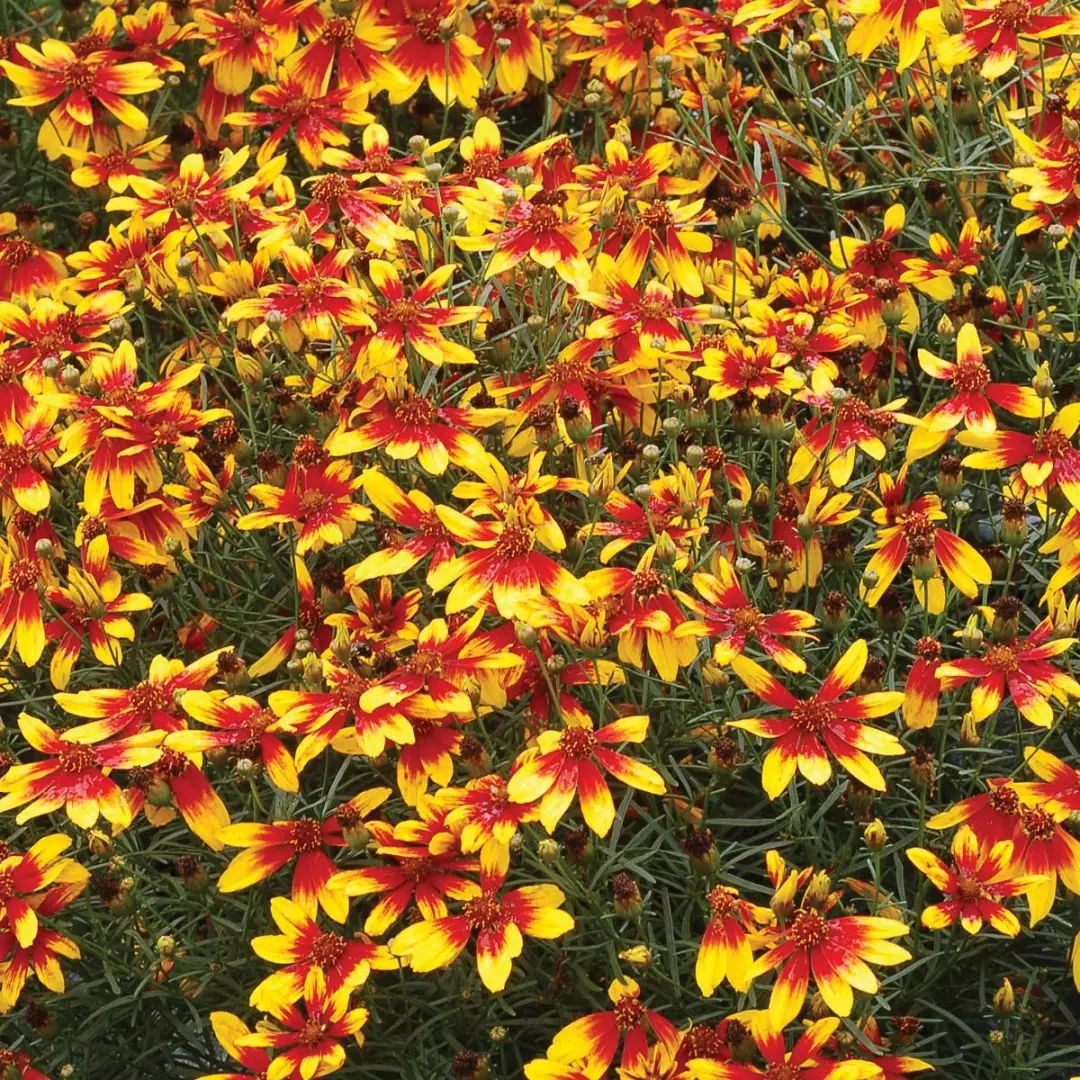
A very long flowering perennial for sunny areas.
The plant is 15-25cm tall and forms a narrow, upright, compact clump with narrow, dark green leaves. Extra large, single, red flowers with a distinctive yellow-orange edge. Blooms all summer long. Has excellent disease resistance.
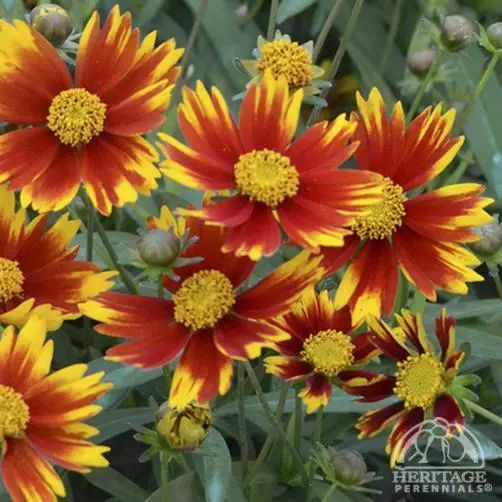
A very long flowering perennial for sunny areas.
The plant is 15-30cm tall and forms a narrow, upright, compact clump of narrow, dark green leaves. The flowers have very large petals and are two-toned; dark pink at the base and light pink or white at the top, surrounding a yellow center. It has excellent disease resistance.
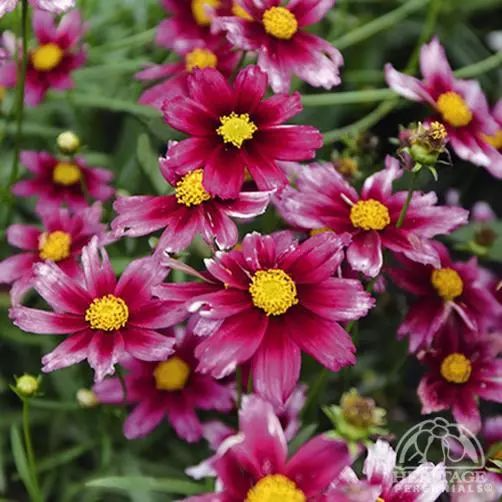
The plant is 30-45cm tall and forms a dense foliage of fern-green leaves with piles of small tangerine to orange daisies, each with a tiny yellow centre, flowering from summer to autumn.
Prefers normal soil to moist soil and full sun. Tolerates heat and humidity. Attractive to butterflies. Prune plants in late July to encourage repeat blooming and keep them compact.
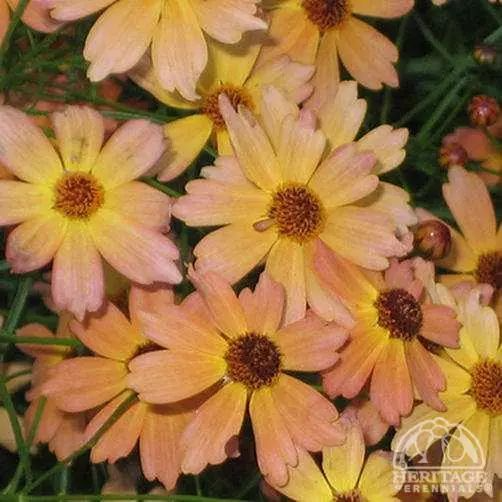
A perennial plant that tolerates moisture and heat, the plant is 40-55cm tall and forms a mound of tufted fern-green leaves with a large number of small pink flowers, each with a tiny yellow centre, flowering from summer to autumn.
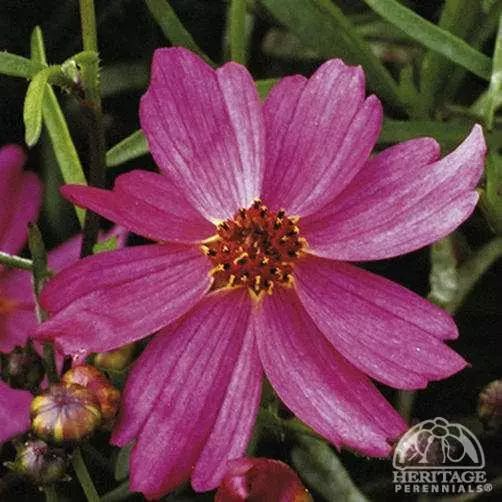
A perennial herb that loves light and has no particular requirements for soil as long as it is well-drained; the plant grows 45-55cm tall, forming a dense pile of fern-green leaves with a large number of daisies on top, which are true ruby red with a small yellow centre, and bloom from summer to autumn, with soft colours.
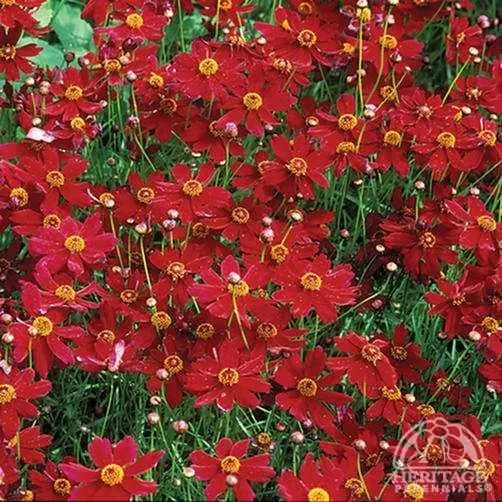
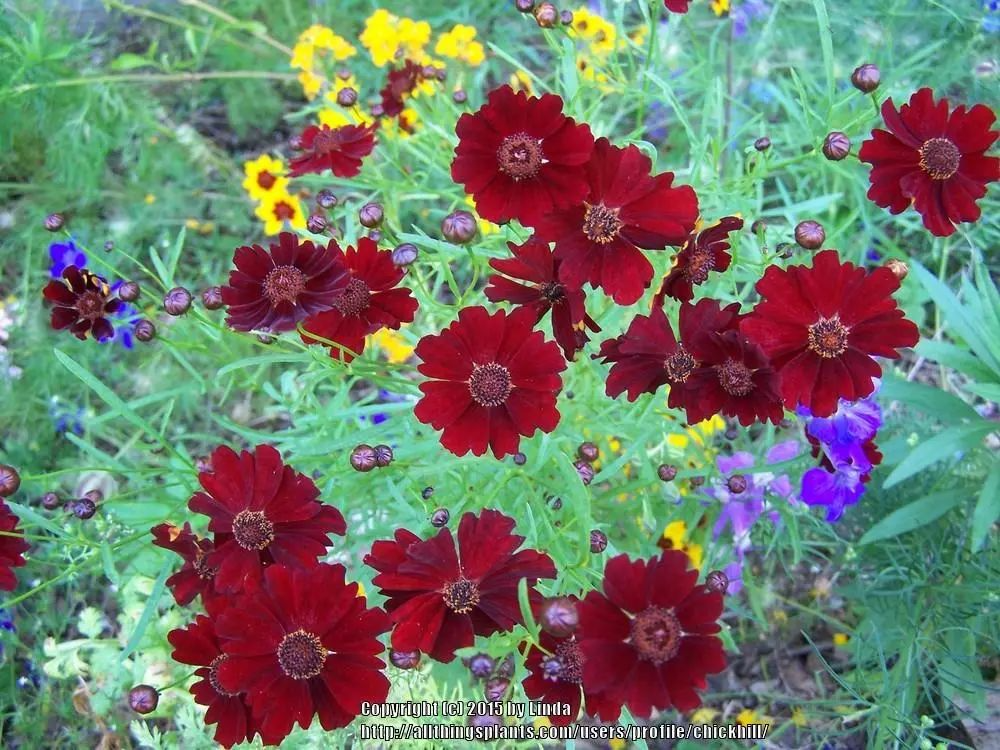
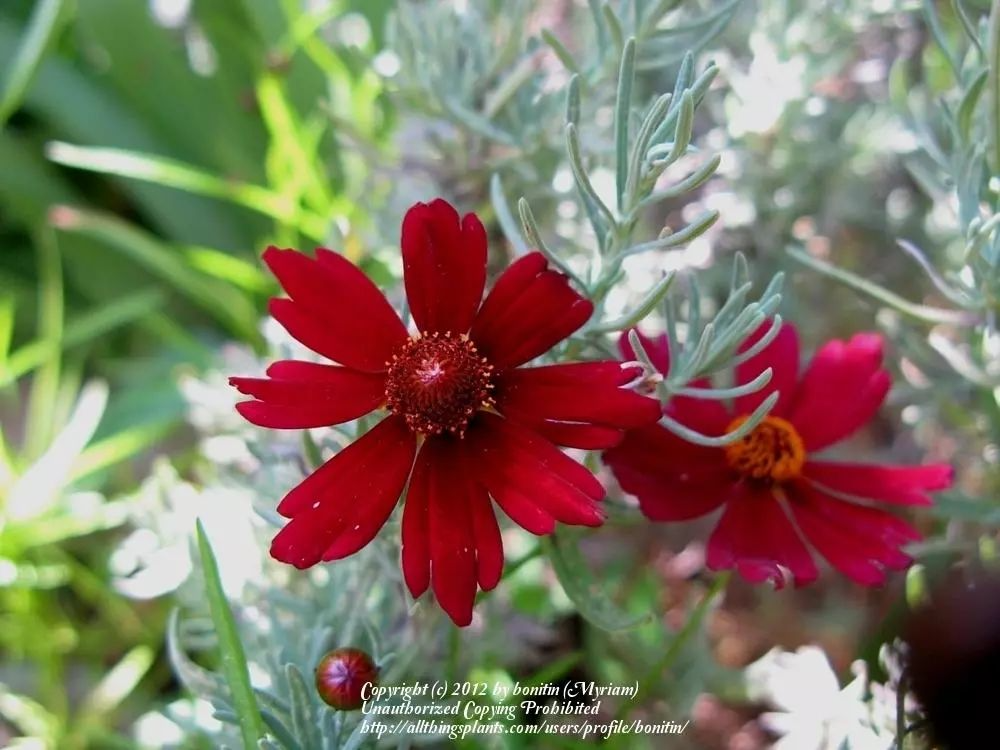
Grown as a perennial or biennial, our most compact coreopsis is a flower machine! Numerous, small, coppery, daisy-like flowers appear freely on a low-growing plant. Blooms all summer long.
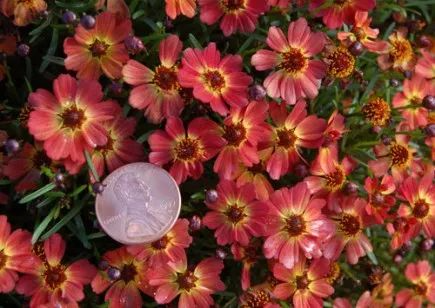
This newest addition to the Majaraja™ series of coreopsis comes in two shades of burgundy red with pale pink and white patches at the tips. Its strengths include hardiness, a clean, pruning habit, an extremely long bloom period, and soft, mildew-resistant foliage.
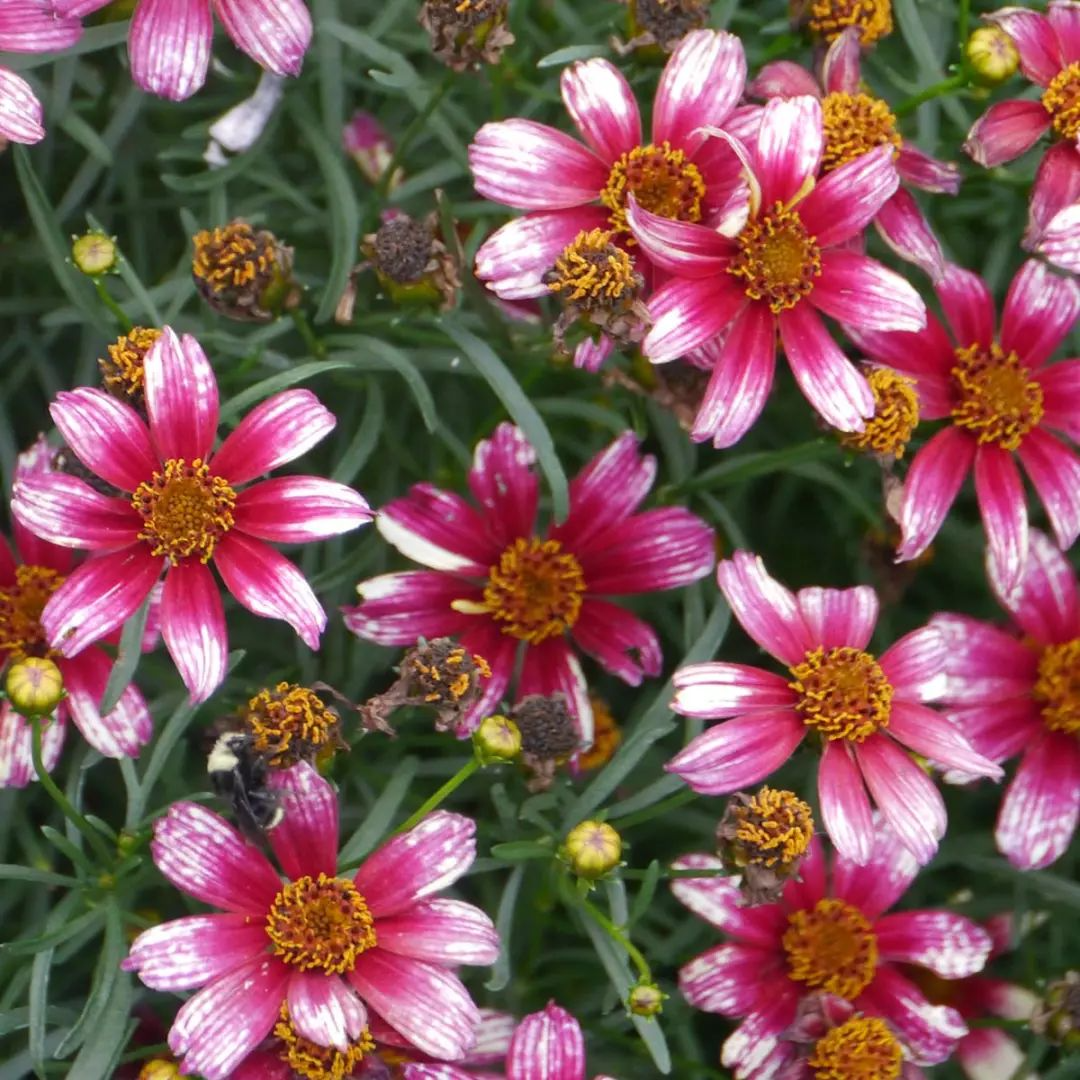
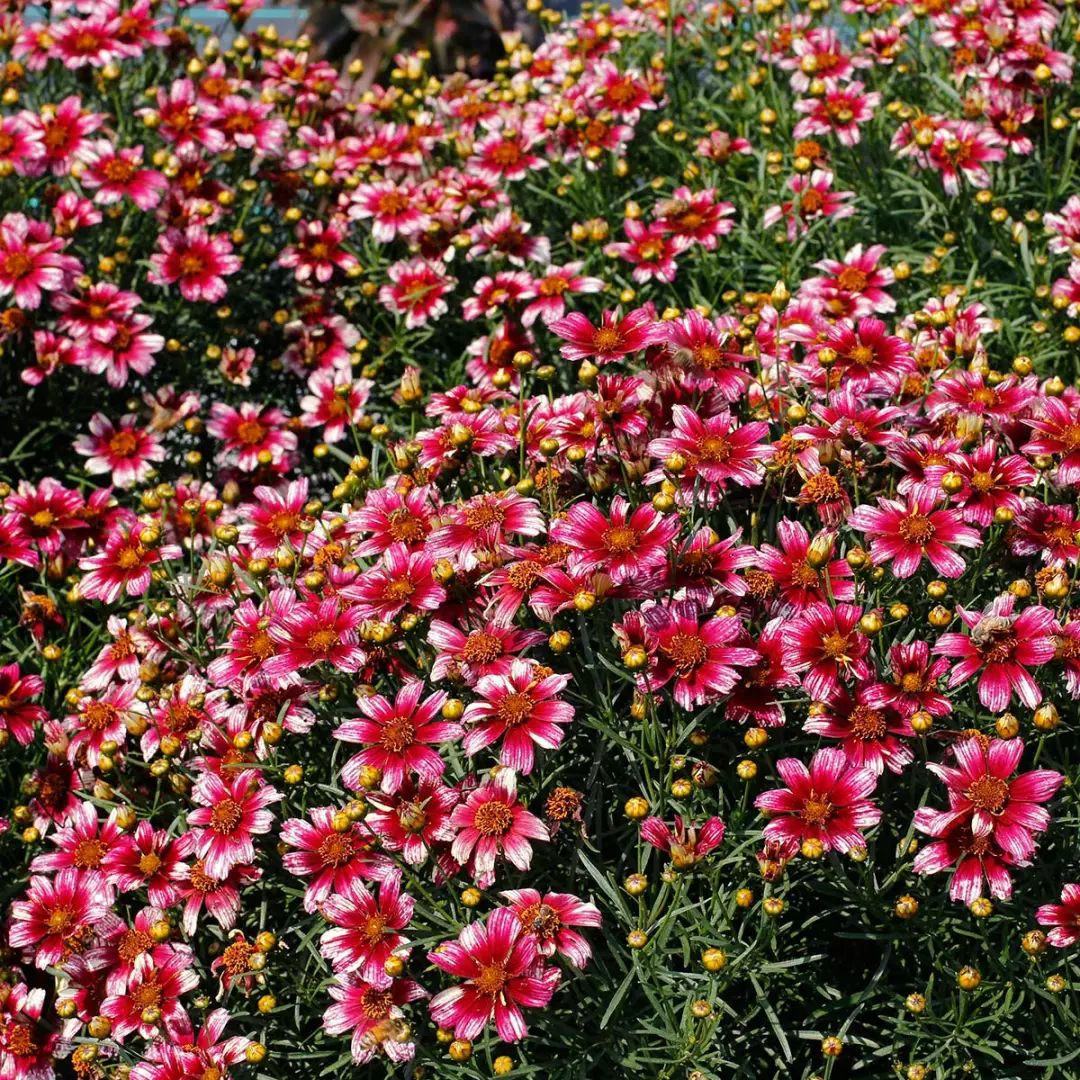
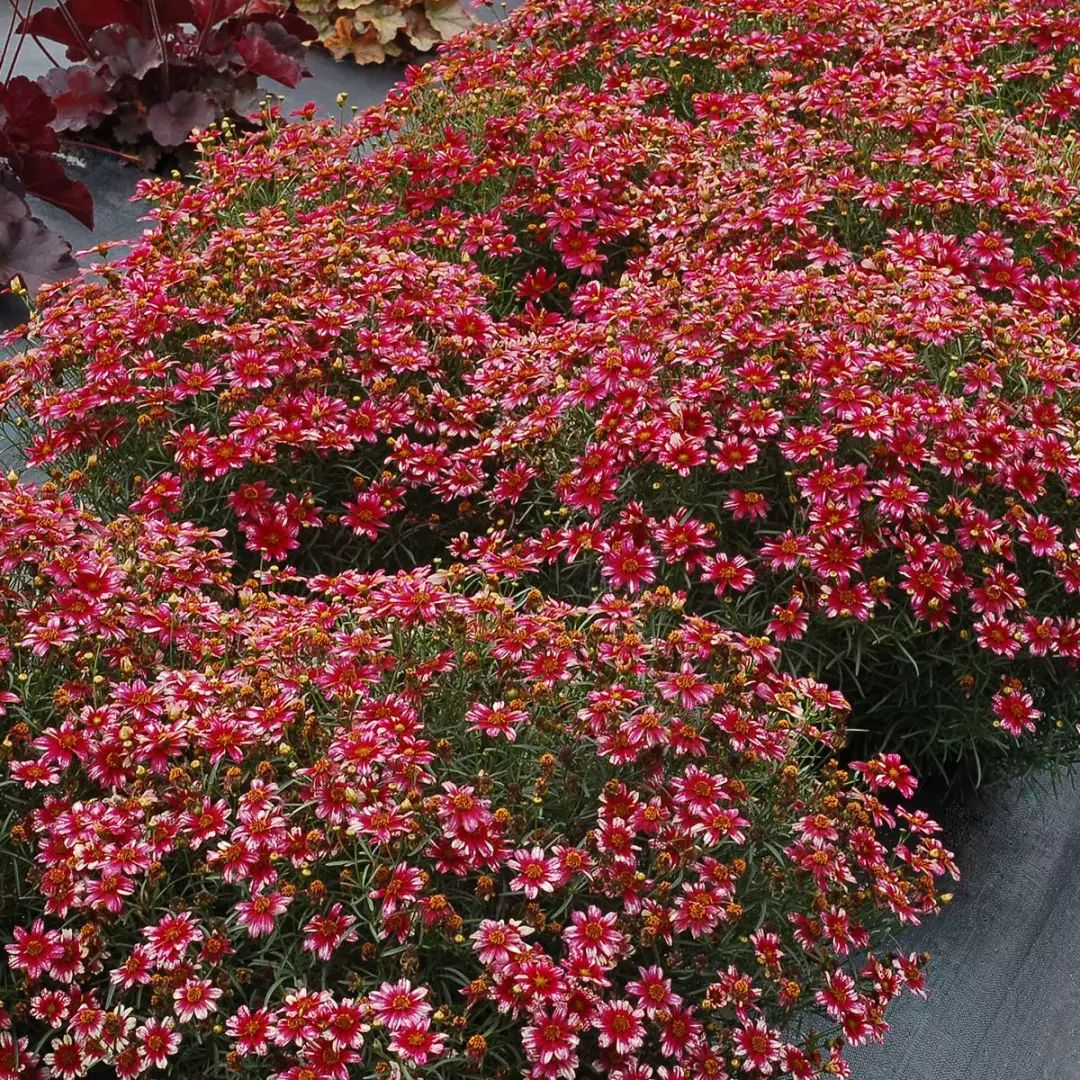
Perennial that can be grown as a biennial, relatively drought tolerant, with luscious mango-orange petals covered in a tint of red. One of the most respected plants in our Coreopsis trials for its truly unique color. An excellent choice in a mixed border or container. Easy to grow.
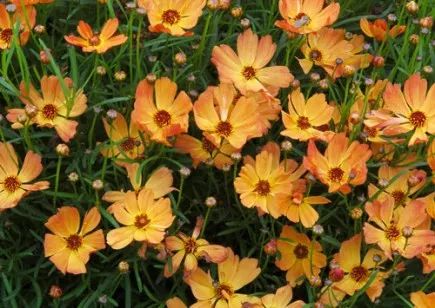
Perennial, forming a narrow, upright clump of medium-textured leaves, producing a seemingly endless supply of velvet wine-red flowers with a gold center and creamy edges. Extra large velvet wine-colored flowers with a contrasting golden-orange center appear from midsummer to mid-fall. Some flowers may be frosty white. The back of the flowers is creamy white with purple stripes. Plants may need some support if planted in very fertile garden soil. One of the Big Bang™ series by American plant breeder Darrell Probst.

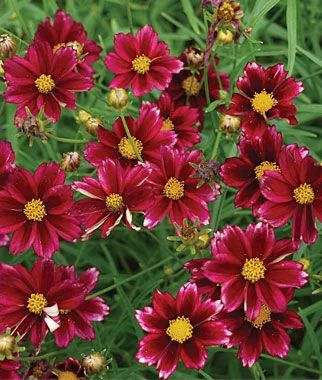
Blooms continuously for 3 months! Can thrive in hot and humid environments.
A perennial plant that forms a dense mass of dark green foliage. Over 150 2" pale yellow flowers, medium-sized pale yellow daisies with a small golden button center, appear from summer to late fall. In the cooler fall months, the flowers turn peachy pink.
It overwinters well with a good deep root system.
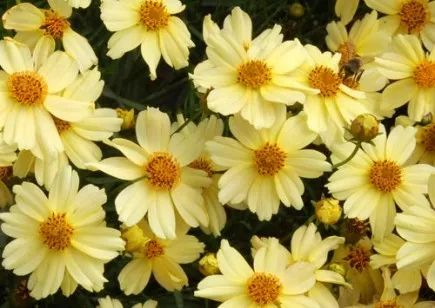
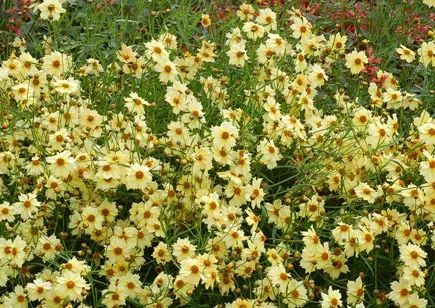
Coreopsis 'Pineapple Pie' forms a low bush about 5 inches tall with many red-centered flowers with golden yellow petals. Very liberal blooming, blooms from early summer to fall. Great for containers, mixed beds or borders. You should try this in your garden!
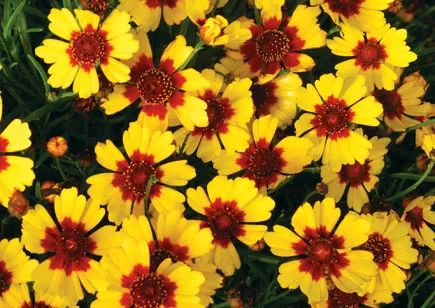

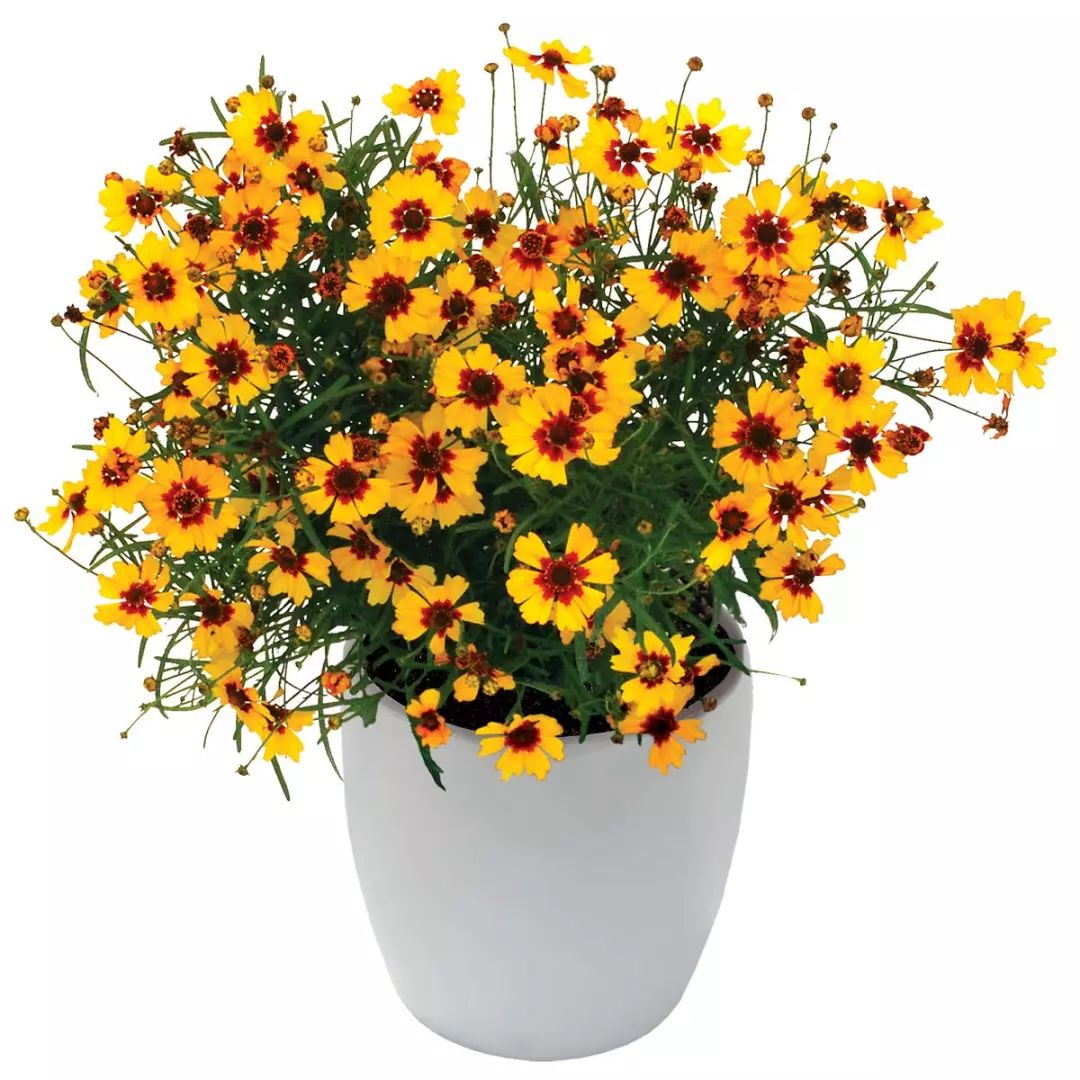
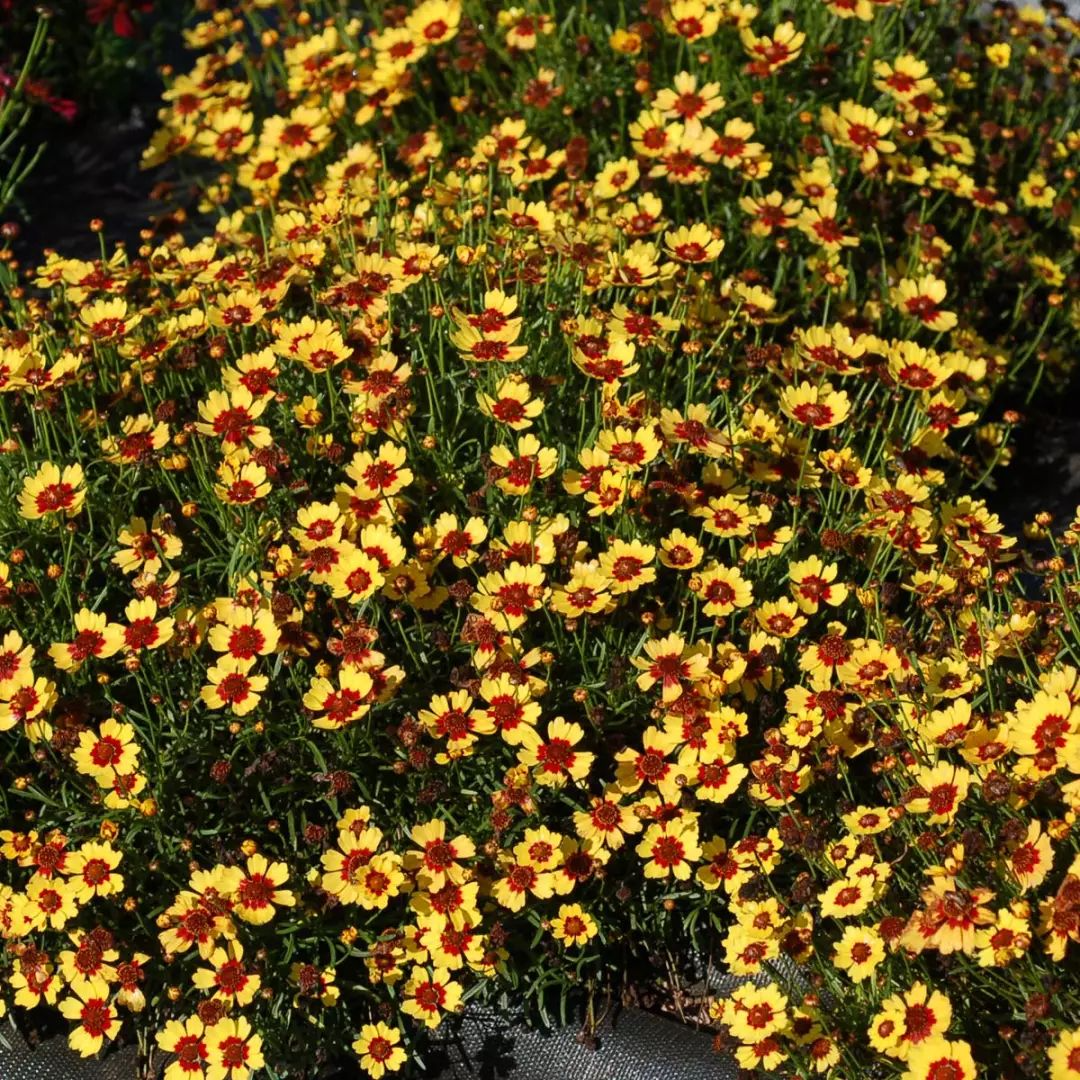
Perennial to biennial, plant height 9" Drought tolerant; bright, warm, golden foliage gives a long season of interest until the pink flowers arrive. Makes a great addition to a mixed border or container.
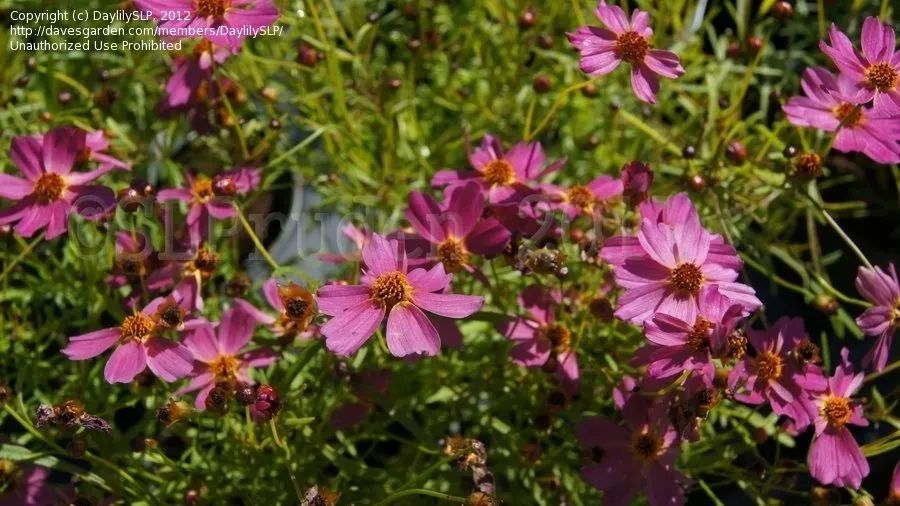
Selected for its hardiness and pink flowers.
The plant is 14" tall, low and compact, with large, rich pink flowers with an icy white ring in the center. Flowers bloom all summer long.
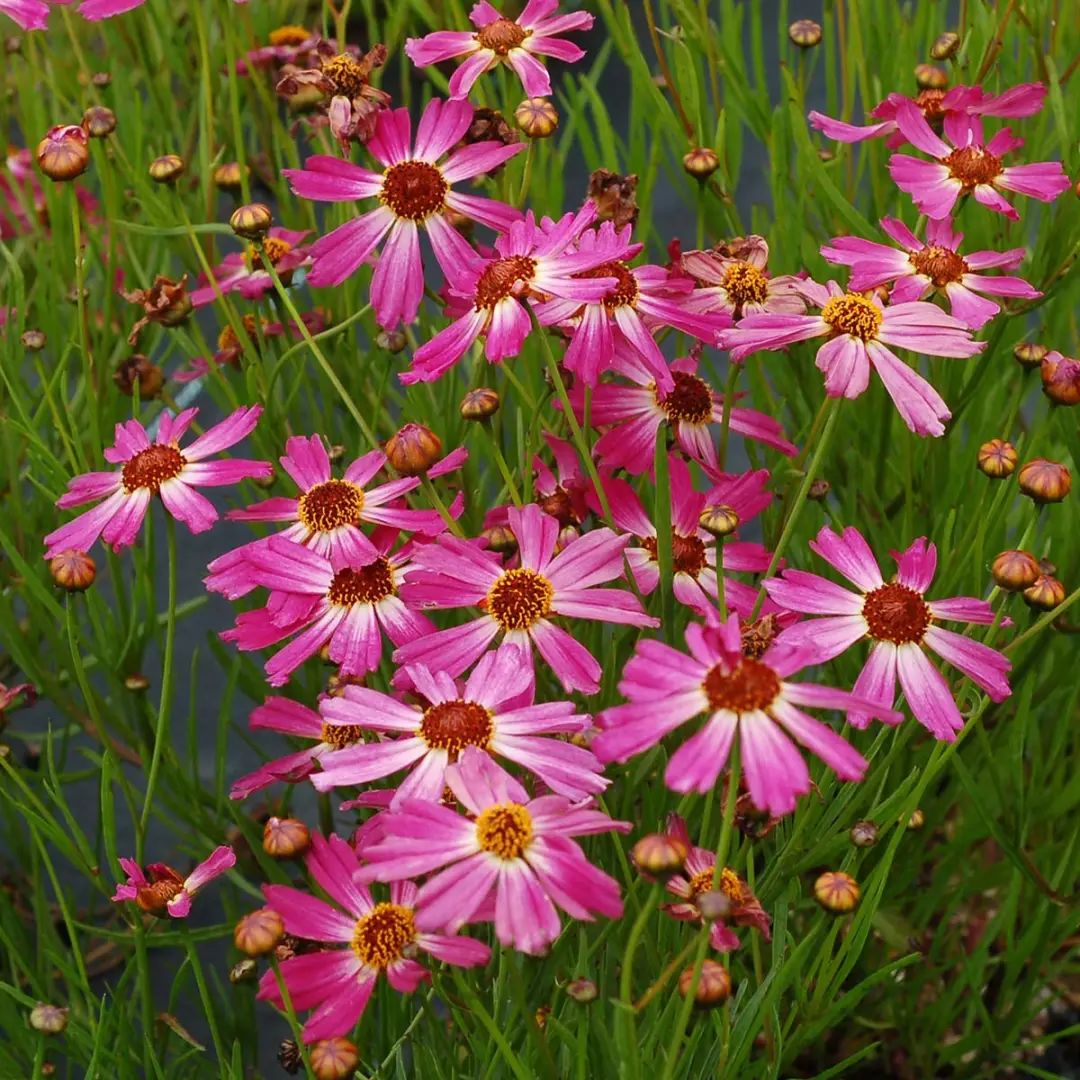
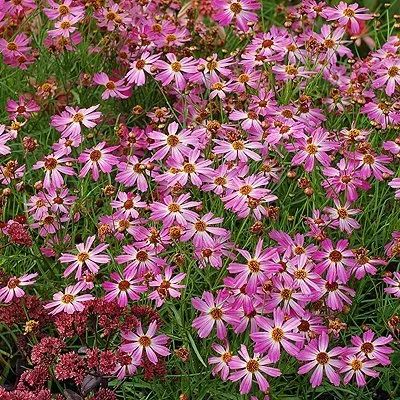
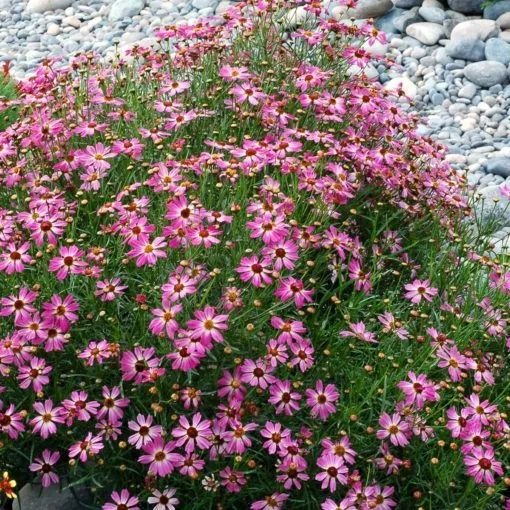
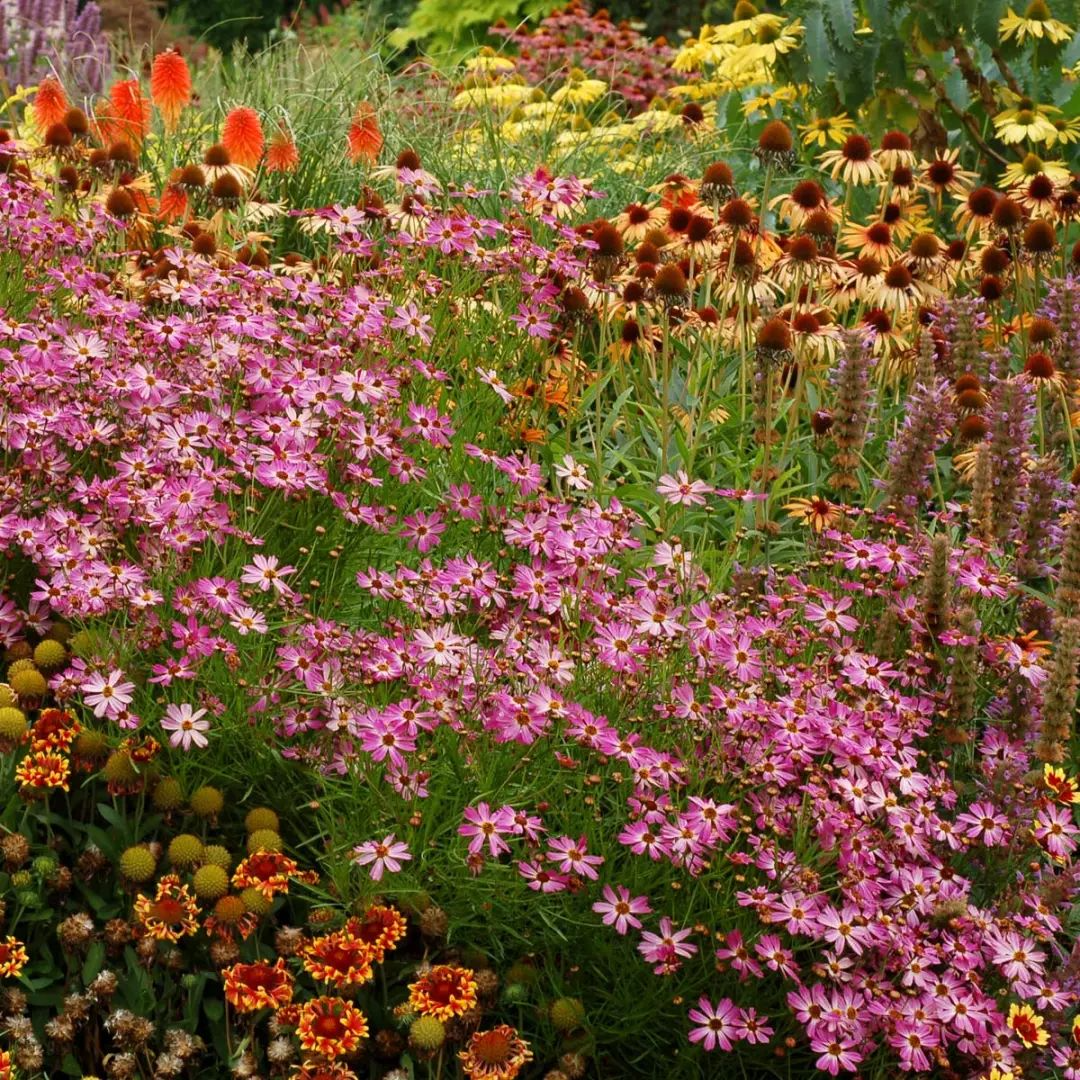
An annual or biennial herb, 5" tall, forms a low bush with pumpkin-orange petals with red centers. Flowers bloom freely from early summer to fall.
It's no longer just for fall viewing. Drought tolerant, it's great in containers, mixed or border plantings.
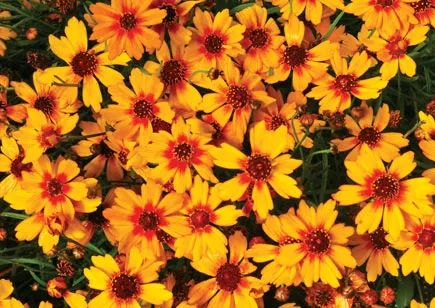
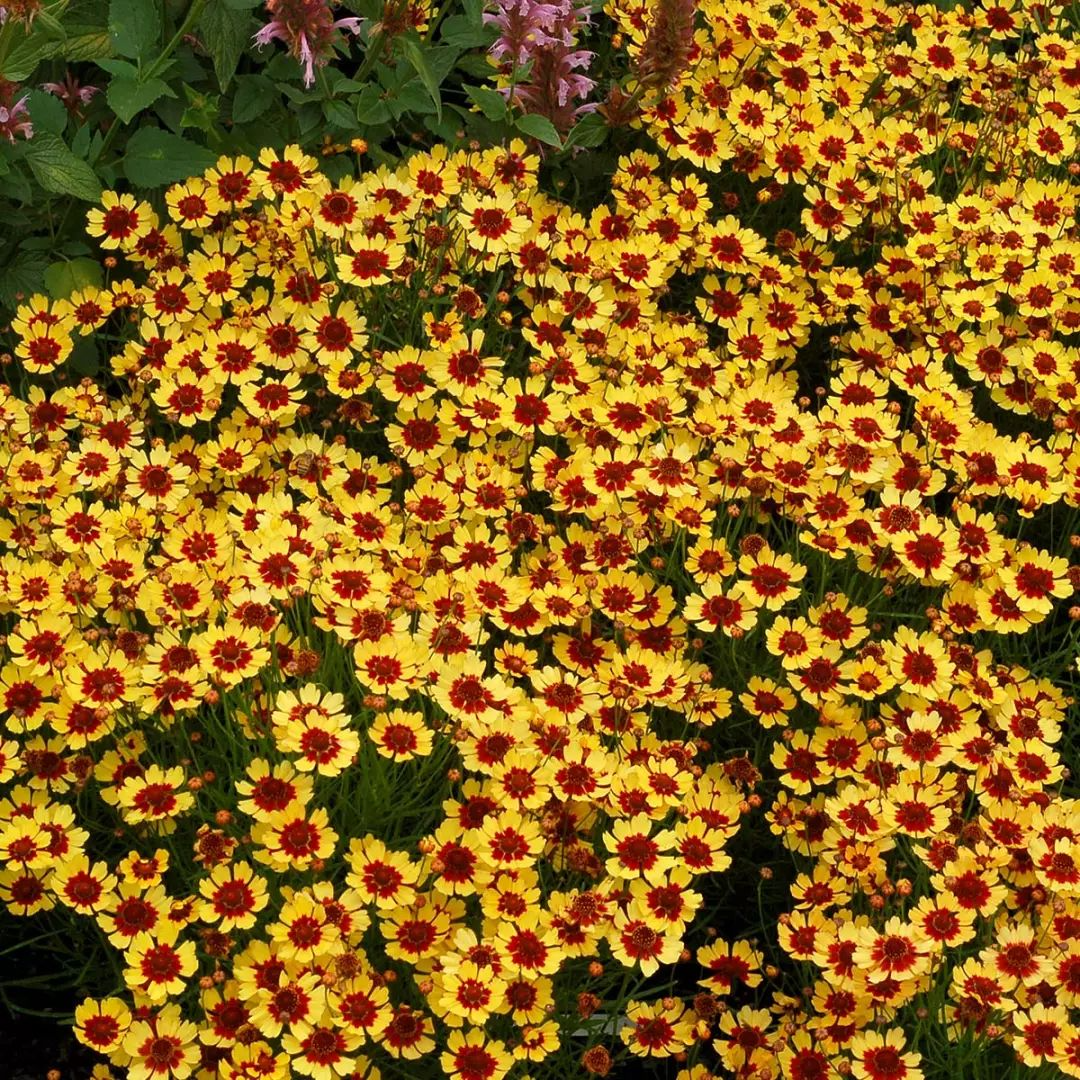
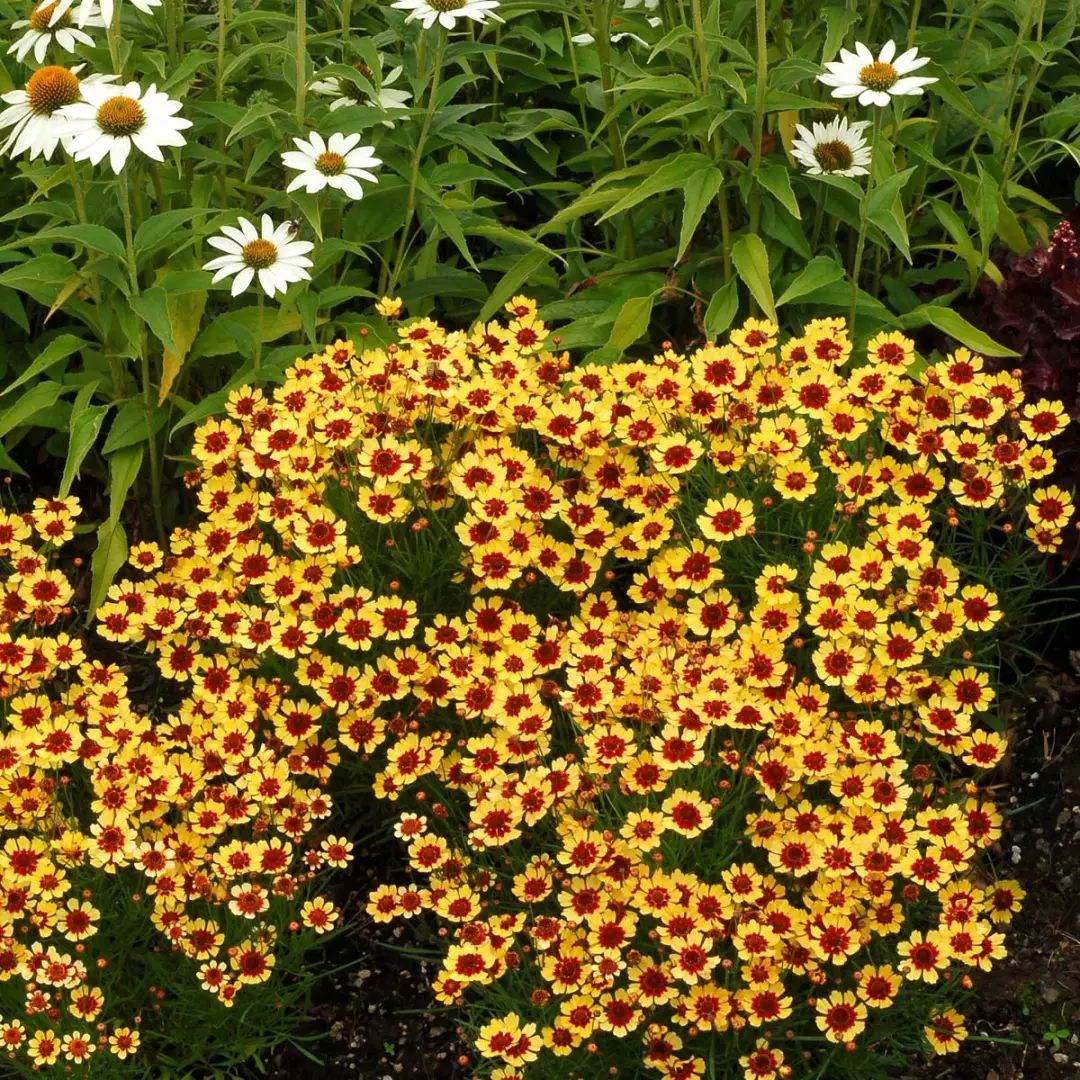
A semi-evergreen perennial with very large, bright red flowers, the crimson petals are tipped with a white frosting in the hottest part of the season, returning to crimson when temperatures are more moderate. This is a long-flowering variety bred by Darrell Probst. Like its larger sibling 'Mercury Rising', but with slightly smaller flowers, 'Red Elf' is a strong perennial variety that blooms year after year.
If you're pleased with the performance of a Big Bang™ Coreopsis, such as 'Mercury Rising', you may also want to try the Li'l Bang™ series from the same breeder, Darrell Probst. These naturally compact varieties exhibit the same disease resistance and long bloom time (blooming a little earlier than the Big Bangs), but are only about half the height. They are perfect for container gardening, rock gardens, and border fronts.
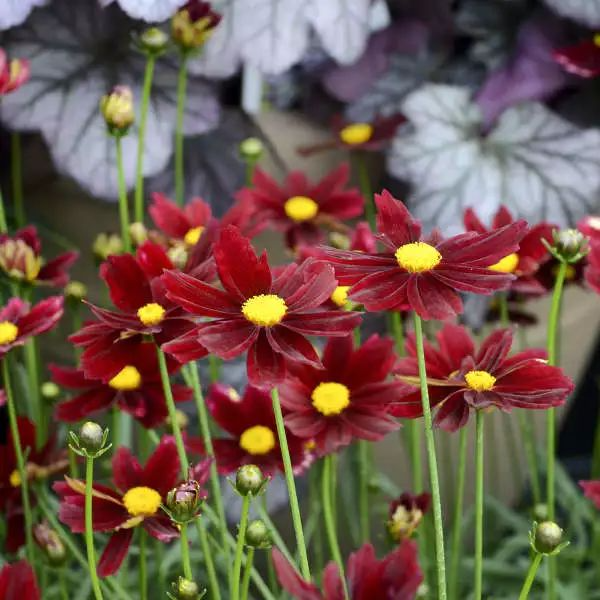
A cold hardy Coreopsis choice, (not to be confused with the long blooming but "annual" hybrids).
The plant is 75-90cm tall. It has creamy yellow flowers with a deep red halo in the center. The flowers are light pink. It blooms from summer to autumn.
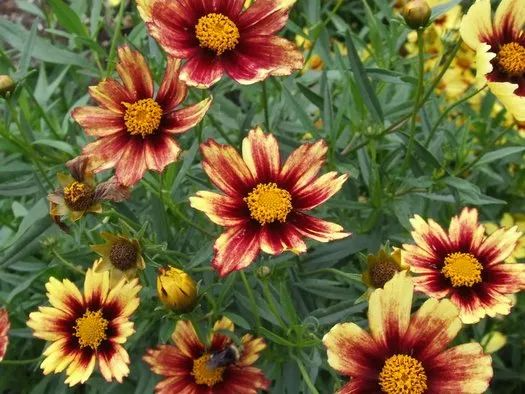
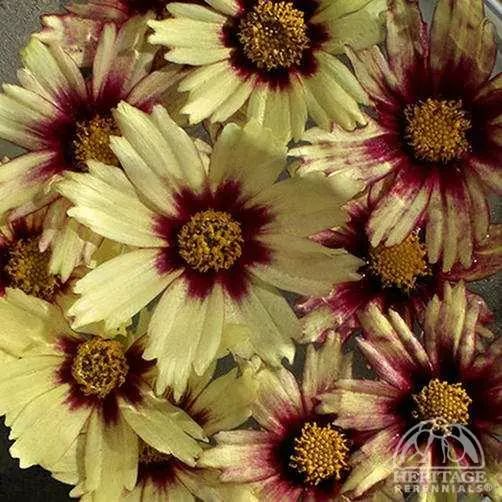
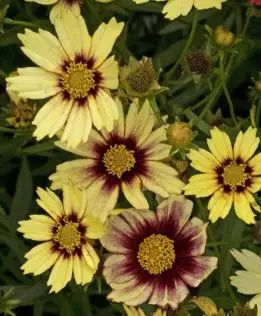
35-45cm tall, forming a very delicate, clump-forming plant, this is the first member of a new series, with masses of deep wine ruby flowers with dark green leaves with orange centres. The colour does not fade in the summer heatwave. Bloom starts in summer and lasts into autumn. Attractive to butterflies. Excellent as a cut flower in the middle of a sunny border, in mixed containers. Cutting back faded flowers encourages bud formation. Heat and drought tolerant, can be divided in early spring.
Bred by Darrell Probst as part of the Permathread™ series.
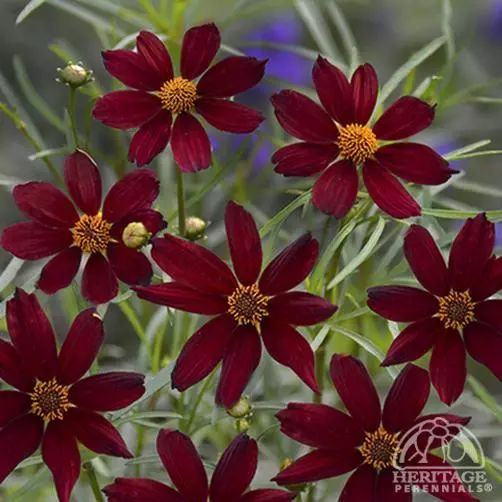
The plant is 16" tall and has large, deep ruby red flowers with a frosty white collar. This plant was featured prominently in Birds and Flowers magazine. In fact, it was named by readers in a 2009 contest.
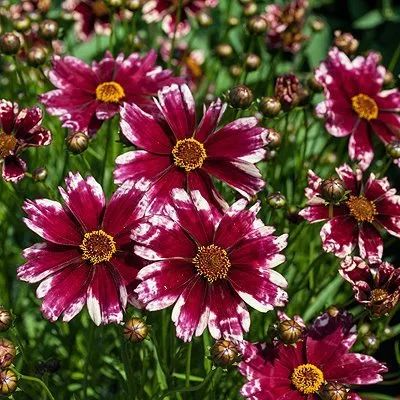
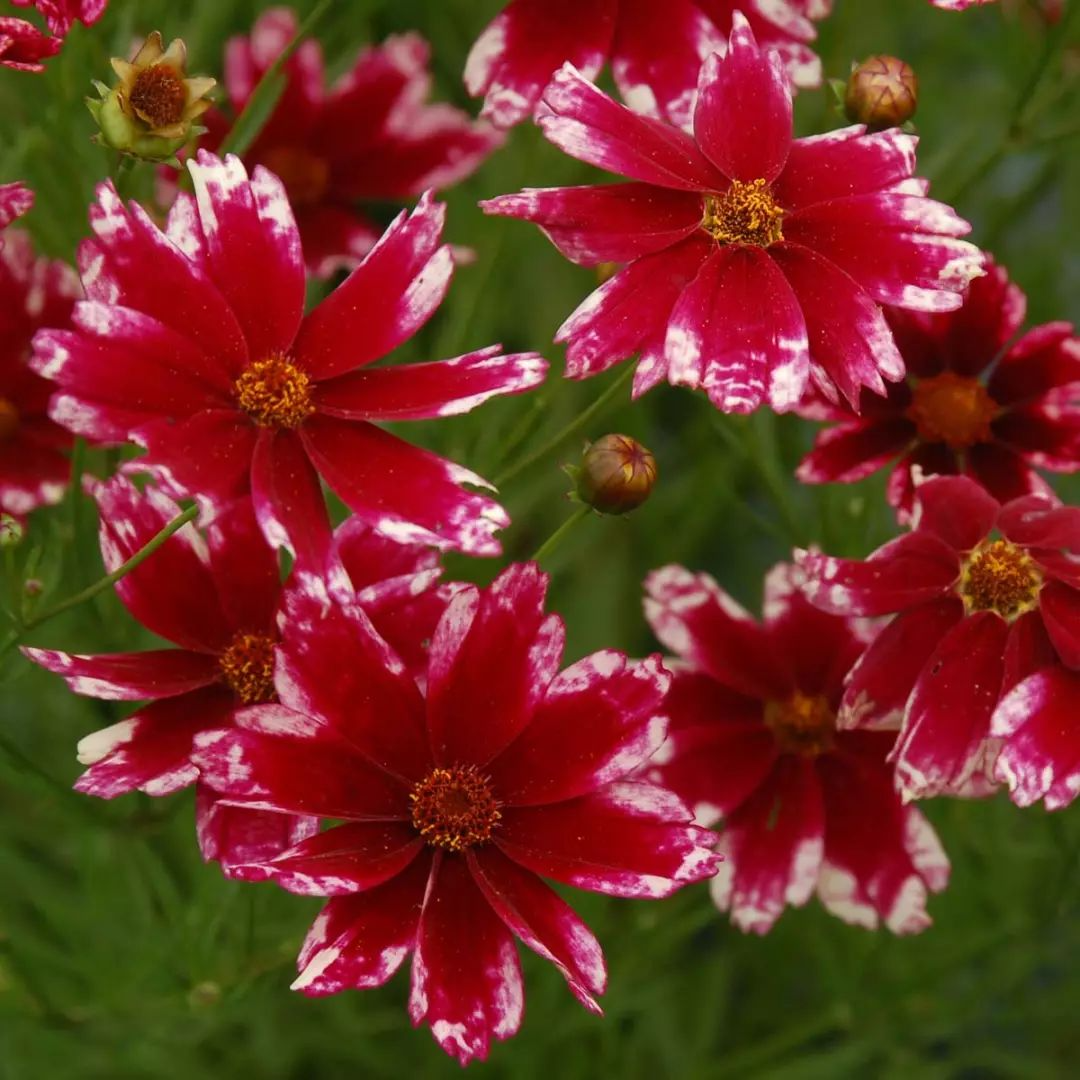
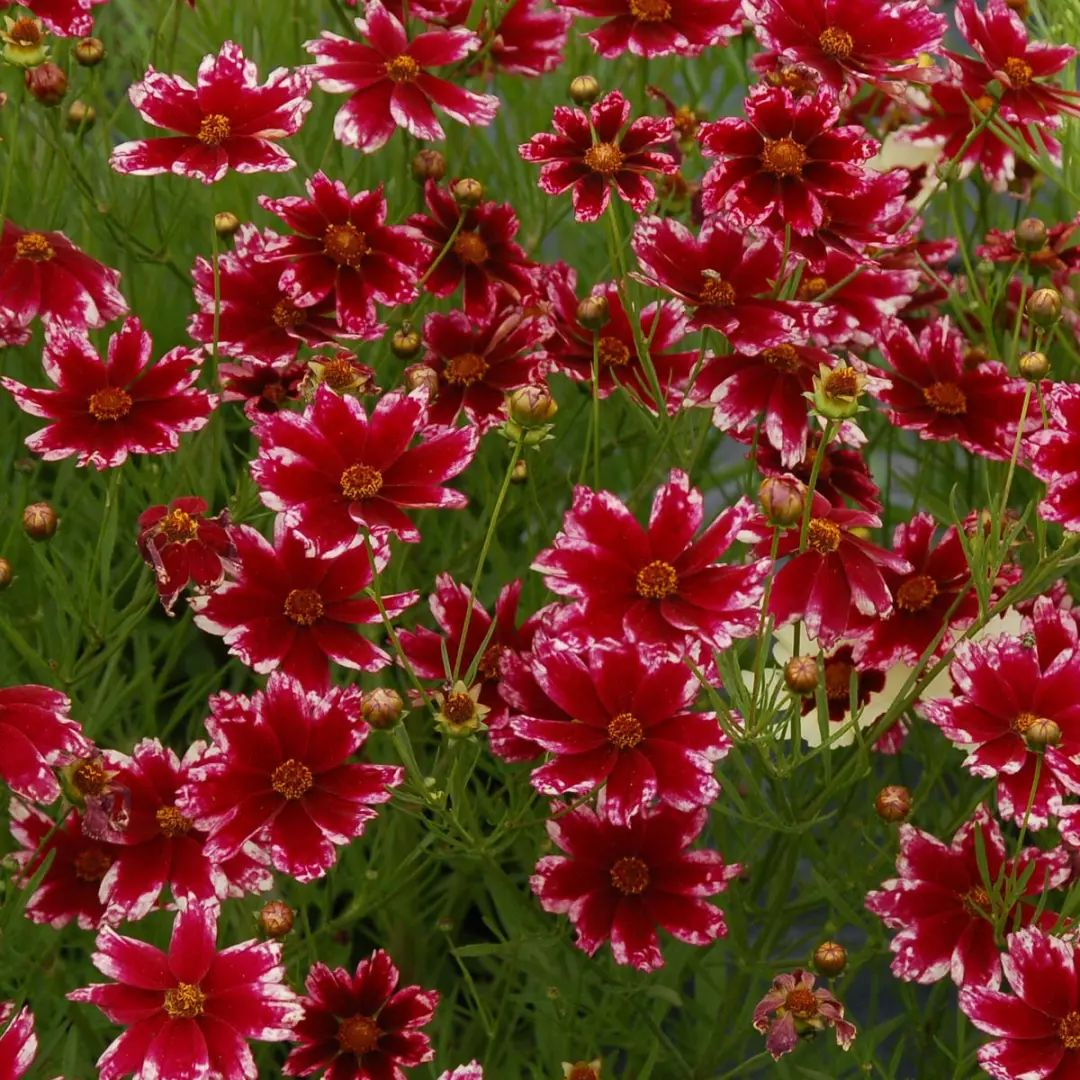

The perennial is cultivated as an annual, is drought-tolerant, and has large quantities of fruit and orange flowers that are nice enough to look at.
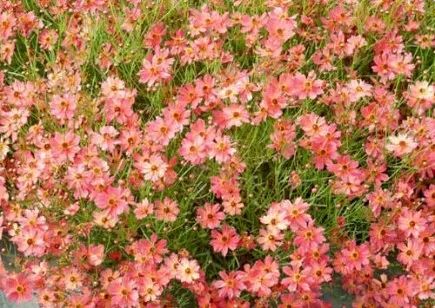
Perennial, 26" tall, forming a dense mass of blue-green foliage. The ligulate flowers are ivory white with wine-red roots and golden centers, like raspberries in the snow, and bloom from summer to late fall.
It is similar to 'Nugget' or 'Autumn Red' in habit, with creamy white flowers and red centers.
Long day plant. If grown too early in winter it will be taller and will need pruning.
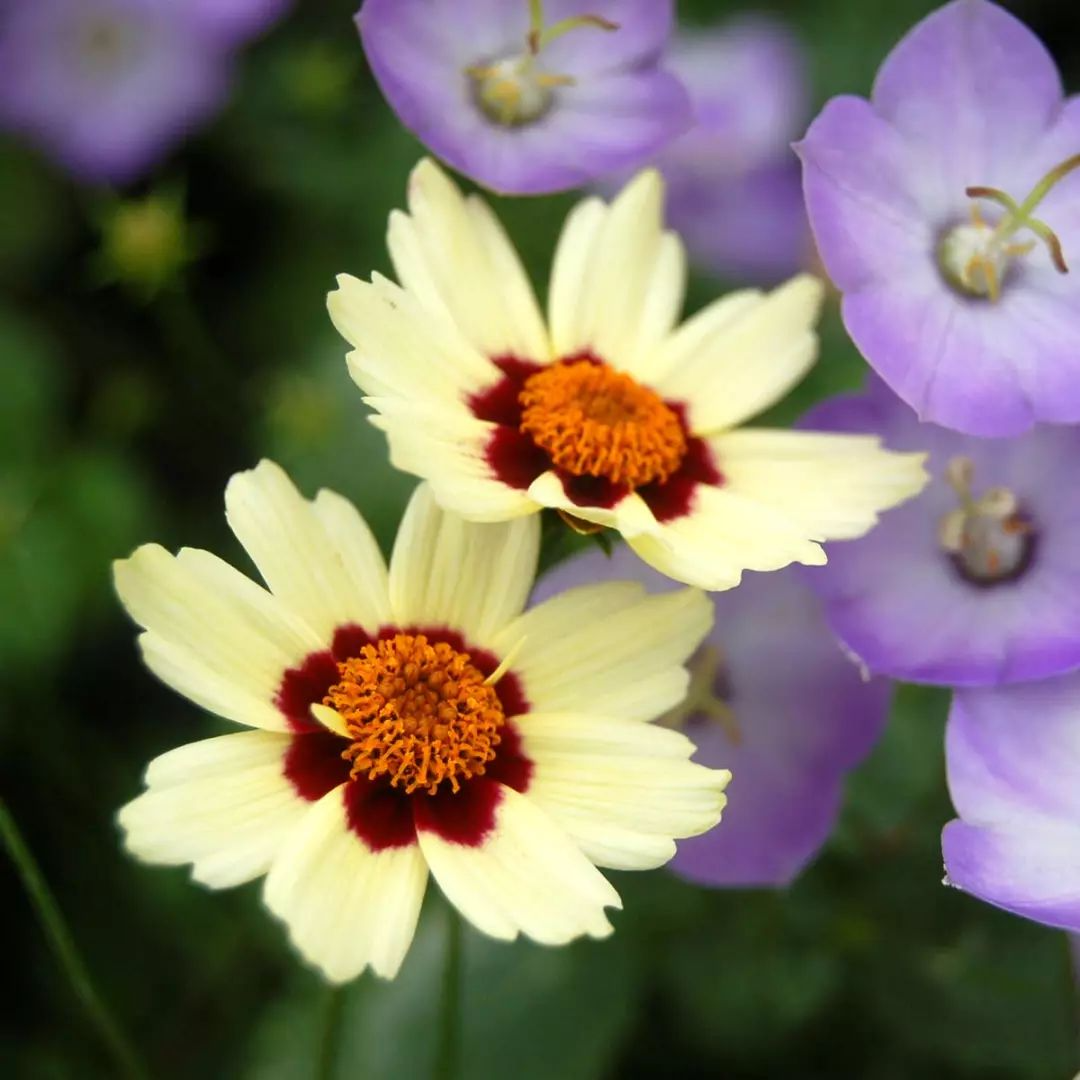
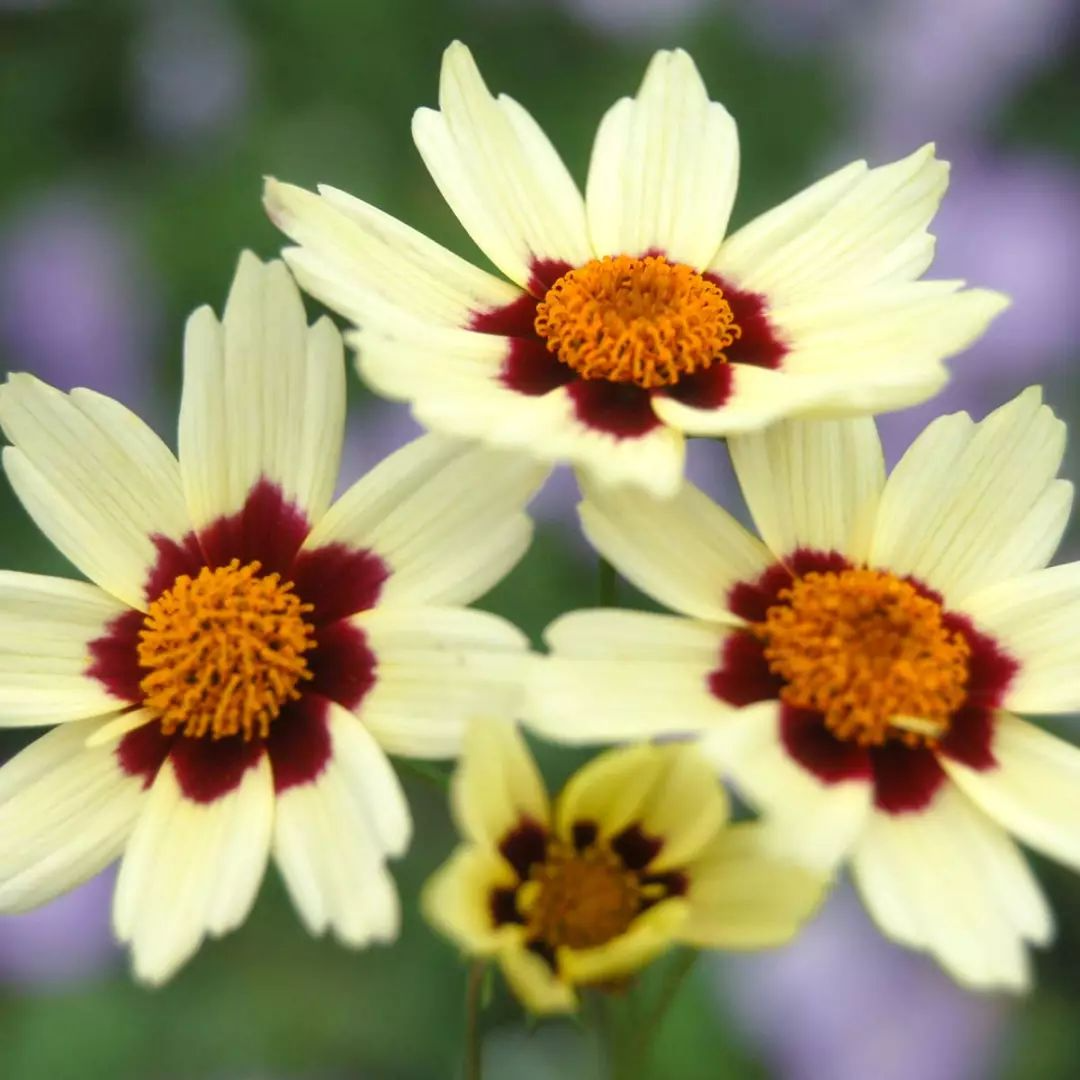
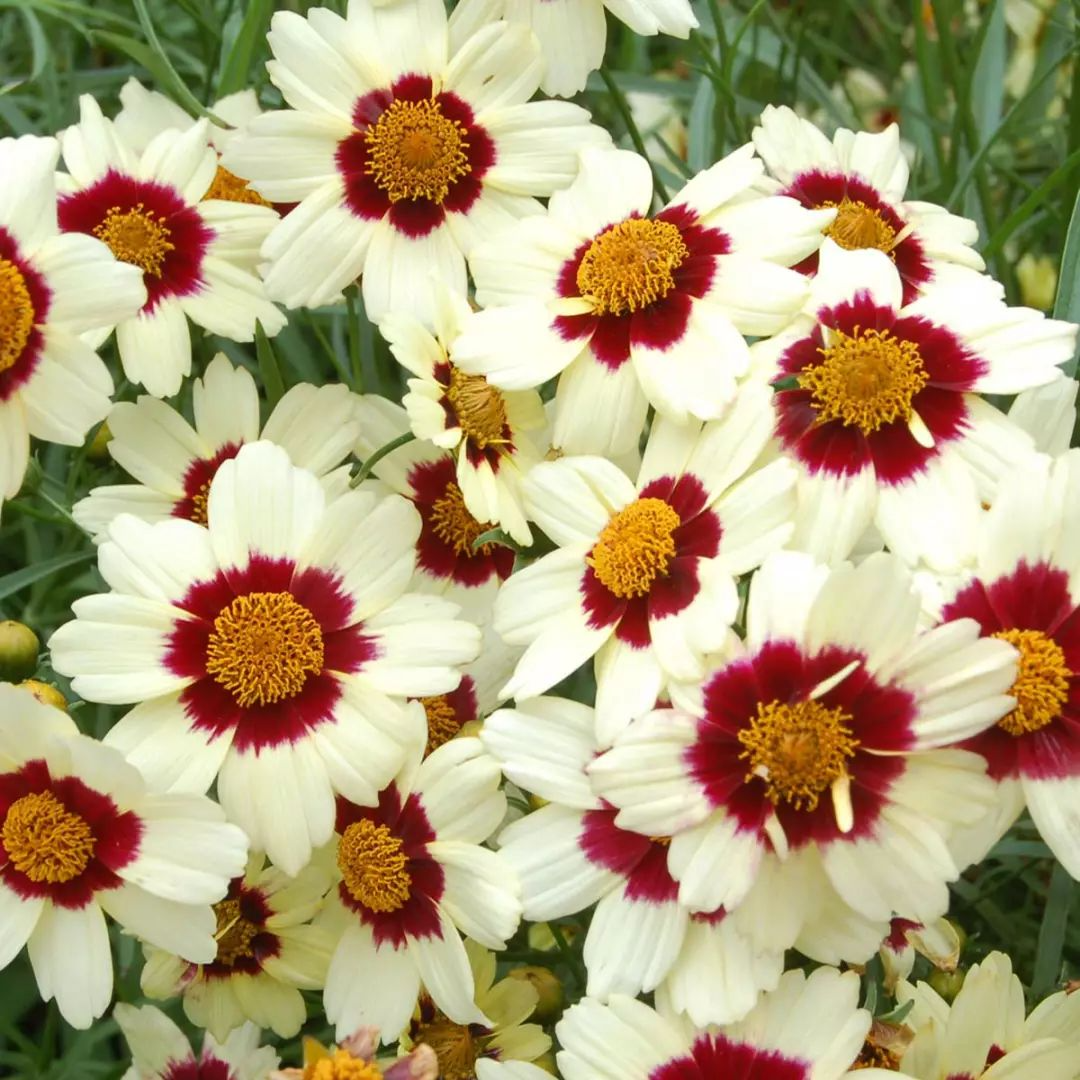
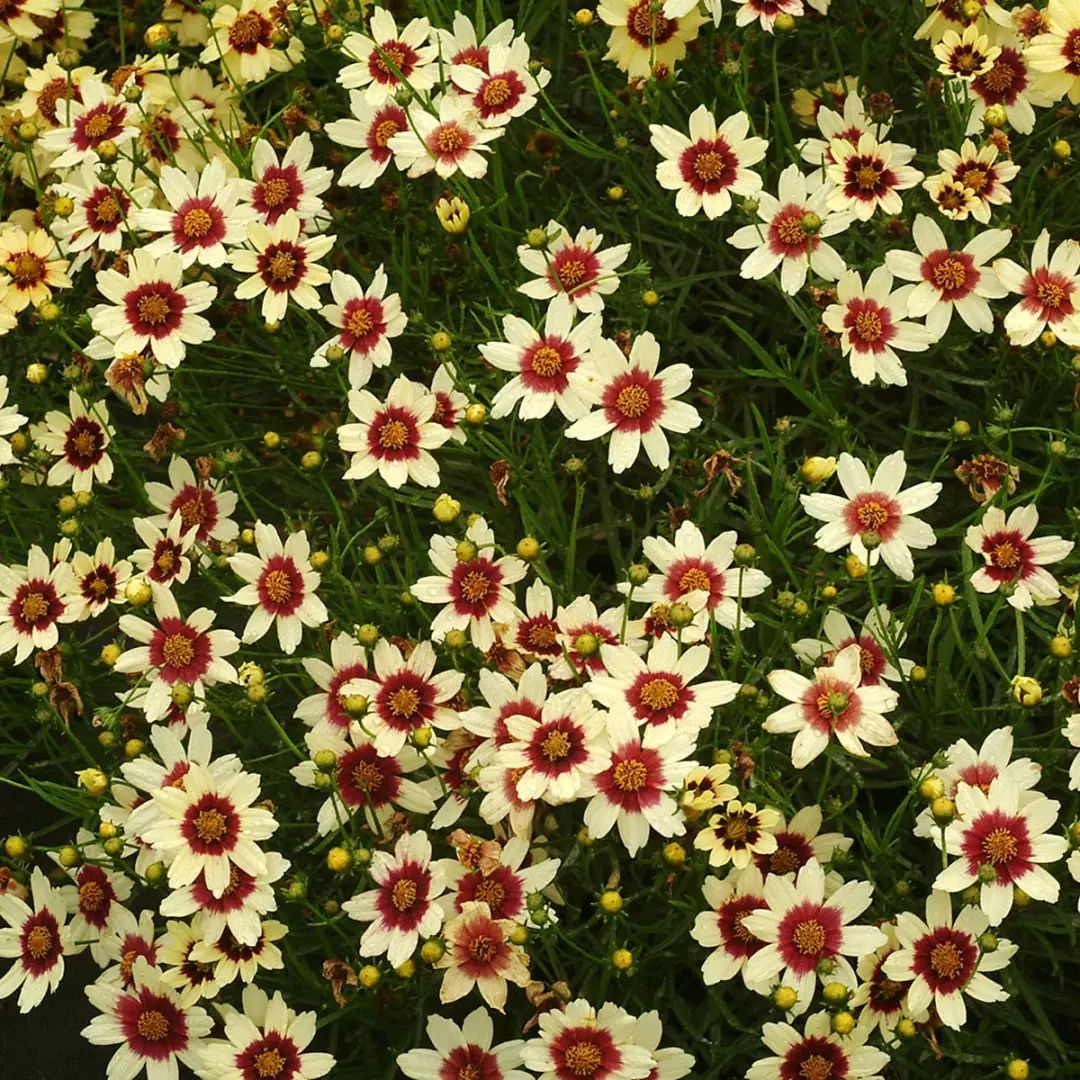
Flowers are large, creamy white with burgundy centers, turning rosy red in cooler temperatures. Foliage is dense and silky. Blooms for a long time.
One of the Big Bang™ series from American plant breeder Darrell Probst.
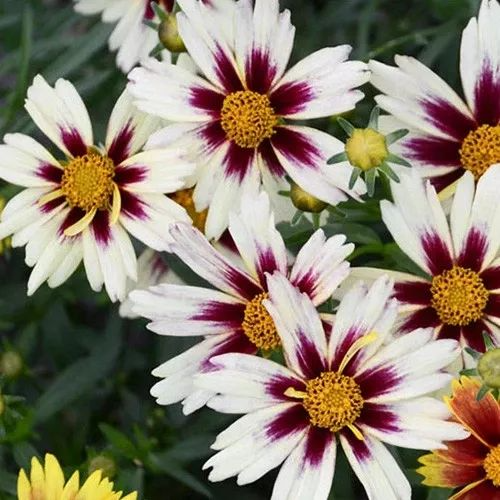
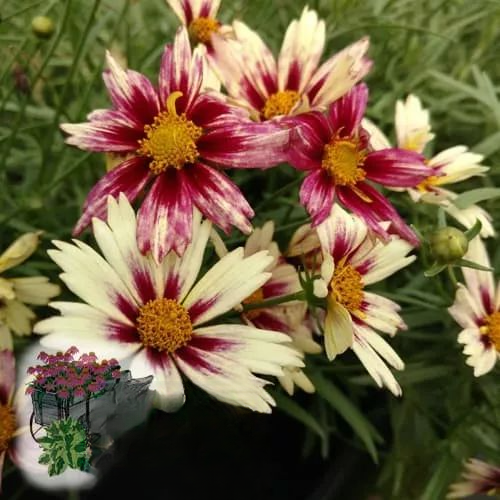
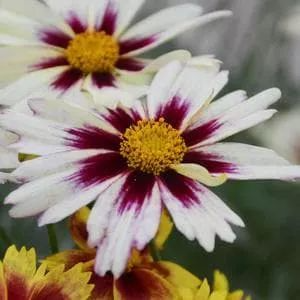
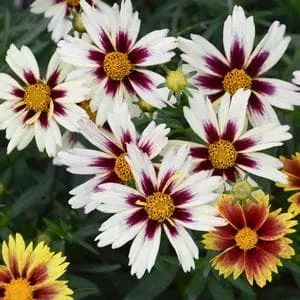
Perennial grown as an annual, 8" tall, rose-pink flowers and bright gold foliage. Gives long-lasting interest. Slightly drought tolerant, easy to grow. Blooms all summer long.
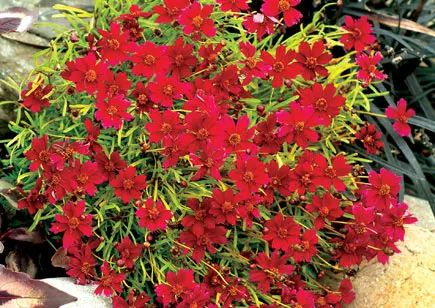
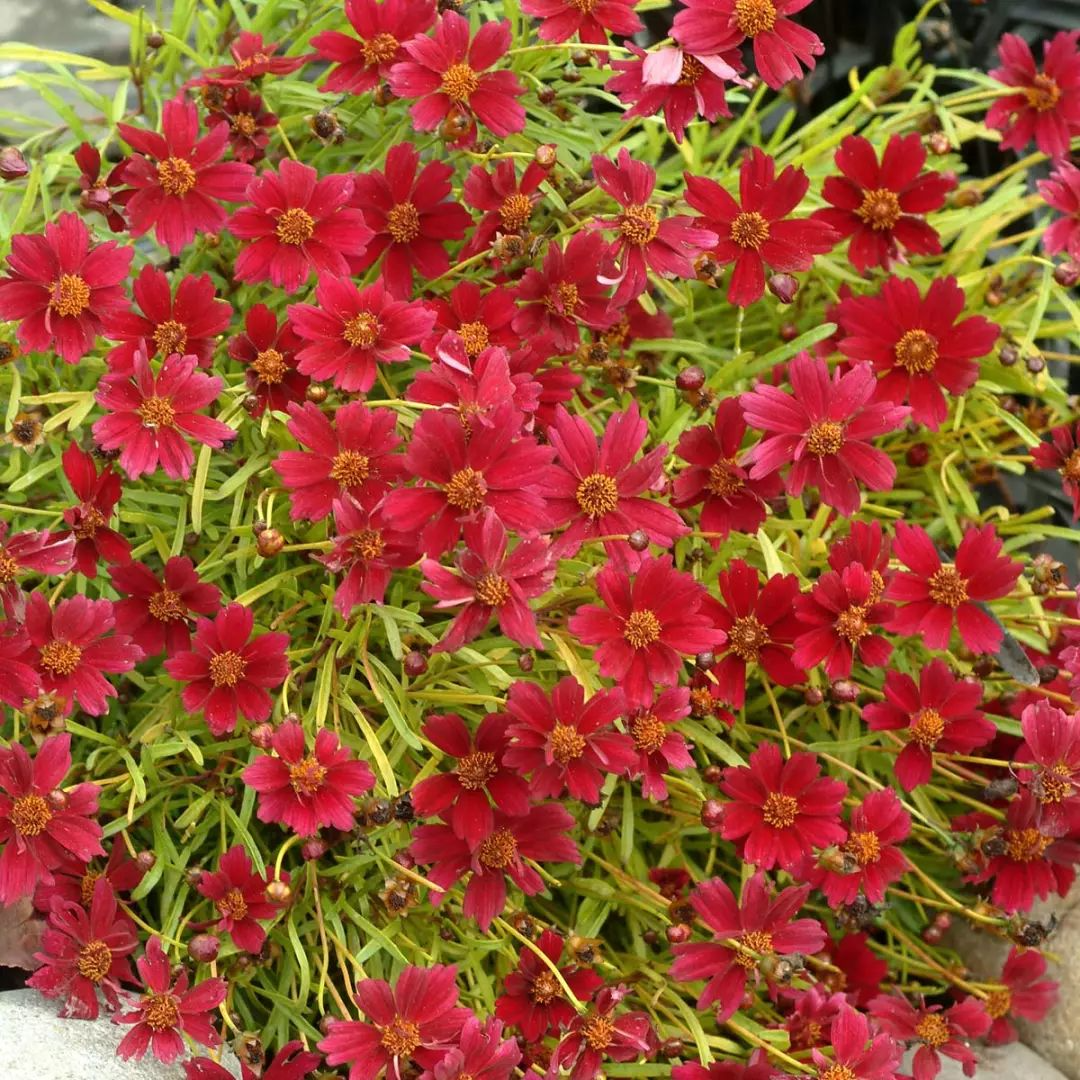

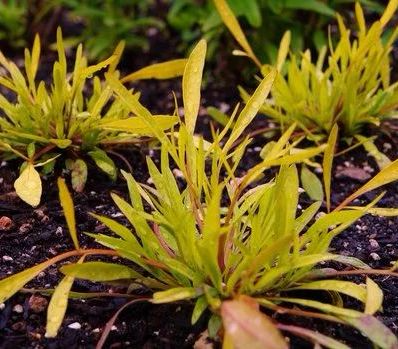
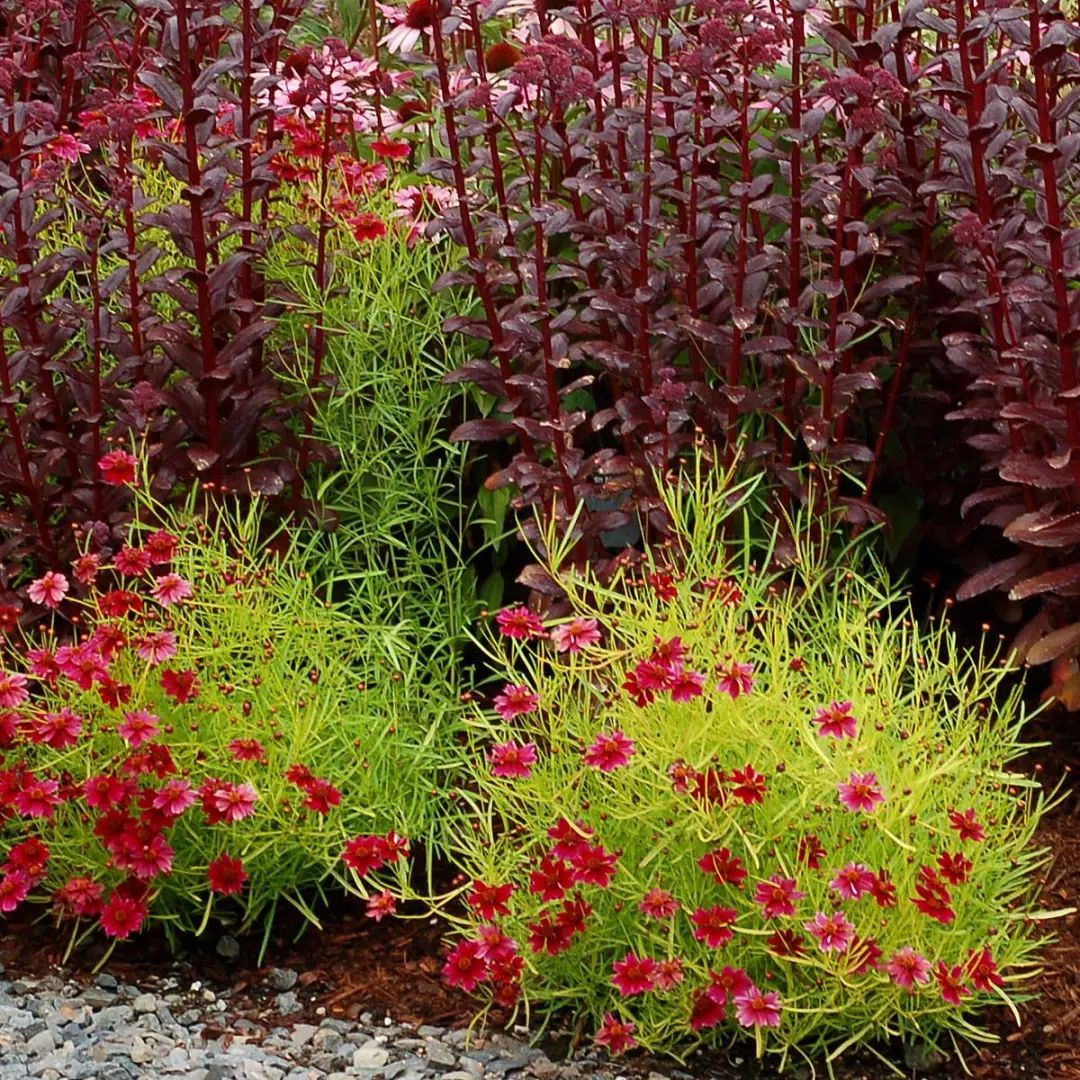
It is cultivated as a perennial or biennial, is slightly drought tolerant, has a low, compact plant form, and its delightful deep red flowers are a charm that pours on this point.
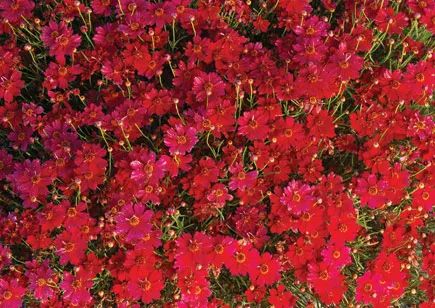
The plant is 30-45cm tall, forming a low mound of green leaves, bearing a very long single saucer-shaped display of golden yellow flowers. It tolerates heat and dryness better than most other Coreopsis. The clump can be divided every 3 to 4 years in the spring.
In an introduction experiment conducted by Xi'an Botanical Garden and Shaanxi Institute of Botany in 2012, it was found that this species cannot survive the summer in Xi'an and cannot adapt to the high temperature and high humidity in summer and dry and cold winter climate conditions in Xi'an.
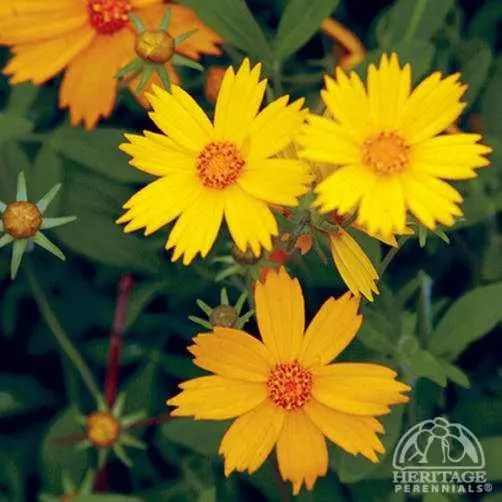
A perennial herb that tolerates heat and humidity, the plant is 30-40cm tall and has consecutive, bright yellow flowers with a dark orange centre. But what makes this plant special is its leaves, which are medium, narrow, and mottled with yellow and green .
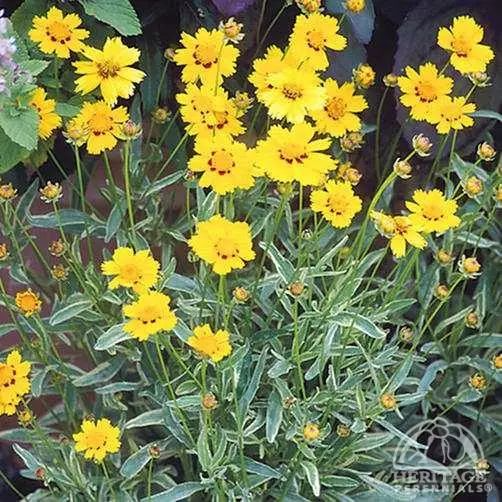
Perennial to biennial, slightly drought tolerant, the fourth variety in our Lemonade series, with rosy orange flowers and bright golden foliage.
A blooming 'Tropic Lemonade' has rosy orange petals dancing on bright golden green thread-like leaves, attracting bees and butterflies. Provide fertile, well-drained, moist to slightly dry soil and light pruning to keep the flowers blooming all summer and fall .
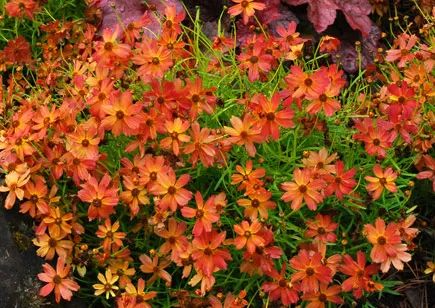
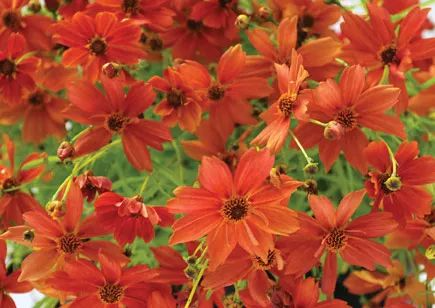
Coreopsis grandiflora Hogg. is a plant of the genus Coreopsis. It has great ecological benefits, beautiful branches and leaves, and good ornamental value. Its flowers are rich in nectar and can be used to extract pigments. In the early years, tests on this plant found that it was not toxic. Although Coreopsis grandiflora Hogg is not toxic, it has very strong vitality and reproductive capacity, has almost no requirements for soil, and is particularly drought-resistant.
A perennial with bright sunny yellow daisies that grow and bloom better in the summer.
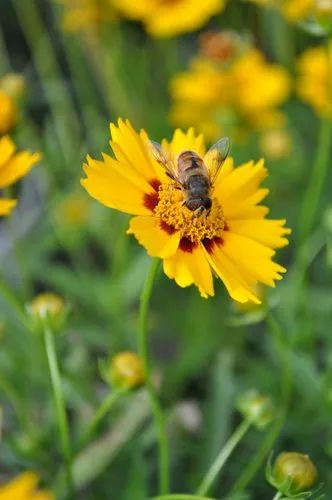
A perennial that loves light, tolerates heat and humidity, prefers partial shade, with golden yellow double daisy flowers hanging high above medium green foliage from spring to summer. Great for attracting butterflies. An award winning, reliable perennial.
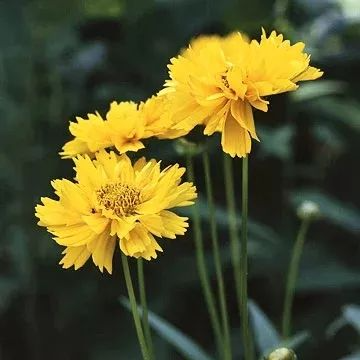
The SOLANNA™ series features a compact, low-growing mound of green leaves with numerous upright stems, plant height 25-30cm, single soft yellow flowers with a rich orange centre. Flowers bloom continuously from early spring to late autumn. Regular removal of faded flowers will extend the flowering season. Minutes can be done every 2 to 3 years in early spring. Tolerates hot and humid summer climates. Excellent for edging and containers. Attractive to butterflies.
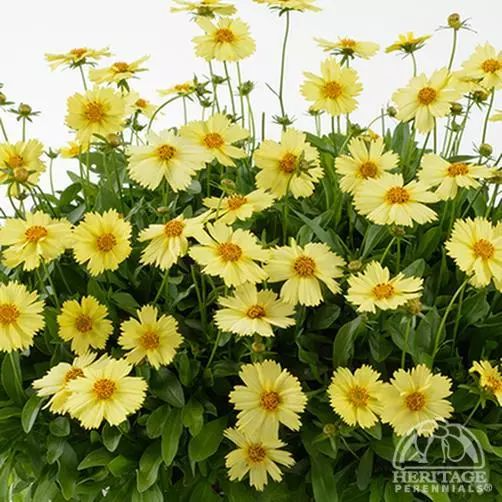
At Annie's we have a strict "no boiling plants" policy, and unfortunately many perennial coreopsis have "boiled" beyond recognition. However, 'Sunny' stands up well to our tall, plant growing 20 inches wide and 15 inches tall, with a single fuzzy 2-inch golden flower on a 2.5-foot-long stem. Blooms from early summer through fall. If you grow this plant in full sun and not particularly crowded, then staking is not necessary.
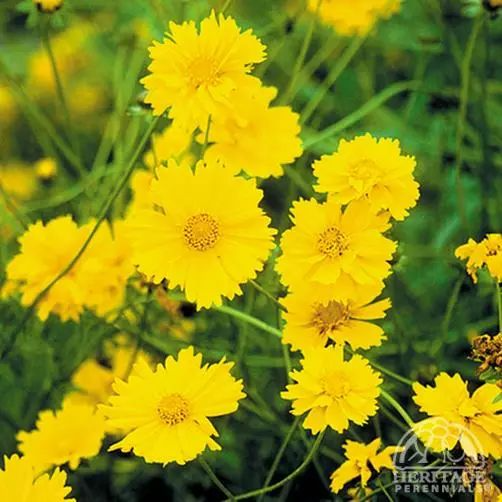
This bushy medium sized selection forms a dark green clump, 40-45cm tall, with an upright stem bearing a golden yellow flower with a burgundy red eye. Blooms for several weeks, and regular removal of faded flowers encourages new buds to form into autumn. Tolerates hot and humid summer climates. Attractive to butterflies. Winner of the 2004 Friulo Selection Gold Medal.
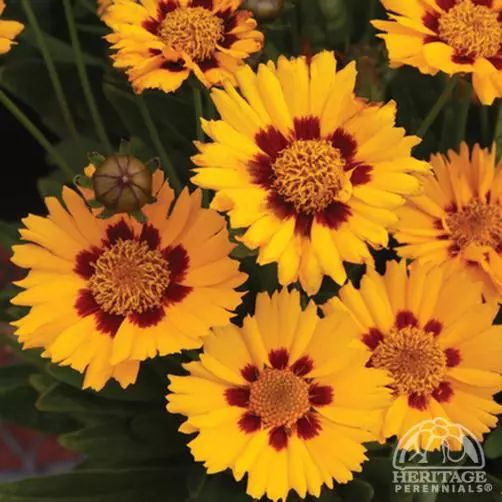
Coreopsis lanceolata L. is a perennial herb with spindle-shaped roots.
Native to North America, it is drought-resistant, waterlogged-resistant, cold-resistant, heat-resistant, and barren-resistant, and has strong adaptability, and is often cultivated in gardens around the country. The whole plant can be used as medicine, with the effects of clearing away heat and detoxifying, and lowering blood pressure; the flower is a water-soluble pigment, which can be extracted to produce a water-soluble yellow pigment with good coloring properties, which is used to color beverages and other foods.
In 1951, Professor Lu Difei of Huazhong Agricultural University discovered this kind of chrysanthemum while guiding students in field practice in Lushan. The flowers are large and colorful, and they are everywhere in the mountains. He checked many books at that time but there was no relevant record. Chen Fenghuai, the old director of Lushan Botanical Garden, told him that this was a seed brought by missionaries from North America and reproduced on its own. After 40 years, sword-leaf coreopsis is now widely distributed throughout the country. Sword-leaf coreopsis is an alien plant with strong growth and reproduction ability. It competes with forests for land and reduces soil fertility. Wherever this plant grows, other plants cannot grow. It is characterized by land occupation and harm. Therefore, agriculture and forestry classify sword-leaf coreopsis as a pest. In areas where sword-leaf coreopsis is more distributed, it is also called "overlord flower" locally, because it almost occupies the living space of other grasses and plants, affecting the diversity of plants.
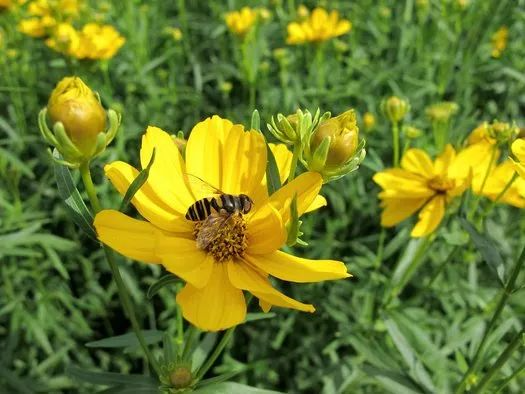
Perennial herb, light-loving, well-drained, heat-tolerant and humidity-tolerant, these golden cup-shaped flowers are hard to take seriously, they are always so cute, inviting people to play the childhood game of "Do you like butter?"
Gardens will glow with yellow with this beautiful, easy-blooming flower.
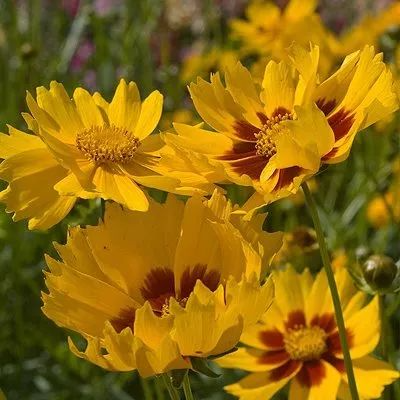
The only Coreopsis species that likes moisture.
Coreopsis rosea is a showy, rare and endangered species native to the eastern states. Fine, dense green foliage gives way in midsummer to numerous small pink flowers with yellow centers. Coreopsis rosea is a long bloomer that can be pruned in late summer to encourage new flowers in early fall. An excellent ground cover or border plant, Coreopsis rosea can be an aggressive spreader, forming attractive clumps and patches.
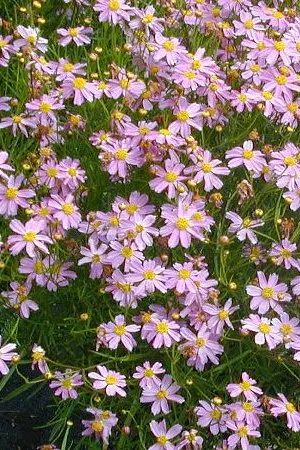
A good choice that blooms very freely, with ray-shaped flowers that are red with yellow centres; appreciates moist sites but will tolerate a wide range of garden conditions.
'American Dream' is a pink version of the garden variety 'Moonlight.' Vigorous and with a smaller upright growth profile than its pale yellow co-bred variety.
The plant grows 20-40cm tall, forming a spreading clump of very fragile, fern-like leaves. This compact selection bears a host of star-like soft pink daisies from early summer to autumn. Cutting back the faded flowers will encourage new shoots to form. Tends to spread, so division is recommended every 2 to 3 years in spring. This species is native to the eastern United States.
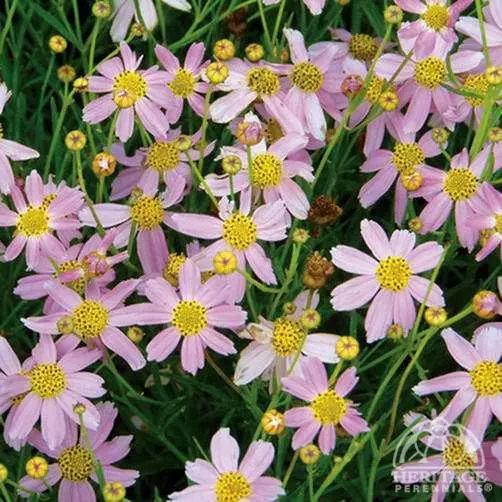
Plant height 25-30cm, a selection of improved species. This forms a low, dense mound of fern-green fronds with masses of daisies, petals rich pink, ray-shaped flowers ruby at the base, surrounding a tiny yellow centre. Flowering starts in early summer and lasts for several weeks. Good drainage is required for winter survival. Pruning may be beneficial in mid to late June to prevent decline later in the season.
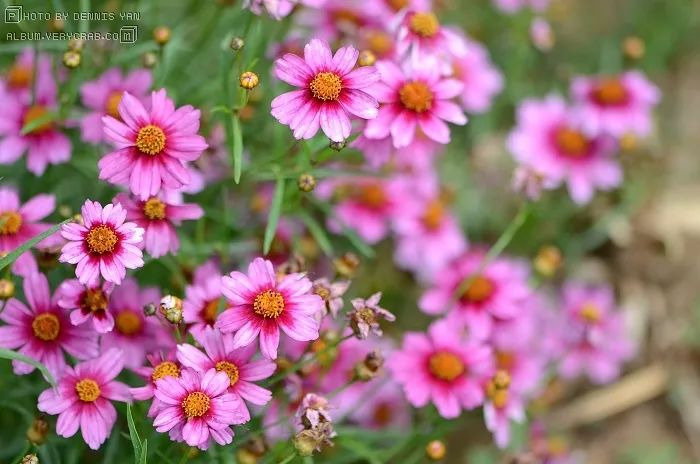
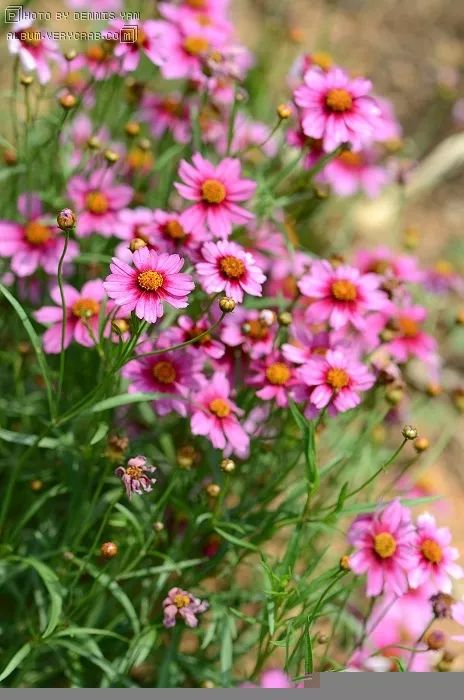
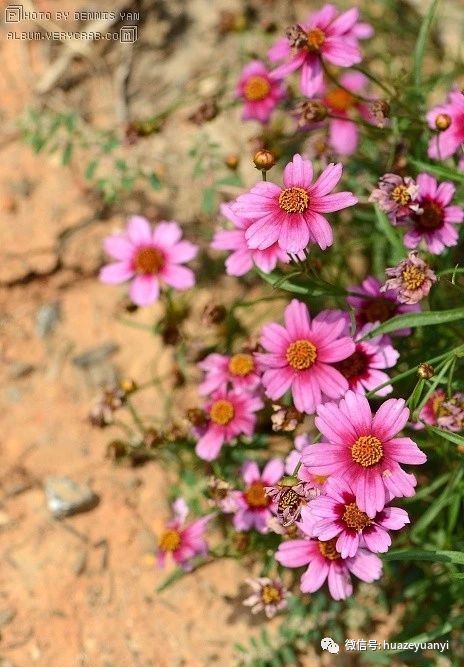
An improved pink Coreopsis found in a garden in California; one of the hottest and most popular plants in the business, the plant is 30-55cm tall and forms a low, dense mound of fern-green foliage with needle-thin leaves and white-tipped petals with a dark raspberry-red center that fades to a bright raspberry pink . The clumps will bloom for weeks in a row, with the clumps quickly forming a ground cover. Cut the plant back after flowering to allow new blooms in autumn and to limit self-seeding. They prefer a sunny location to wet soil. A great edging plant or mixed container. Tolerates heat and humidity. Attractive to butterflies. Flowers from Bressingham®.
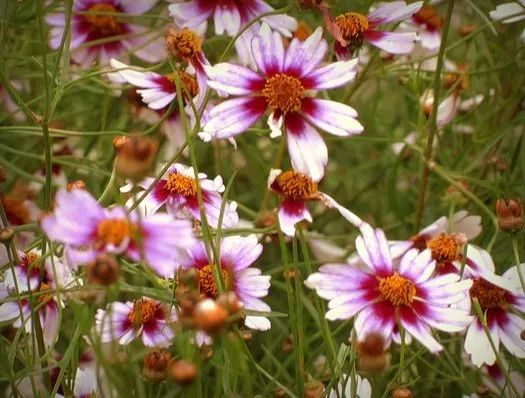
Coreopsis tinctoria Nutt. is mainly cultivated as a landscape plant. It is native to North America and is commonly cultivated in various places.
An annual or biennial herb that prefers good drainage.Heat and drought tolerant and not at all fussy about soil, this is a great choice if you want a long flower show with little hassle. Incredibly long blooming, from June through fall, abundant production of vivid yellow cosmos-type flowers on long stems with wine-red centers.
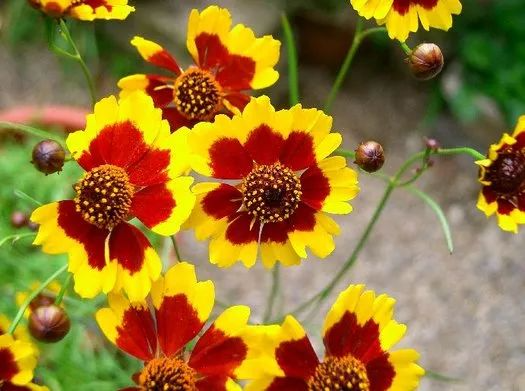
An annual herb that loves light and is drought tolerant, many varieties have red and yellow stripes. It is also easy to grow, just gently cut off the withered flower heads after the first bloom.
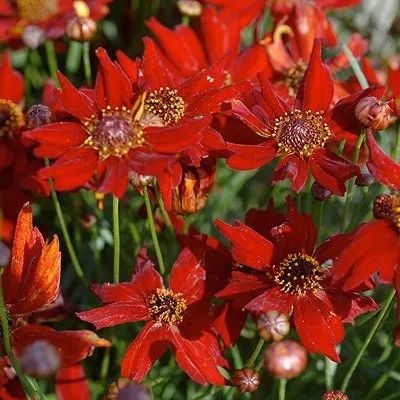
An annual herb, known as callus from its earliest appearance in cultivation in the 1800s, when it was considered a dye plant, its graceful weaving and ease of growing have made it a mainstay in today's casual, wildflower gardens. This selection has narrow, feathery petals in a mix of gold and purple-brown.
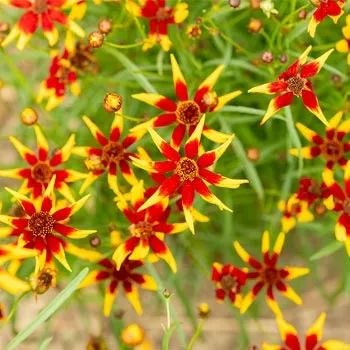
We were so excited to discover this cool new variety of Coreopsis, one of the easiest, now flowering annuals! Two-toned, deep golden-red, Haller's Goldenrod flowers explode into a large bloom. Great for growing anywhere, even in a pot, but of course large, at least 5 gallons. Not fussy about soil, self-sows to provide countless cut flowers!
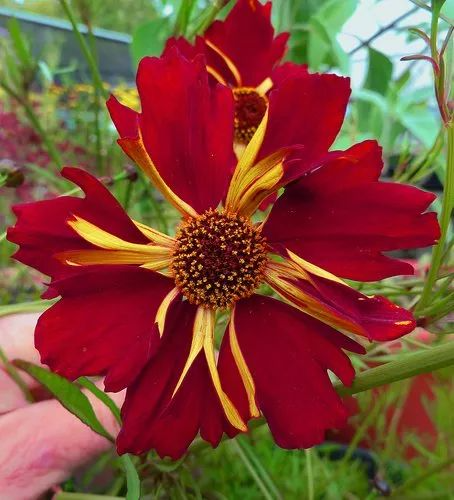
An annual, light-loving, moisture-tolerant, heat-tolerant plant, this delightful variety was first reported in 1885. The radiating, star-shaped flowers range from orange to mahogany, with attractive stripes and gold flecks. Very easy to grow. All it needs is sun, some water, and ordinary garden soil. This one grows to 10 inches tall and is very branched. The blooming season is long and it makes a stimulating cut flower. Everyone wants to know what it is!
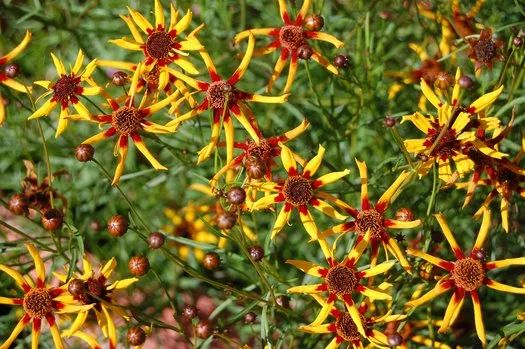
Coreopsis verticillata Linn. is a perennial herb with tuberous rhizomes, a long flowering period, large and colorful flowers, and the ability to reproduce on its own. It is an excellent ground cover in sparse woods and can also be used as flower border material.
Fiery flowers shine red and gold like a tiger's eye on this gorgeous garden star. Super hardy properties make it a star in every region of the U.S. Bengal has a clean, neatly manicured habit and soft, mildew-resistant foliage.
Plants reach 45-50cm tall and form a neat clump. This series blooms with star-shaped red and gold flowers from early summer to autumn. Cutting back faded flowers will encourage bud formation. Heat tolerant, great for cutting, also good in sunny edges, mass plantings and mixed containers. Attractive to butterflies.
Compared to coreopsis 'Route 66', 'Bengal Tiger' has much shorter flowers, and the flowers are yellow with a clear red center instead of creamy yellow, and the flowers are rose red to creamy yellow. Both are Coreopsis hybrids.
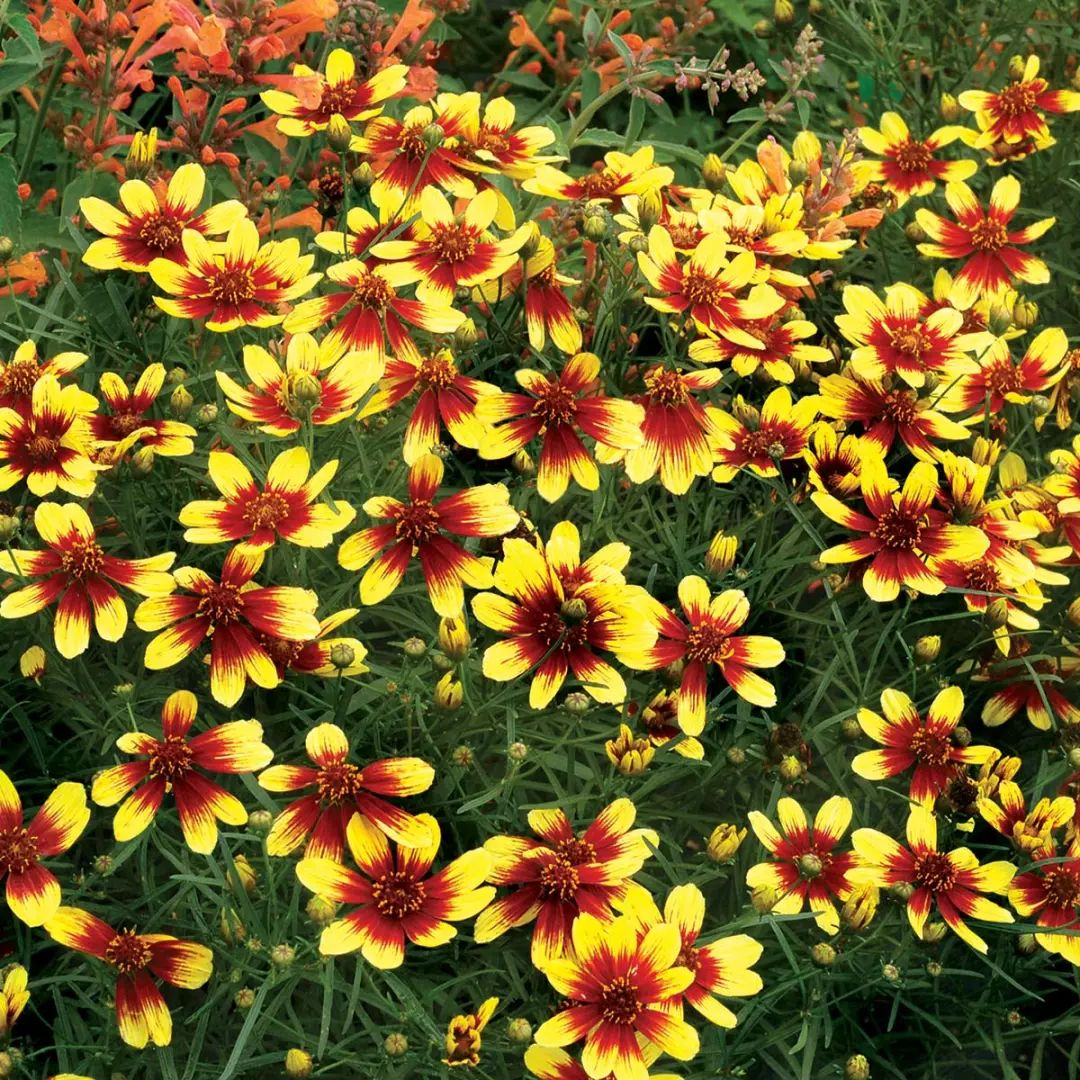
Plants are 40-45cm tall and form a very neat clump. Part of the Satin&Lace™ range, this blooms with white flowers that display a rich raspberry red centre from early summer to autumn. The raspberry colour expands as the flower matures, covering most of the petals in cooler temperatures. Heat and drought tolerant. Attractive to butterflies.
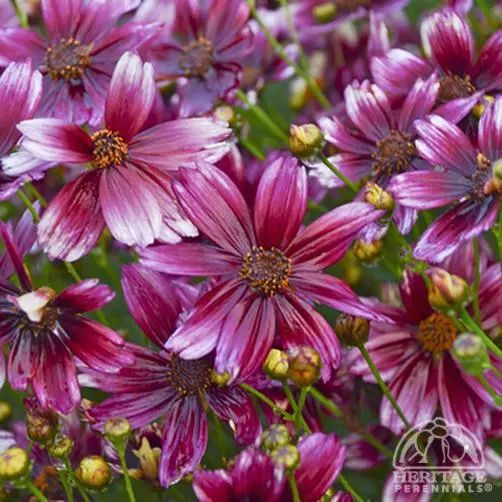
Coreopsis Threadleaf forms a clump of very delicate dark green fern-like leaves. Part of the Sizzle & Spice™ range, this selection grows 35-45cm tall and has starry, vibrant sunset orange flowers from early summer into autumn. Cutting back faded flowers encourages bud formation. Tolerates heat and drought. Good for cutting and mass plantings. Ideal for the edge of a sunny border, or in a mixed container. Tolerates heat and humidity. Divides easily in early spring. Good drainage is essential.
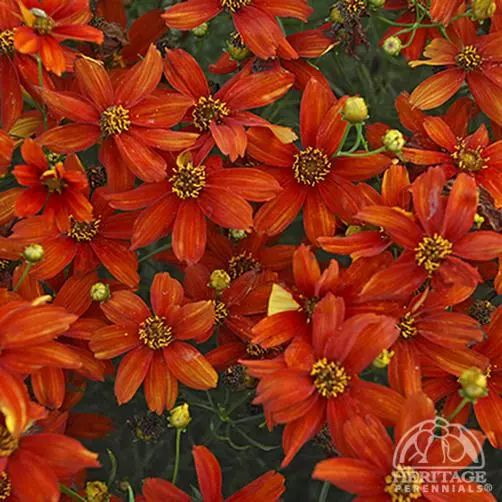
Plants grow 40-45cm tall, forming a spreading clump of very delicate fern-like leaves. This outstanding selection from the Cruizin range bears masses of star-like flowers, 15-18 inches tall, with linear leaves, showy red flowers with orange backings from early summer to autumn. Cutting back faded flowers will encourage bud formation. Tolerates hot, dry sites once established. Excellent for cutting. Ideal for the edge of a sunny border, or planted in mixed containers. Tolerates heat and humidity. Divides easily in early spring.
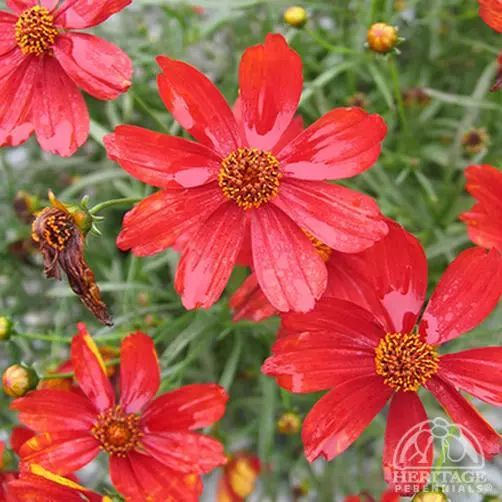
At 40-45cm tall, this outstanding choice, from the Cruizin range, has deep rose, daisy-like flowers from early summer to autumn. Cutting back faded flowers will encourage bud formation. Tolerates heat and drought. Tolerates heat and humidity. Easy to divide in early spring.
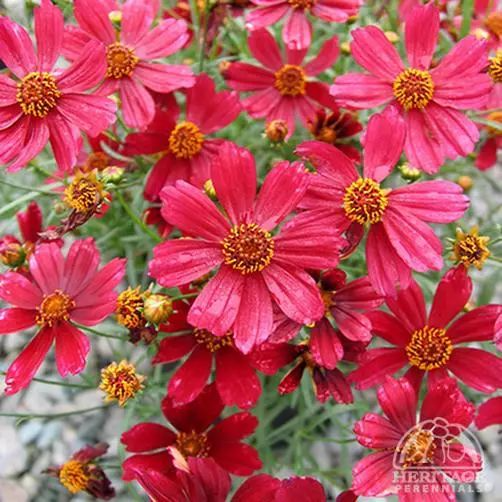
This is a new hybrid of the wireleaf coreopsis from Walters Gardens, Inc. Members of this series have a compact, rounded habit and are covered in flowers from early to late summer.
This bold and vibrant color will draw your eye from a distance. The golden yellow flowers have a transparent crimson eye and the petals are wider. The plant is compact with bright green linear leaves that look like a carpet of blossoms.
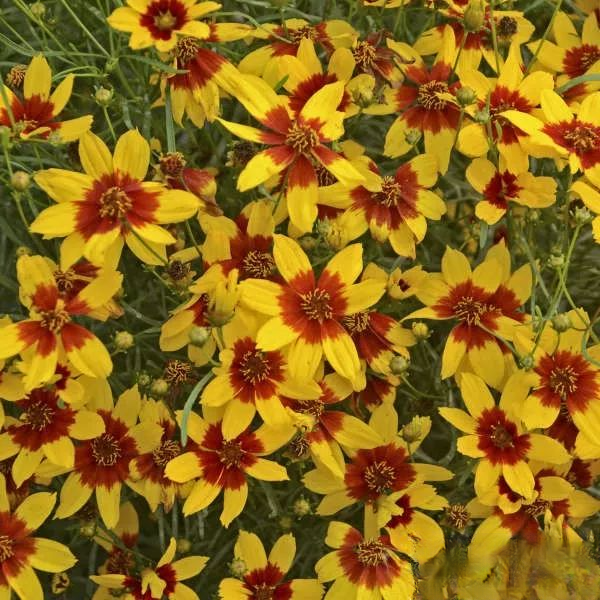
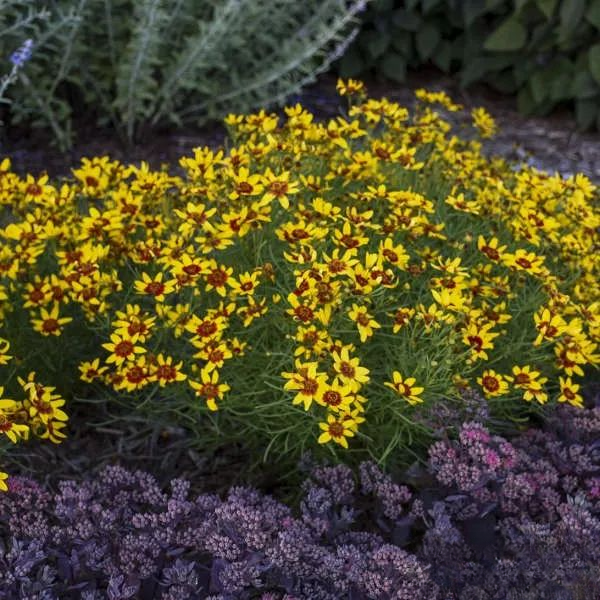
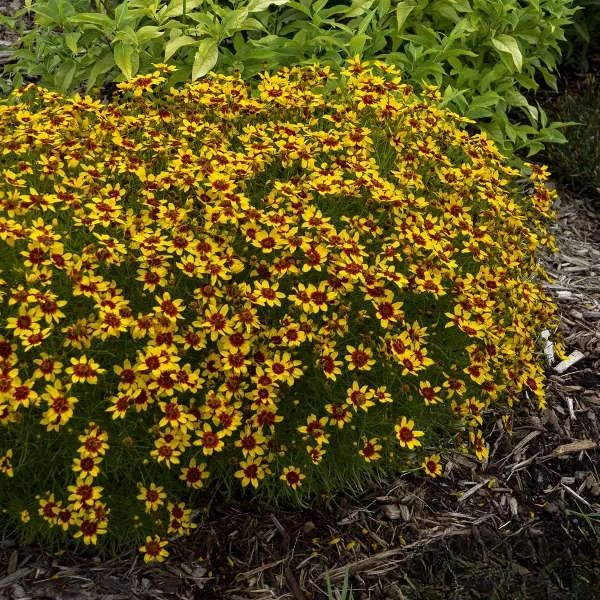
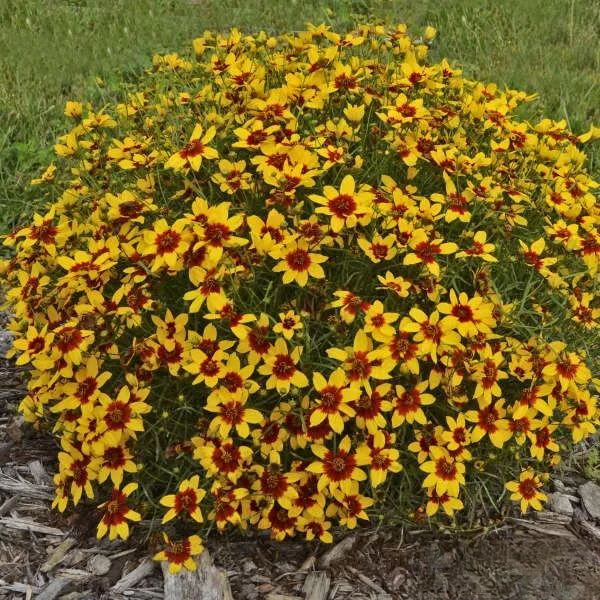
(Different from 'Big Flower') Plants are 60-75cm tall and form a spreading clump with very delicate, fern-like leaves. The flowers of this selection of Coreopsis are golden stars from early summer to autumn. Cutting back the faded flowers will encourage bud formation. This species is native to the eastern United States. Suitable for mass planting in sunny areas and can even adapt to naturalized grass plantings.
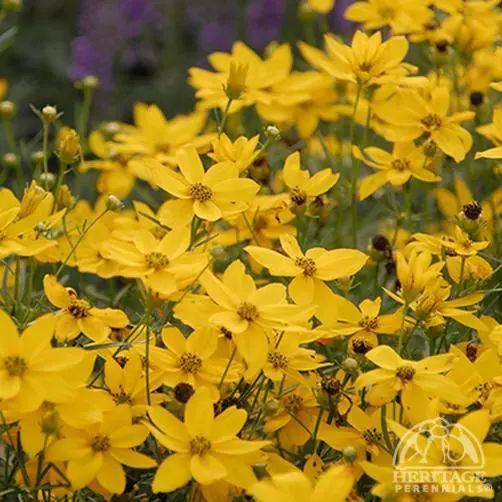
Plants grow 35-45cm tall, forming a spreading clump of very delicate fern-like fronds. This selection, part of the Sizzle & Spice™ range, has starry, dark red flowers with golden centres, from early summer until autumn. Cutting back faded flowers encourages bud formation. Suitable for cutting and mass plantings. Ideal for the edge of a sunny border, or in a mixed container. Tolerates heat and humidity. Divides easily in early spring. Good drainage is essential.
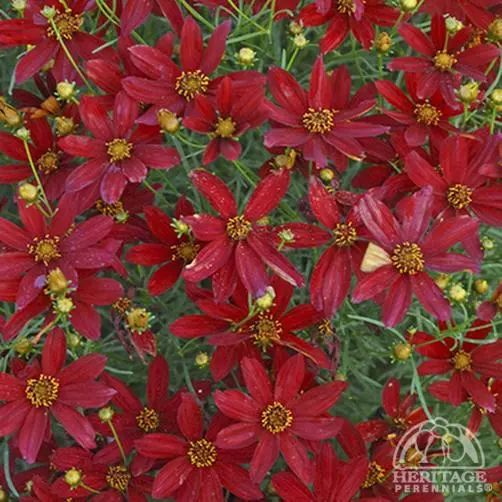

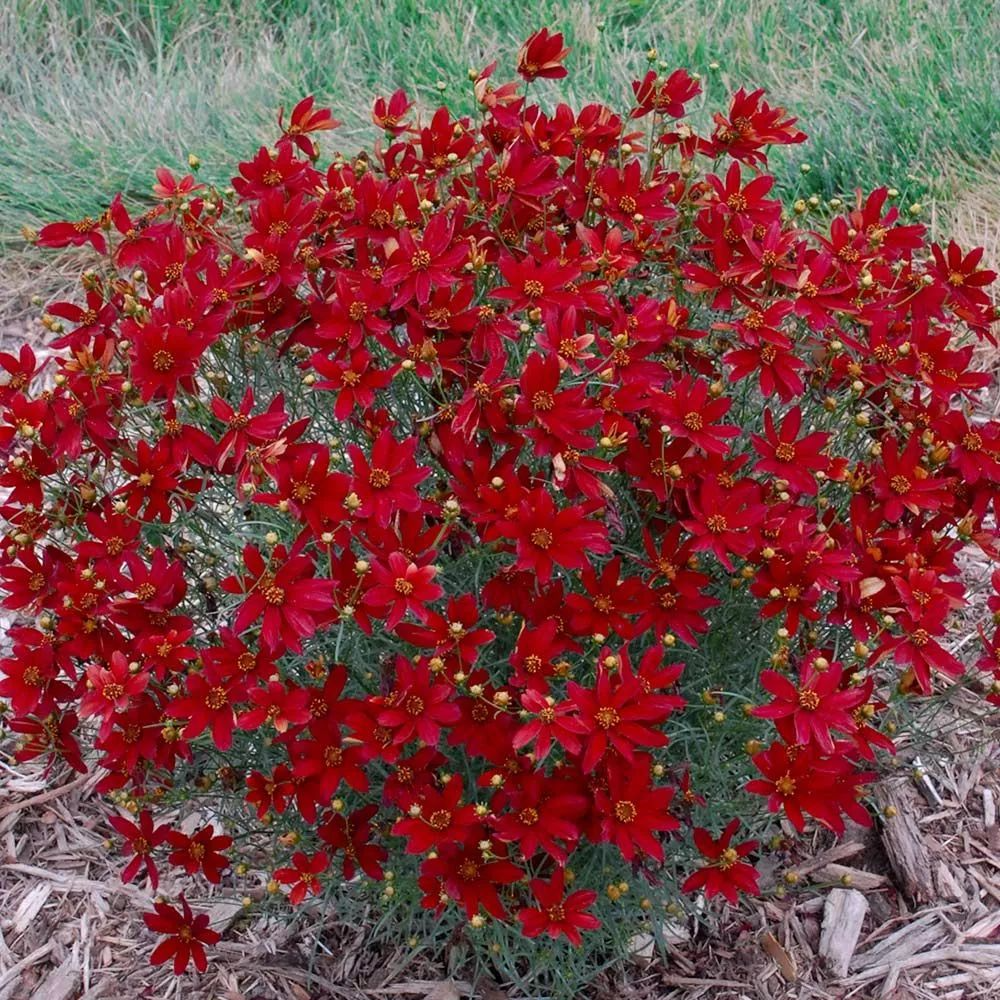

Plants are 45-50cm tall with masses of golden flowers in a continuous colour, starting in early summer and continuing into autumn. Attractive to butterflies. Excellent as a cut flower in the middle of a sunny border, in mixed containers. Cutting off faded flowers encourages buds to form over the season. Hardy, tolerates hot, dry sites, divides easily in early spring. Hybrid selection makes it extremely mildew resistant.
'Imperial Sun' has larger inflorescences and a shorter habit than Coreopsis verticillata 'Zagreb'.
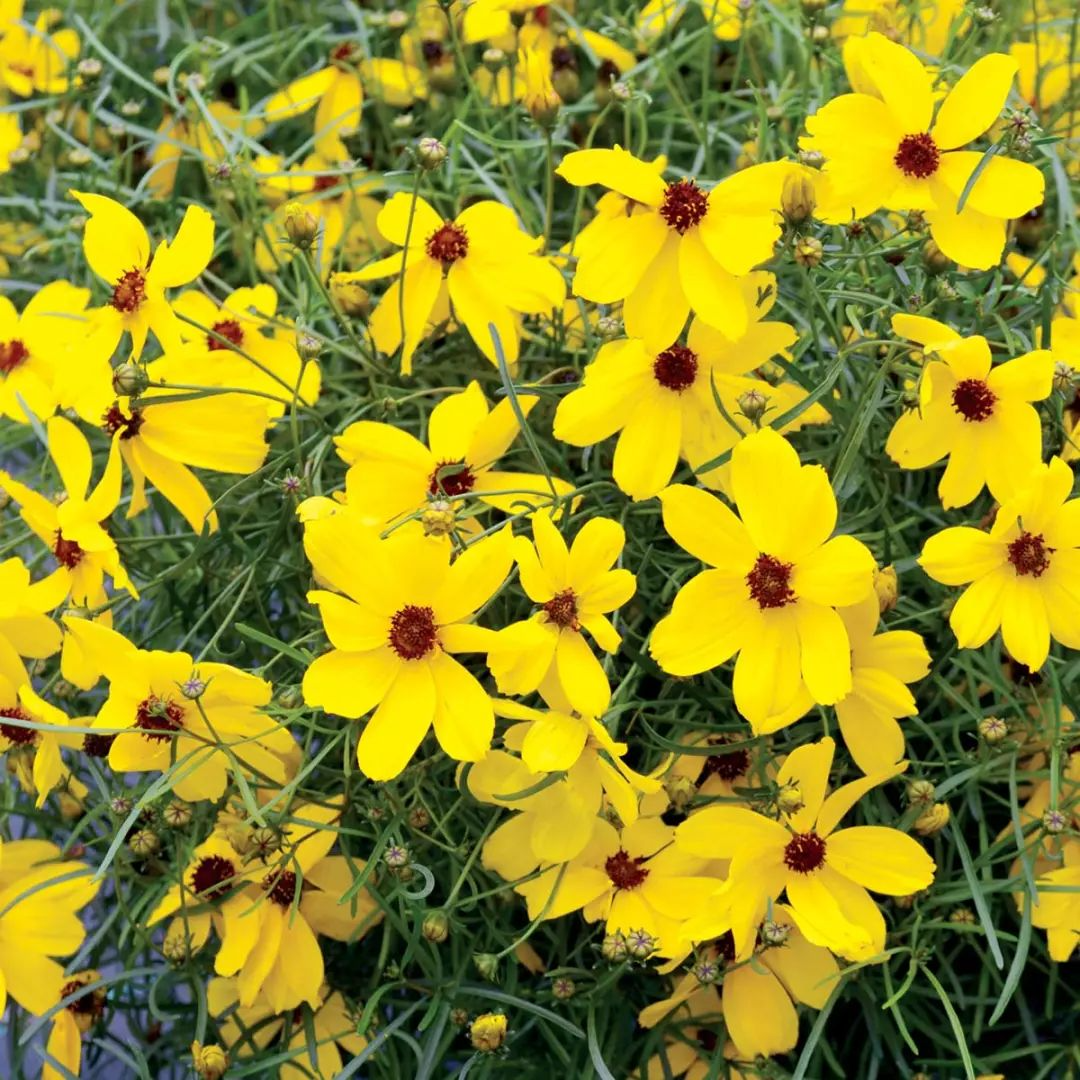
Perennial herb with masses of pale lemon-yellow flowers on soft foliage. Combines soft pastel shades, especially purple and lavender; small flowers with rounded petals on slender, loose dark purple stems that stand erect to 2 feet and are covered with delicate, dark, glossy green leaves that are finely lobed, narrow, and thin and airy in whorls. Blooms from June to frost. Selected as Perennial Plant of the Year 1992 by the Perennial Plant Society.
Emerges in spring as an almost mossy mat; fine leaves evolve into fluffy foliage that supports bursts of pale yellow-green stellar flowers. This unusual yellow-green complements nearly every other color, and after a long display, the rusty seed heads remain until fall. Use as a ground cover in rock gardens or borders.
It is cold-resistant, drought-resistant , light-loving, resistant to high temperature and humidity, has a long flowering period, can tolerate extensive management, and has strong adaptability.
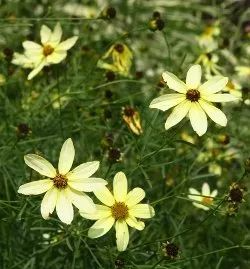
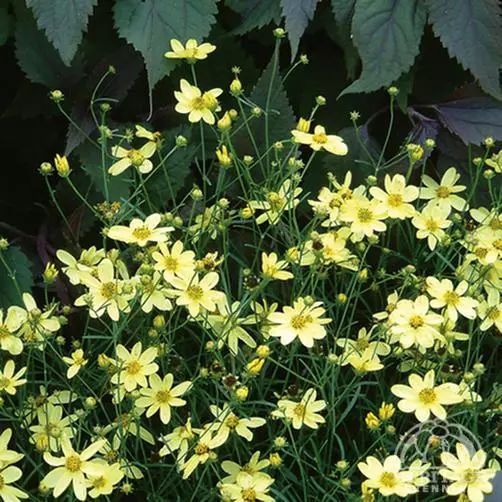
Heat up your summer garden with Sizzle & Spice® Coreopsis, a new hybrid of Coreopsis verticillata from Walters Gardens, Inc. Members of this series have a compact, rounded habit and are covered in flowers from early to late summer. With bright colors like red, orange, yellow, and deep magenta, these varieties will grab your attention.
This perennial draws attention in the summer with its lively bright yellow color. The 1-1.5" wide, lemon-yellow flowers are deep maroon with nearly black centers. The flowers will cover the gray-green, linear leaves for a gorgeous display in midsummer. This bright, sunny yellow with golden hues is similar to ' Curry Up .'
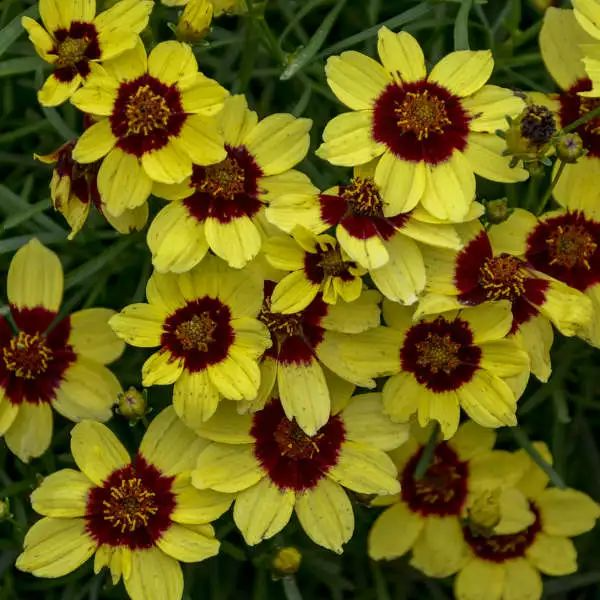
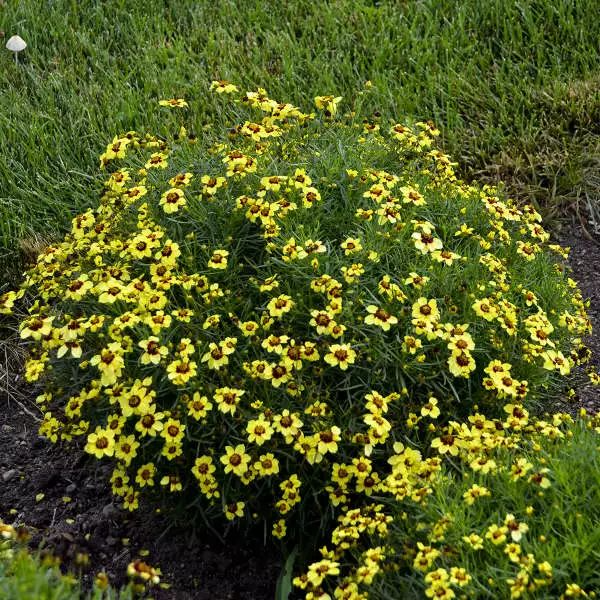
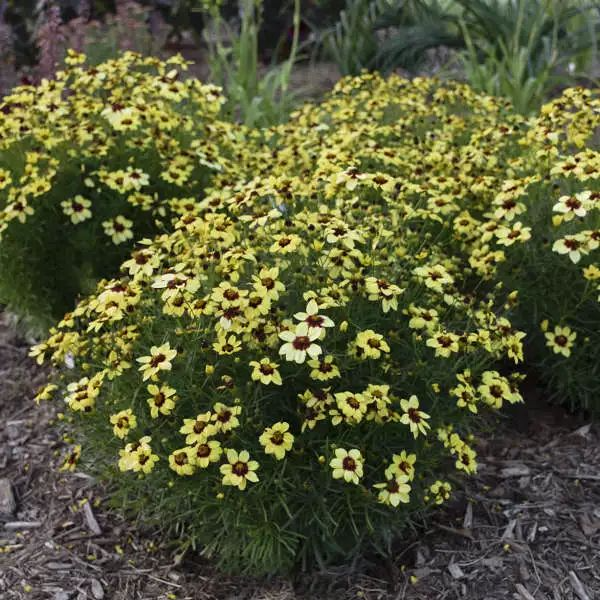
Plant height 45-50cm, forming a spreading clump of very delicate fern-like leaves; bright rose-pink flowers bloom from late spring until frost, forming an impressive hillock in the garden. Cold hardy, good drainage is essential, heat and drought tolerant. Excellent for cutting. Ideal for the edge of a sunny border, or planted in a mixed container. Tolerates heat and humidity. Divides easily in early spring. Good drainage is essential.
'Show-Stopper' is hardier and has a larger habit with large flowers than 'Limerock-Ruby'. It has good branching and long blooms.
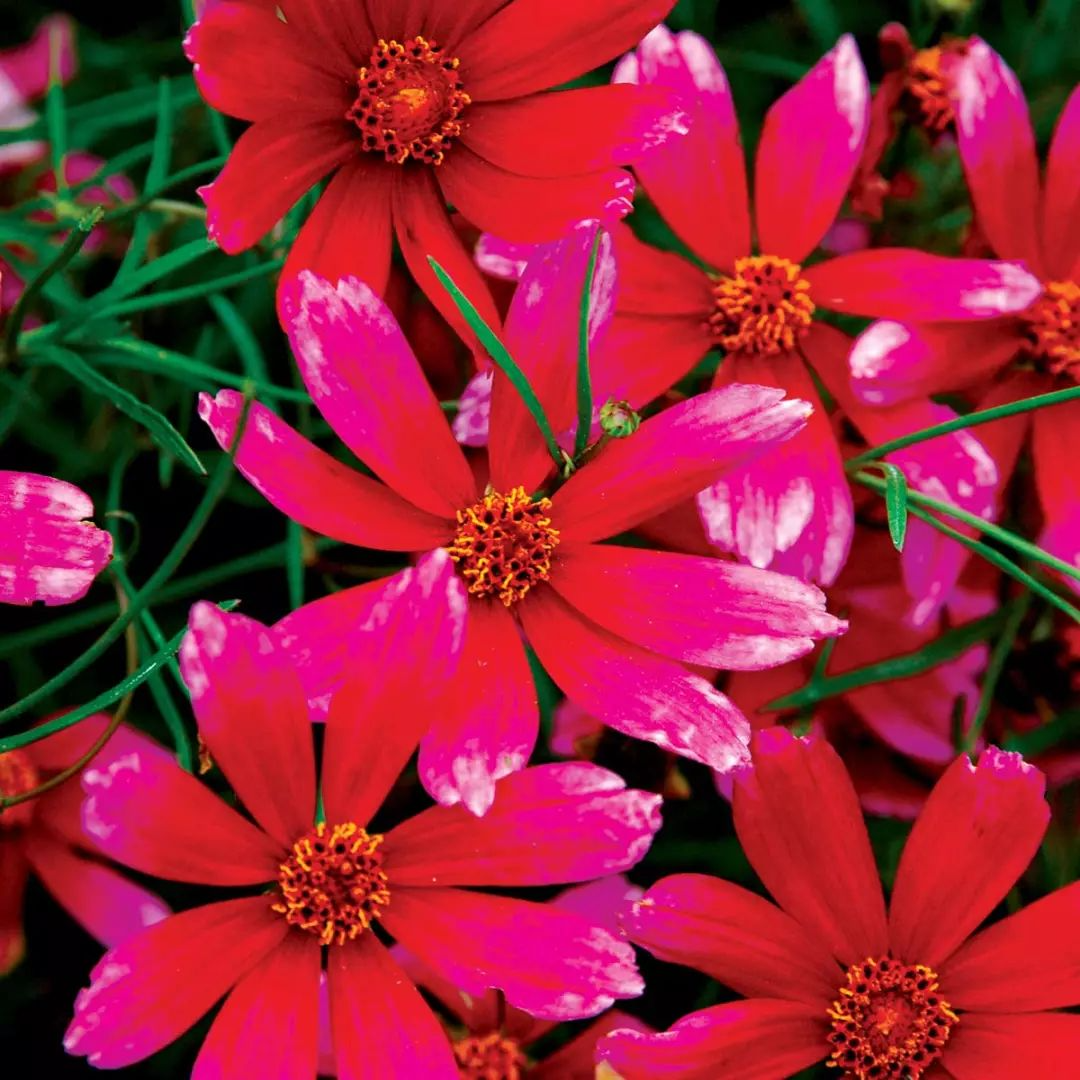
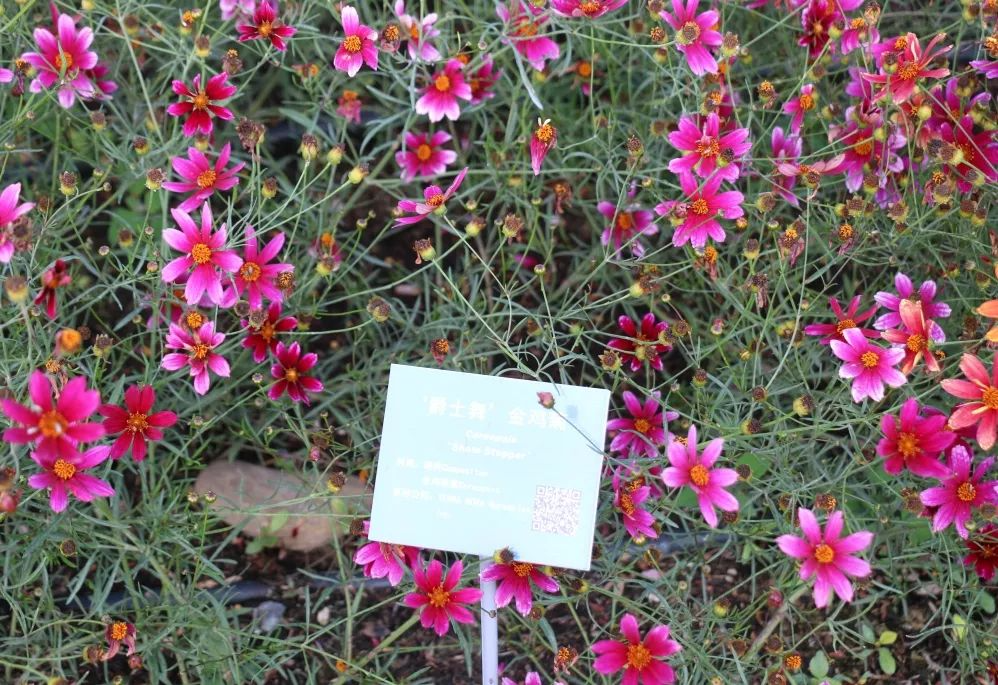
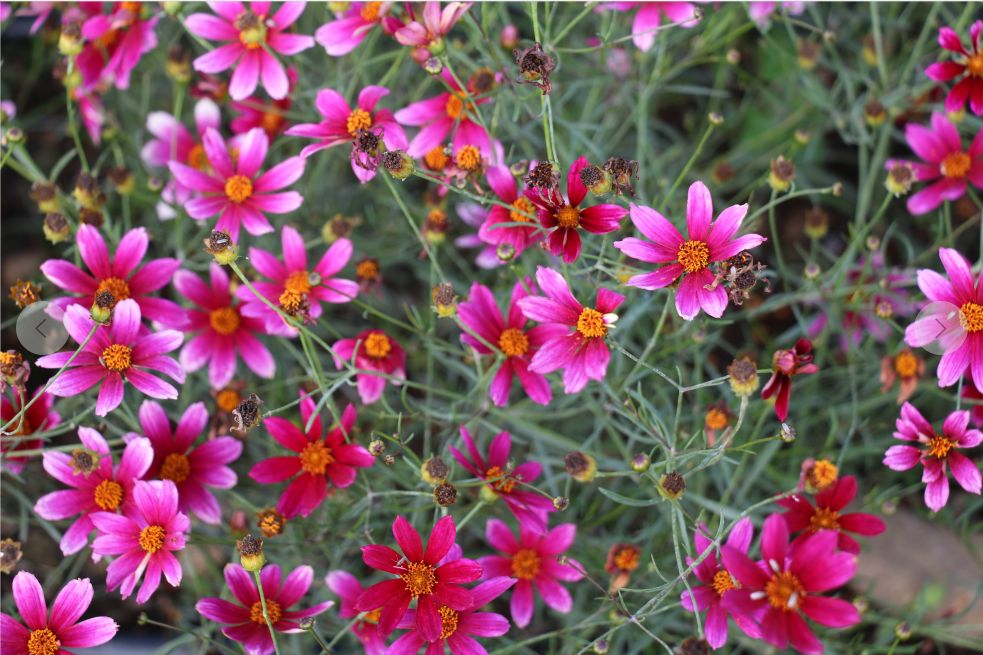
Forms a medium spreading plant, up to 2 feet tall and eventually 2 feet wide. Best in full sun with well-drained soil. The foliage is fine, intricate, and dark green. Perfect for the attractive flower color. The flower color is most delicate. Clusters of large, burnt ochre or terracotta flowers, which brighten to orange as the season progresses, appear in late June,Unusual 8 fringed copper petals in shades of warm apricot and burnt russet dance around the bright yellow center of a mounding plant that grows 12-14 inches tall and 24 inches wide, lasting until late summer.
It’s such a delicate color that pairs beautifully with the deep purple and blue flowered sage and the silvery steel blue sea holly (almond blossom).
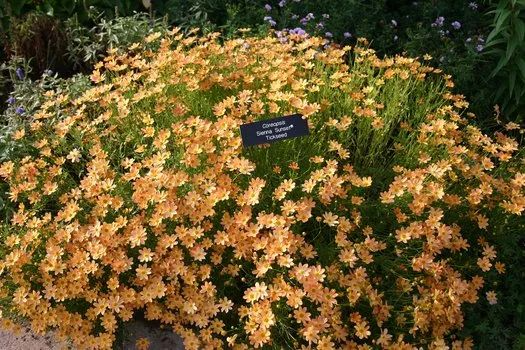
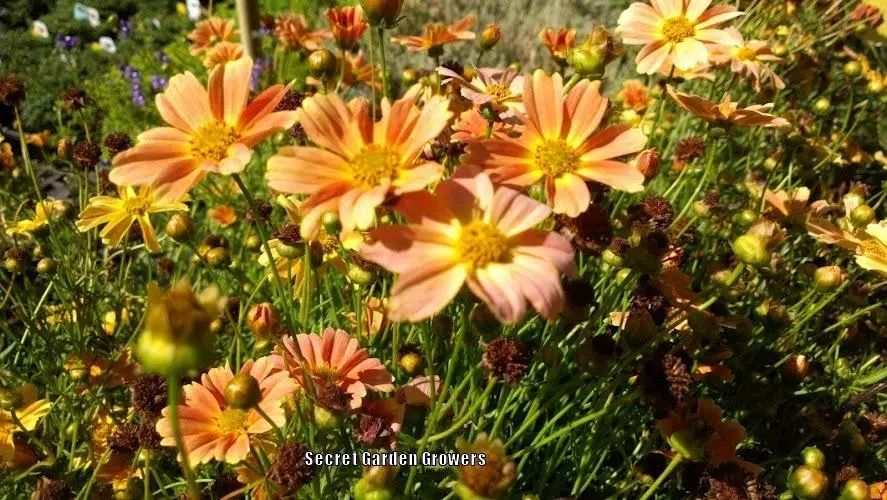
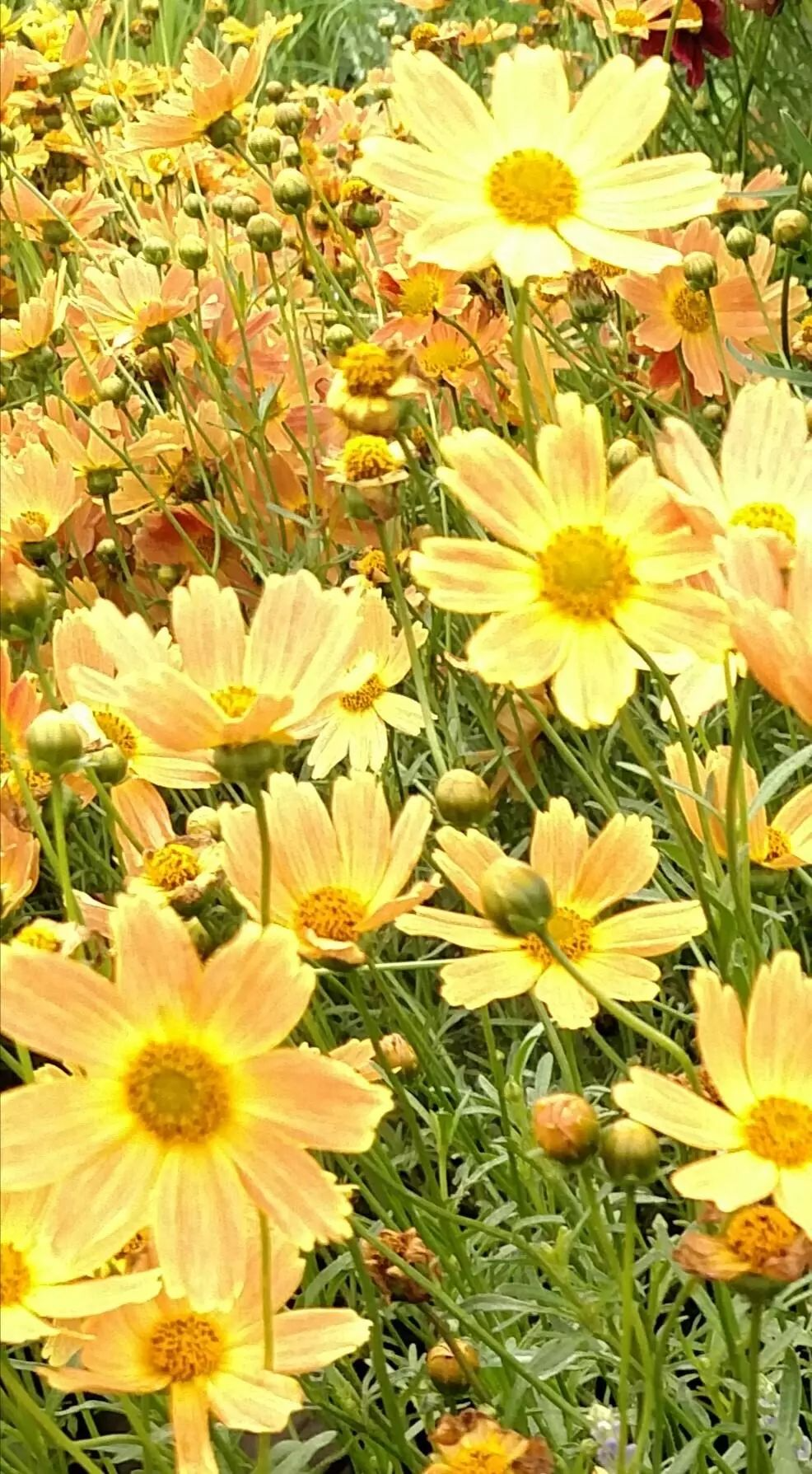
The plant is 35-45cm tall and forms a very fragile, clumping plant that tolerates drought, poor soils and high temperatures. This new variety has a large number of flowers that open deep orange and then fade to a soft apricot yellow as the season progresses. Bloom begins in summer and continues into autumn.
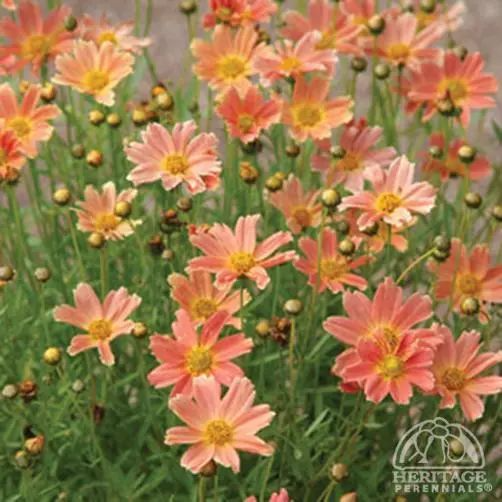
Forms an expanding clump of very delicate fern-like fronds. This selection, part of the Sizzle & Spice™ range, grows 35-45cm tall and has star-shaped, ivory flowers with deep magenta centres whitish at the edges, extending to the edges in early summer to autumn. Cutting back the faded flowers encourages bud formation over the season. Good for cutting and mass plantings. Ideal for the edge of a sunny border, or planted in mixed containers. Tolerates heat and humidity. Divides easily in early spring. Good drainage is essential.
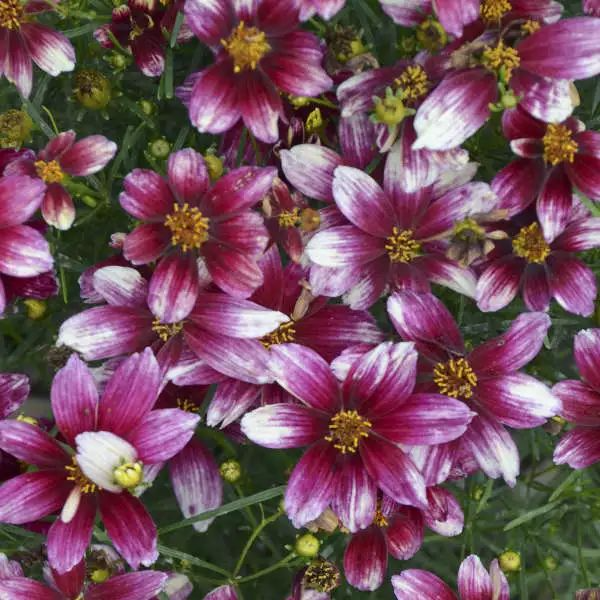
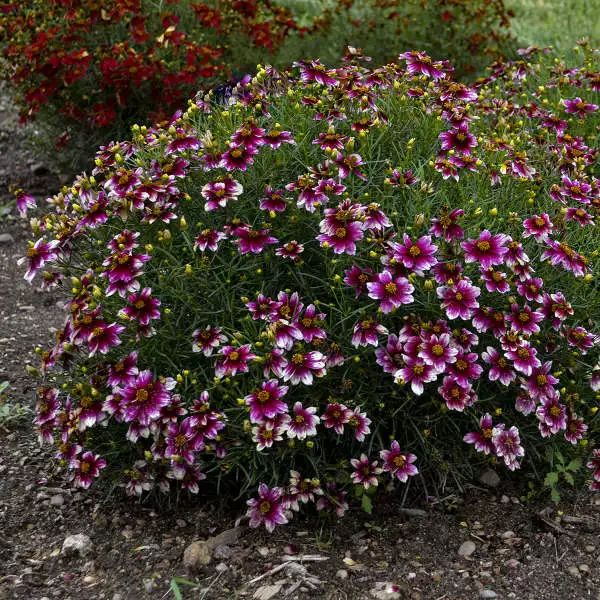
Perennial herb, tolerant of moisture and heat, with a long blooming period, summer to fall! Thrives in almost any soil in full sun, masses of golden daisies cheer the driest of locations! Prolific flowers from early summer to fall. Drought tolerant. Medium growth rate.
A yellow star-shaped flower that easily becomes a ground cover, with bright, bold yellow flowers set against finely cut, lacy foliage. Perfect for a variety of settings. Works great with other yellow, lavender or ornamental grasses.
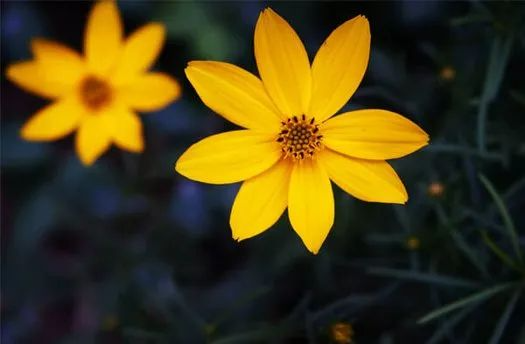
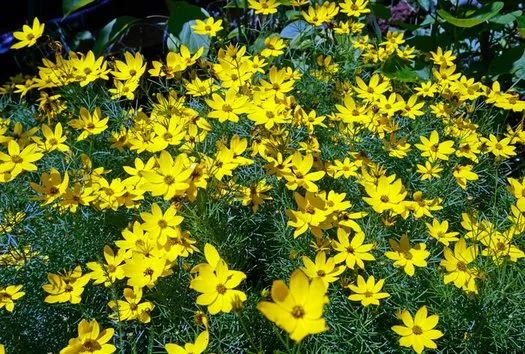
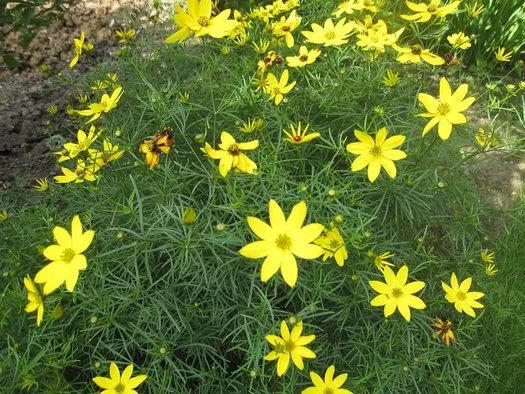
Coreopsis has strong self-seeding ability, is drought- and heat-tolerant, has strong resistance to sulfur dioxide, and requires almost no pruning . Its low maintenance cost, excellent drought resistance, and long-blooming flowers allow it to fully display its advantages in sunny gardens. Coreopsis is also very effective as a covering material for roof greening.
Now it has been upgraded to a global tradition~ Come show off some beautiful pictures~!
First of all, of course, the beautiful Coreopsis stands alone~
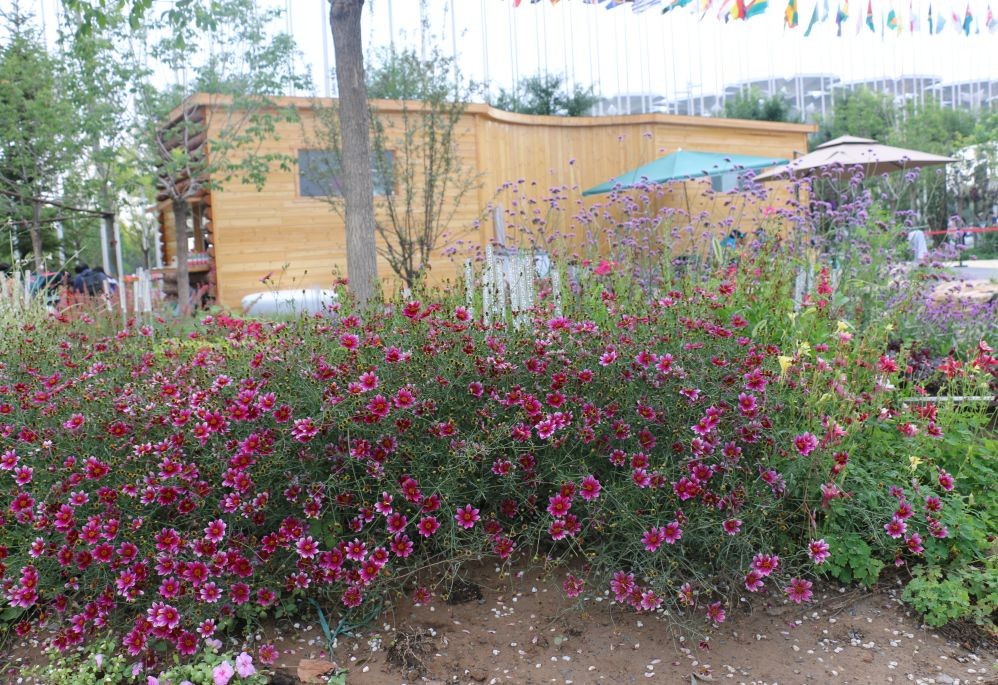
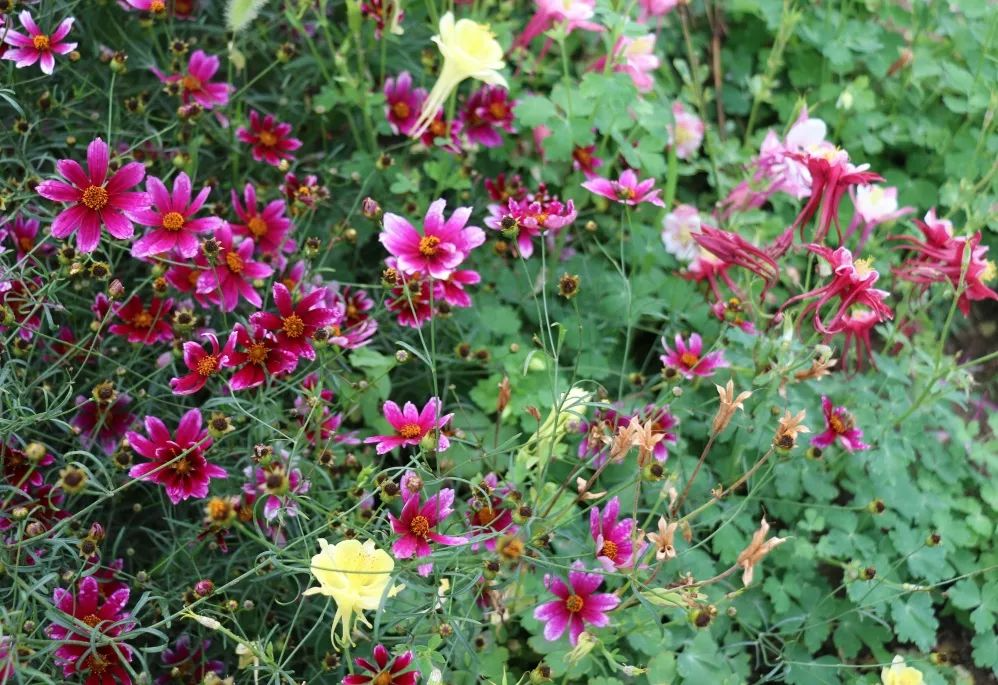
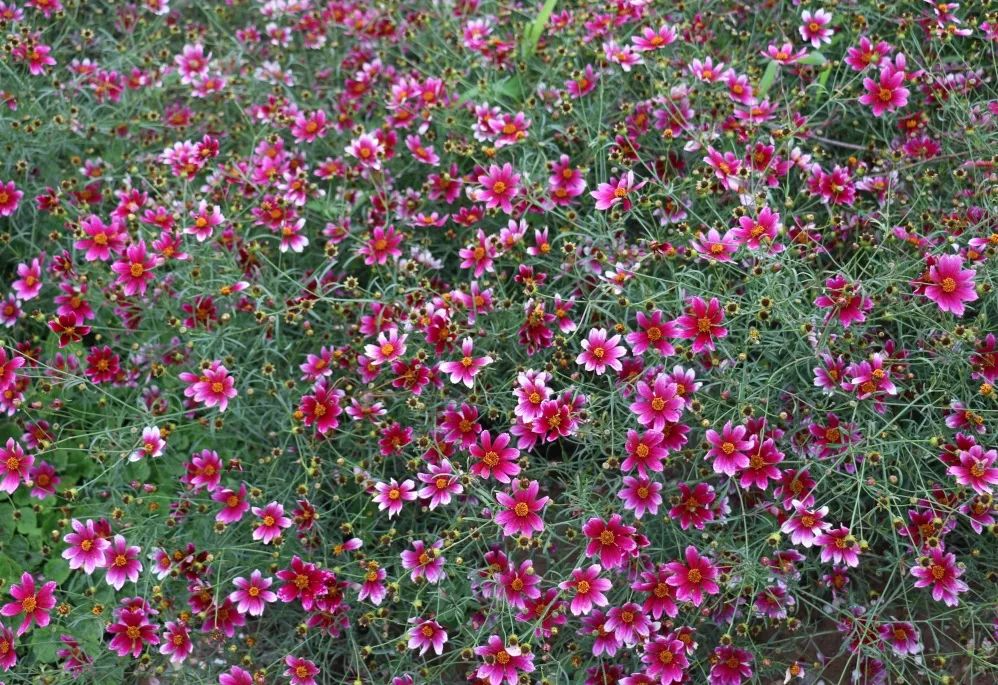
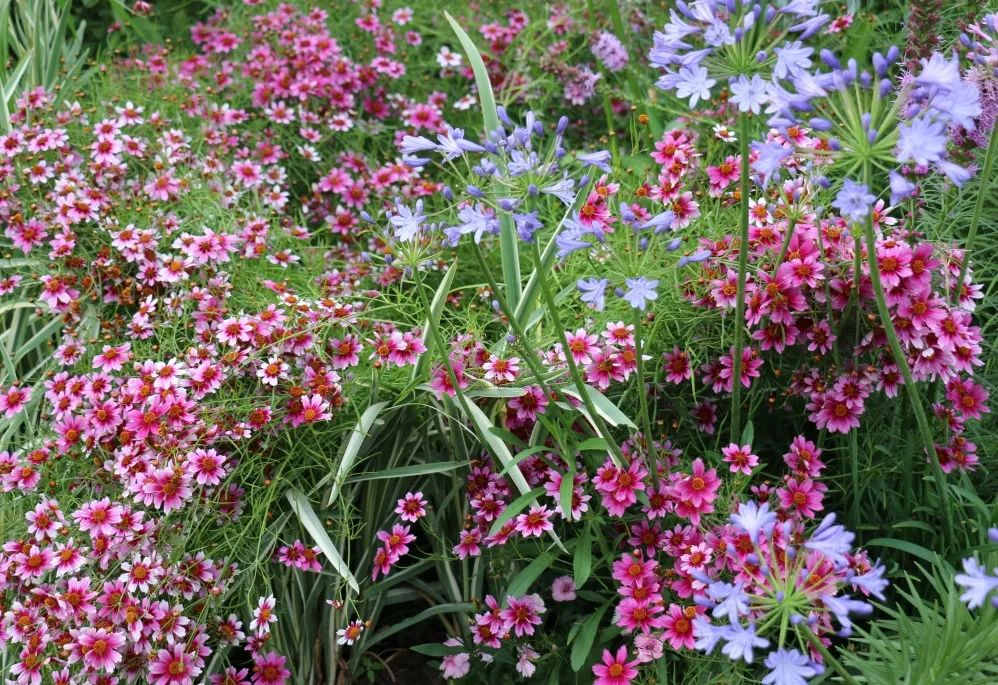
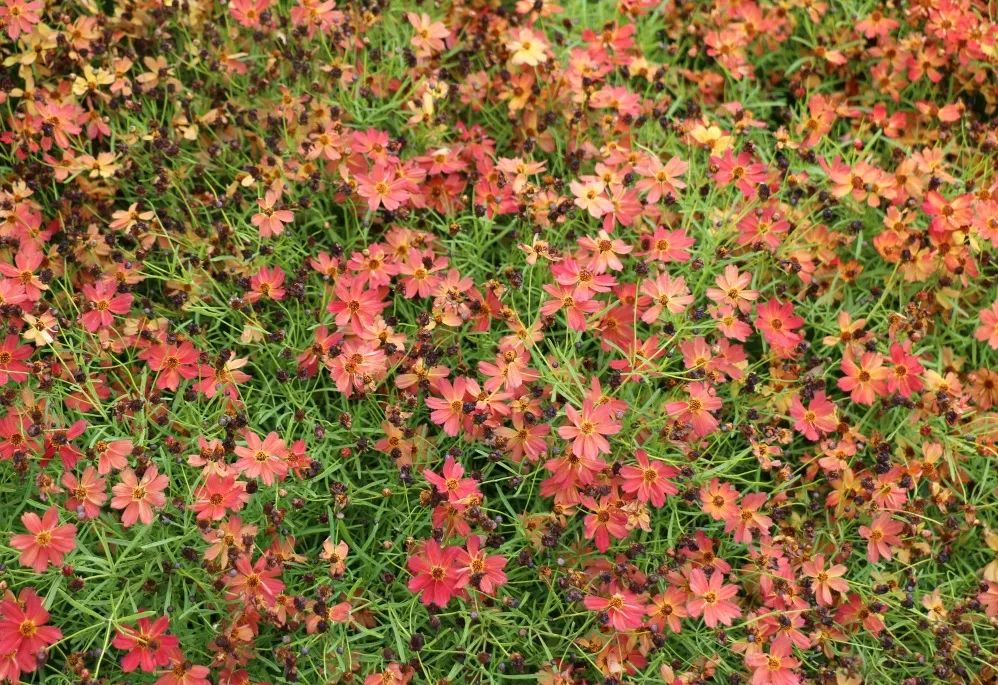
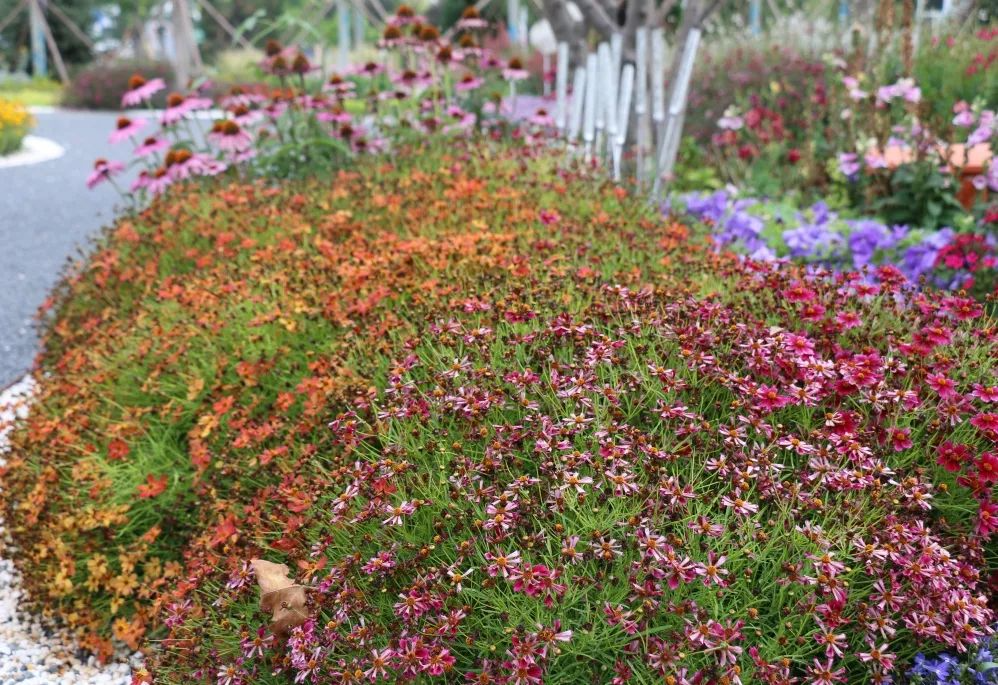
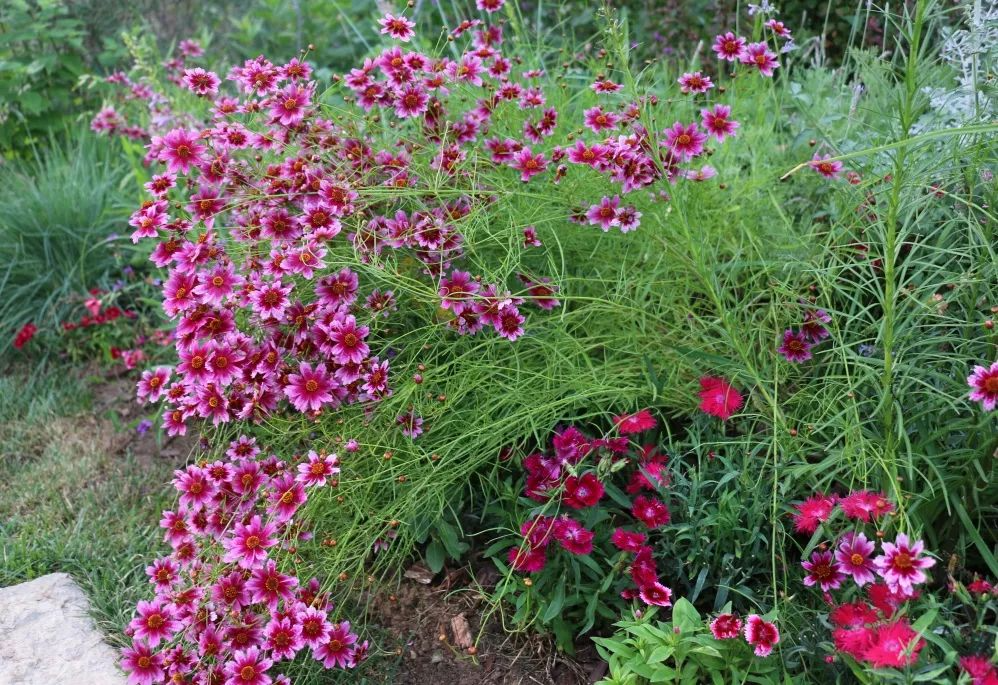
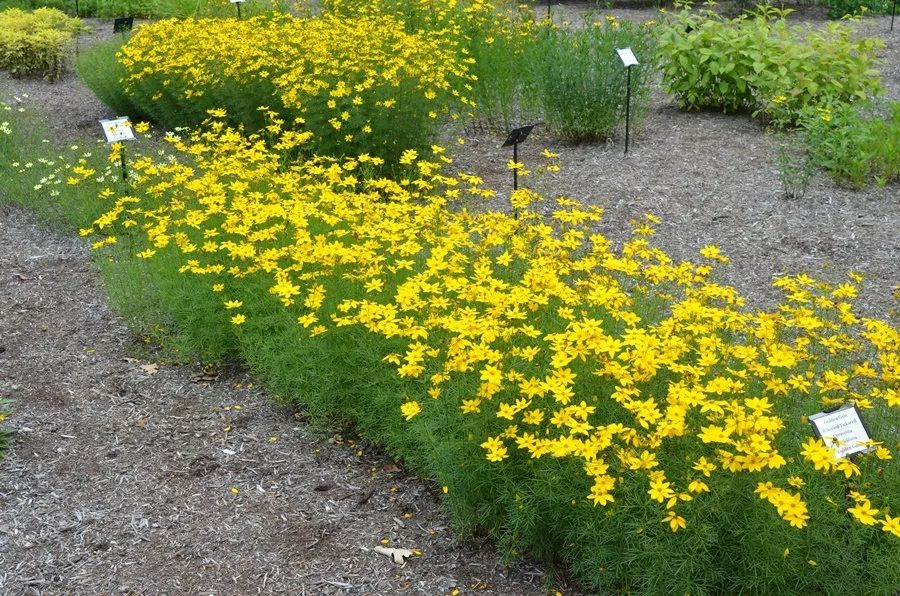

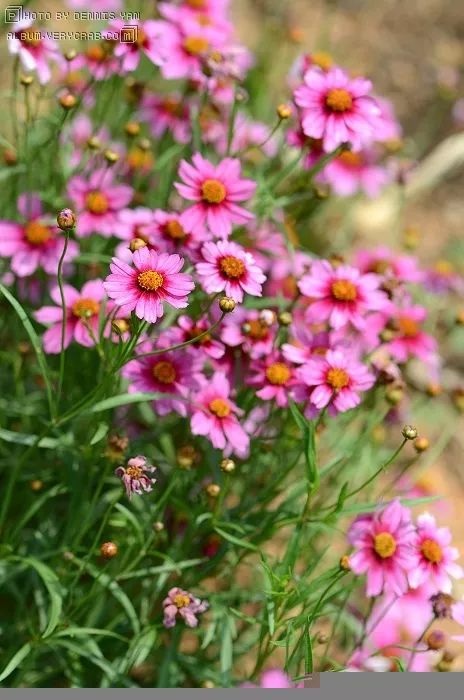
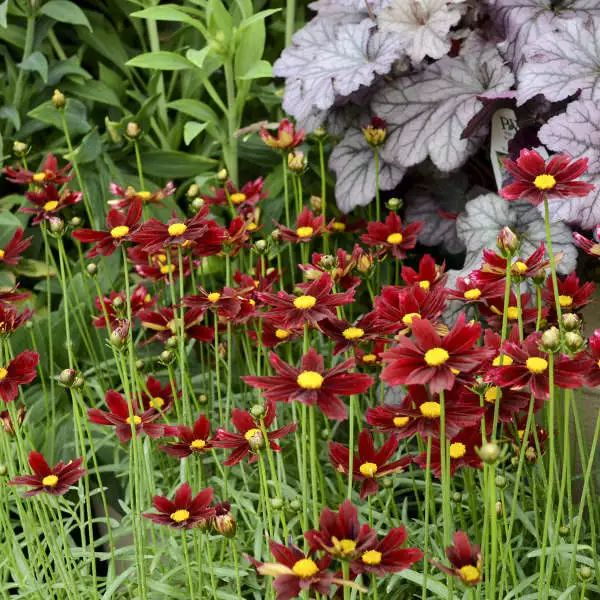

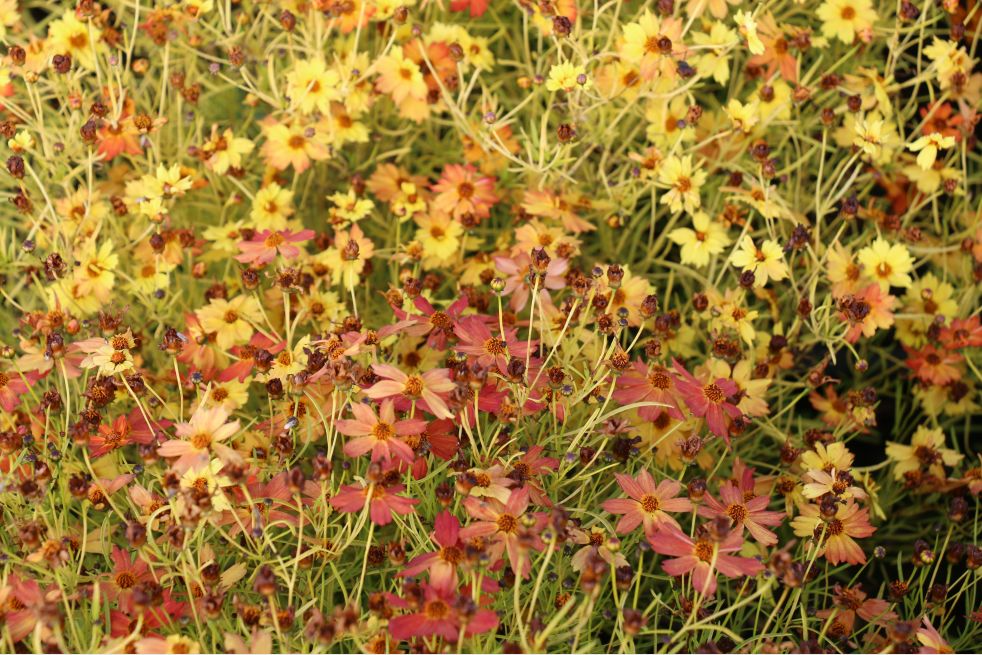
2. You may doubt the compatibility of Coreopsis with other plants, but the following pictures will tell you what it means to be compatible with other plants!
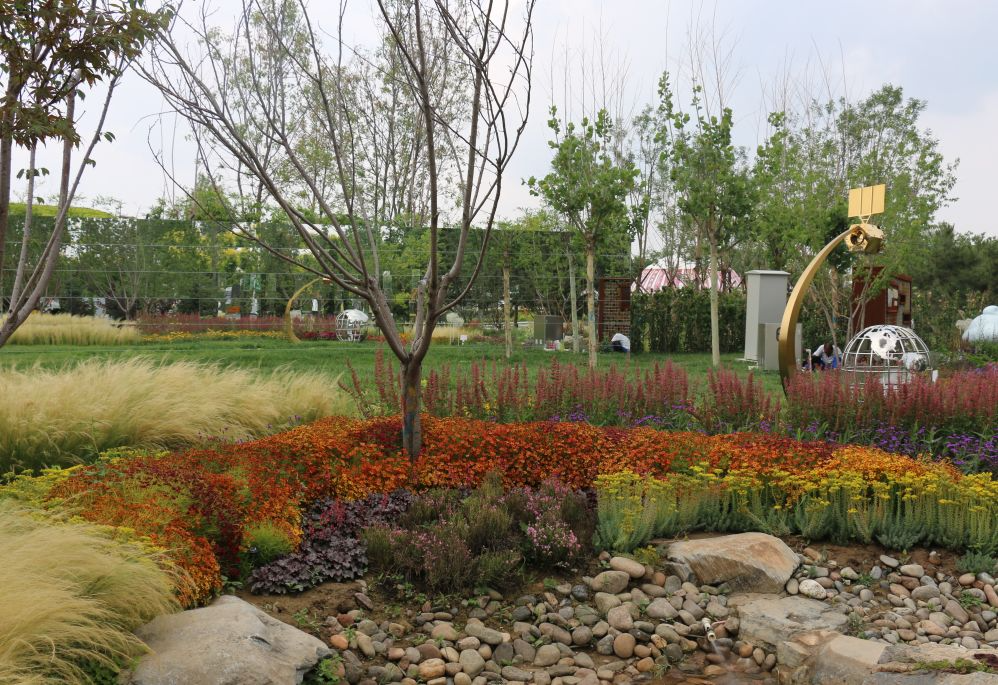
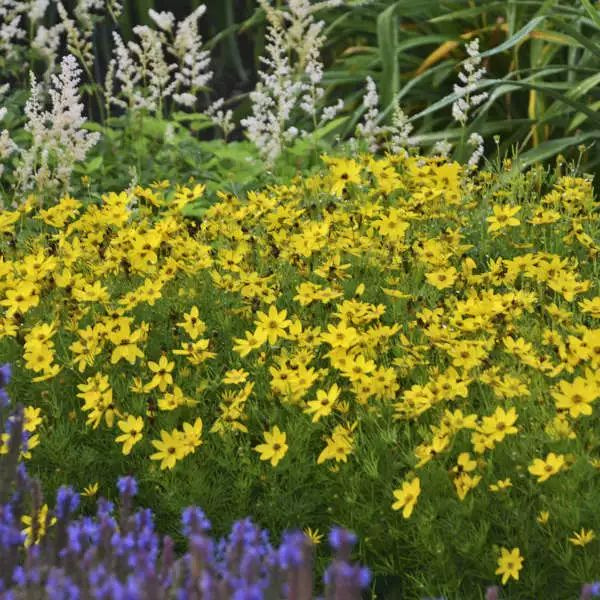
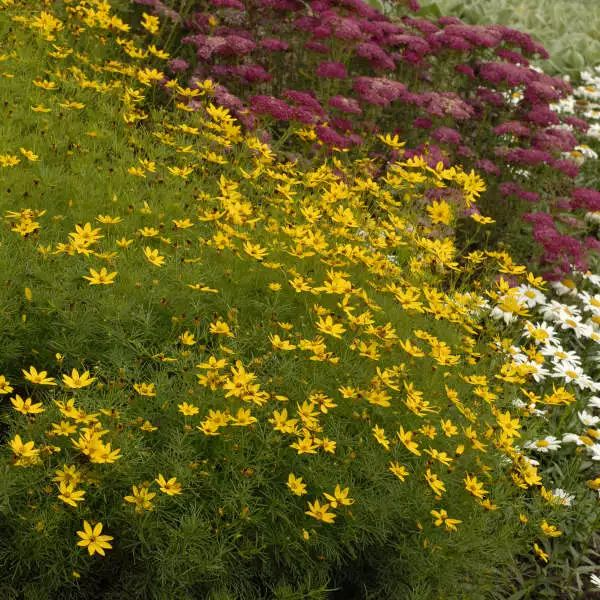
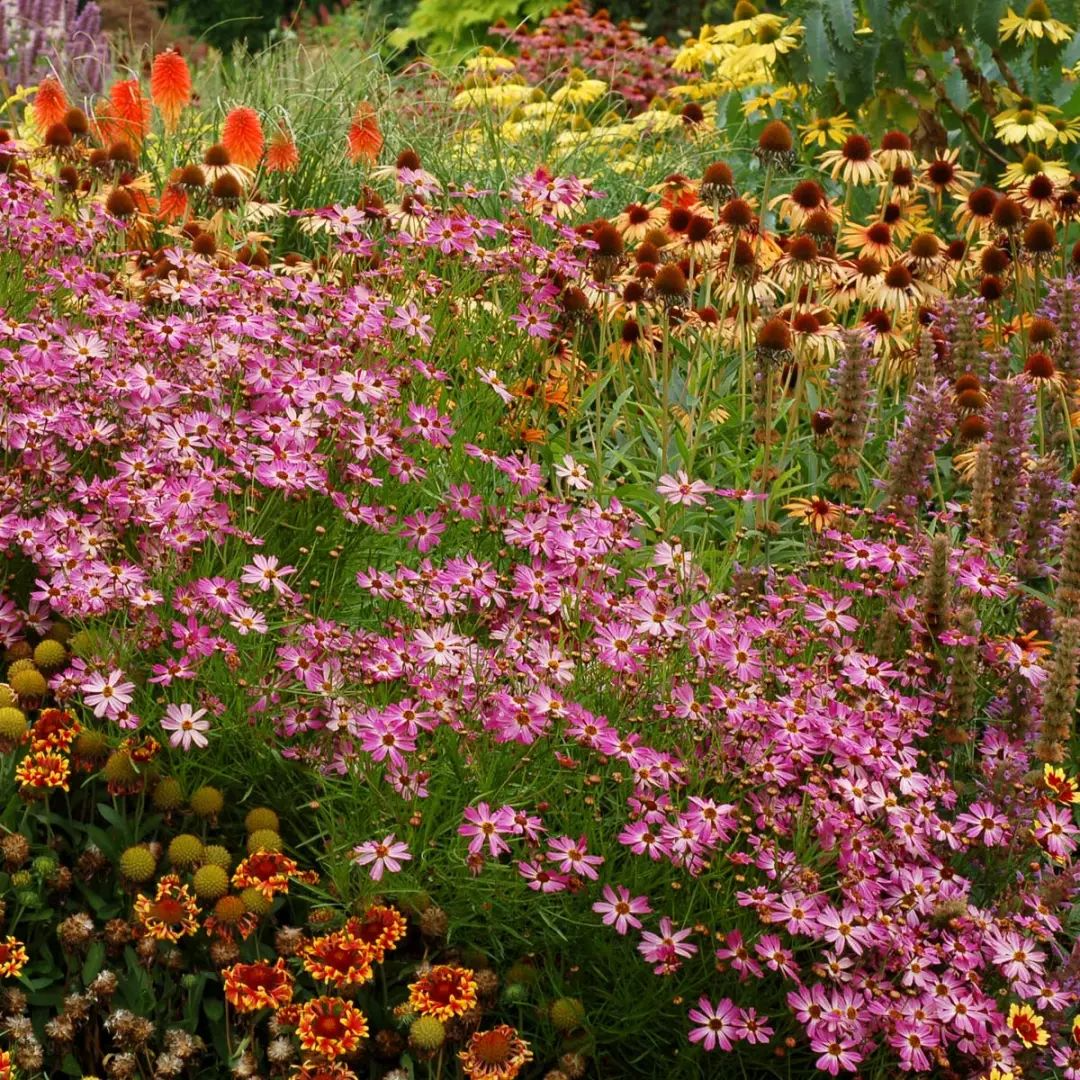
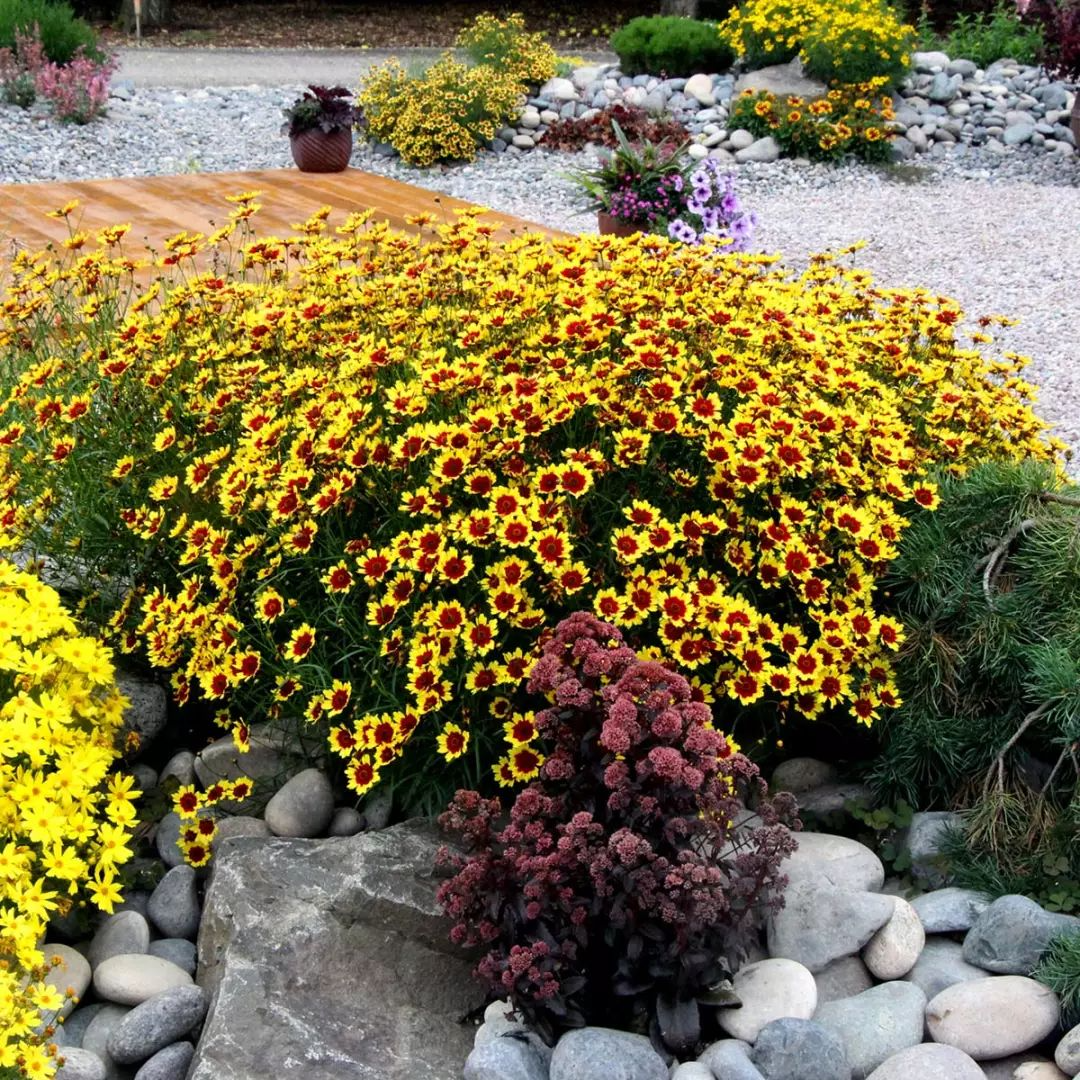
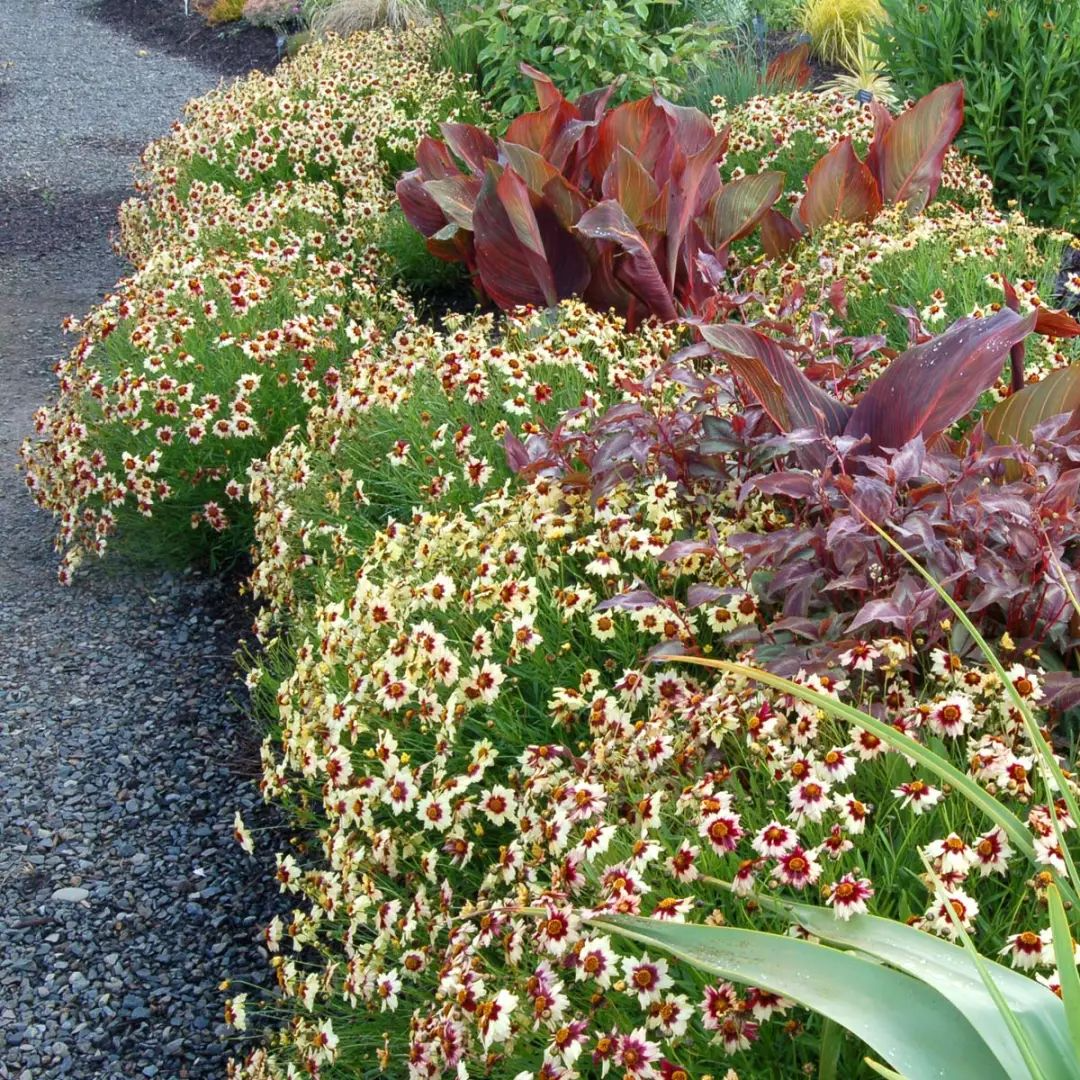
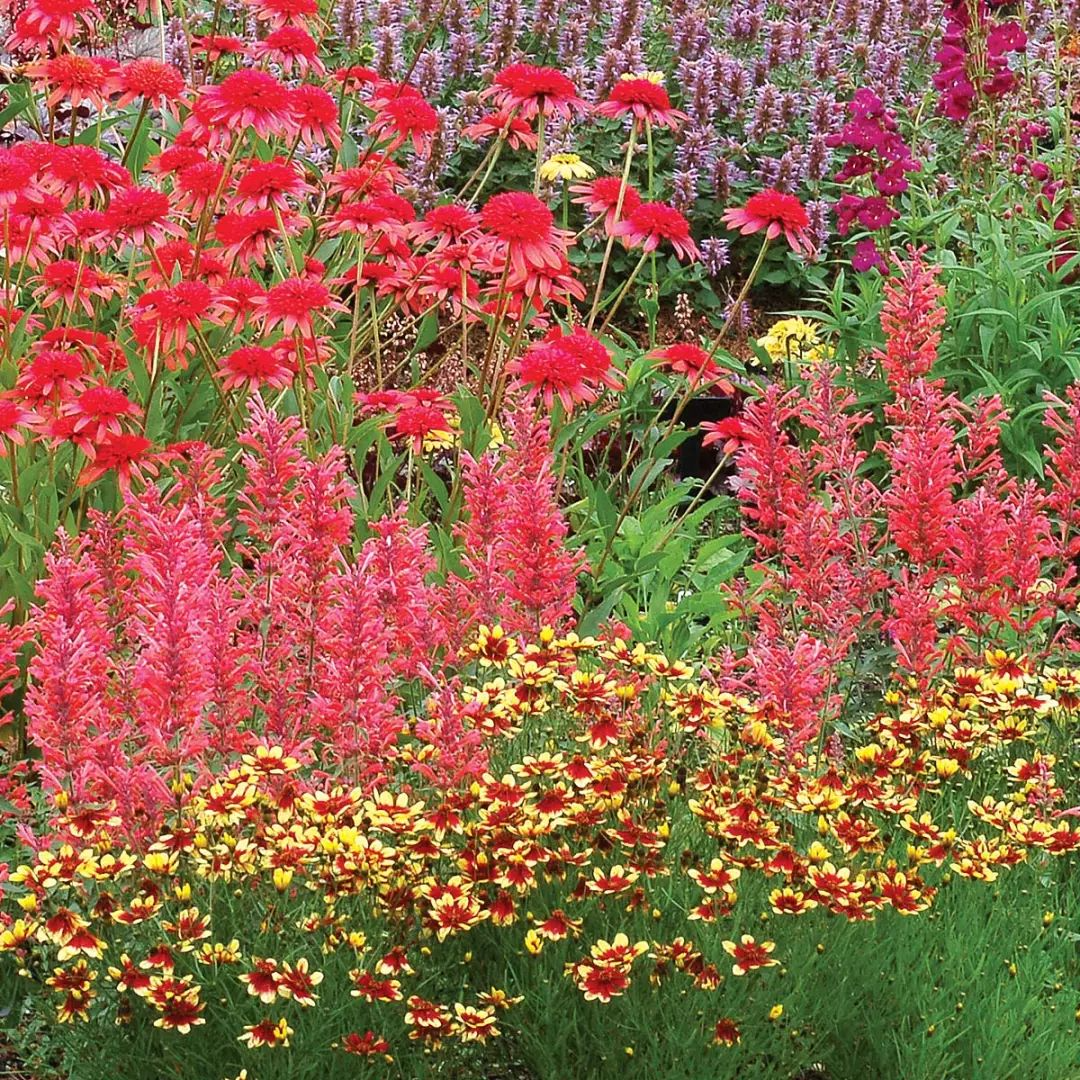

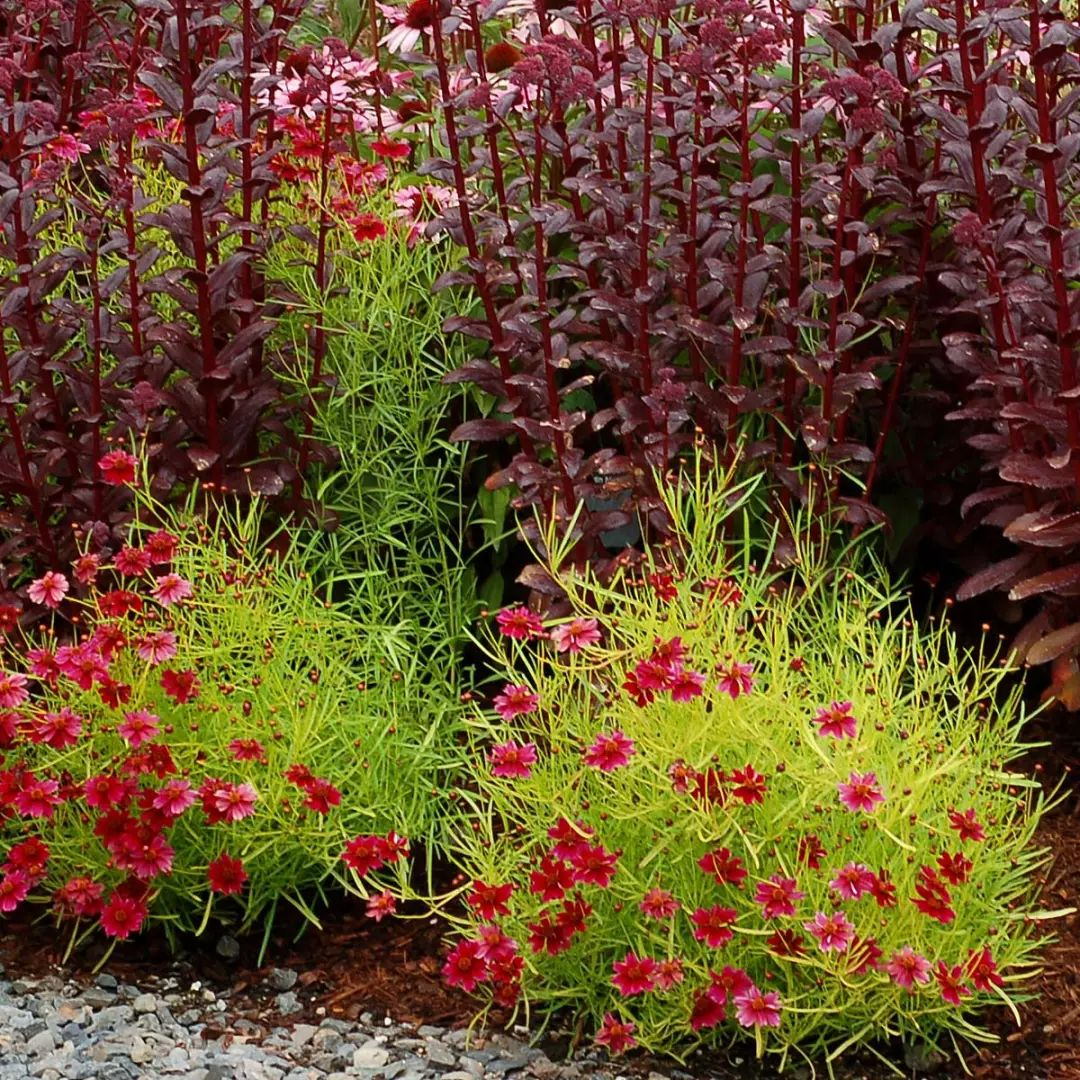
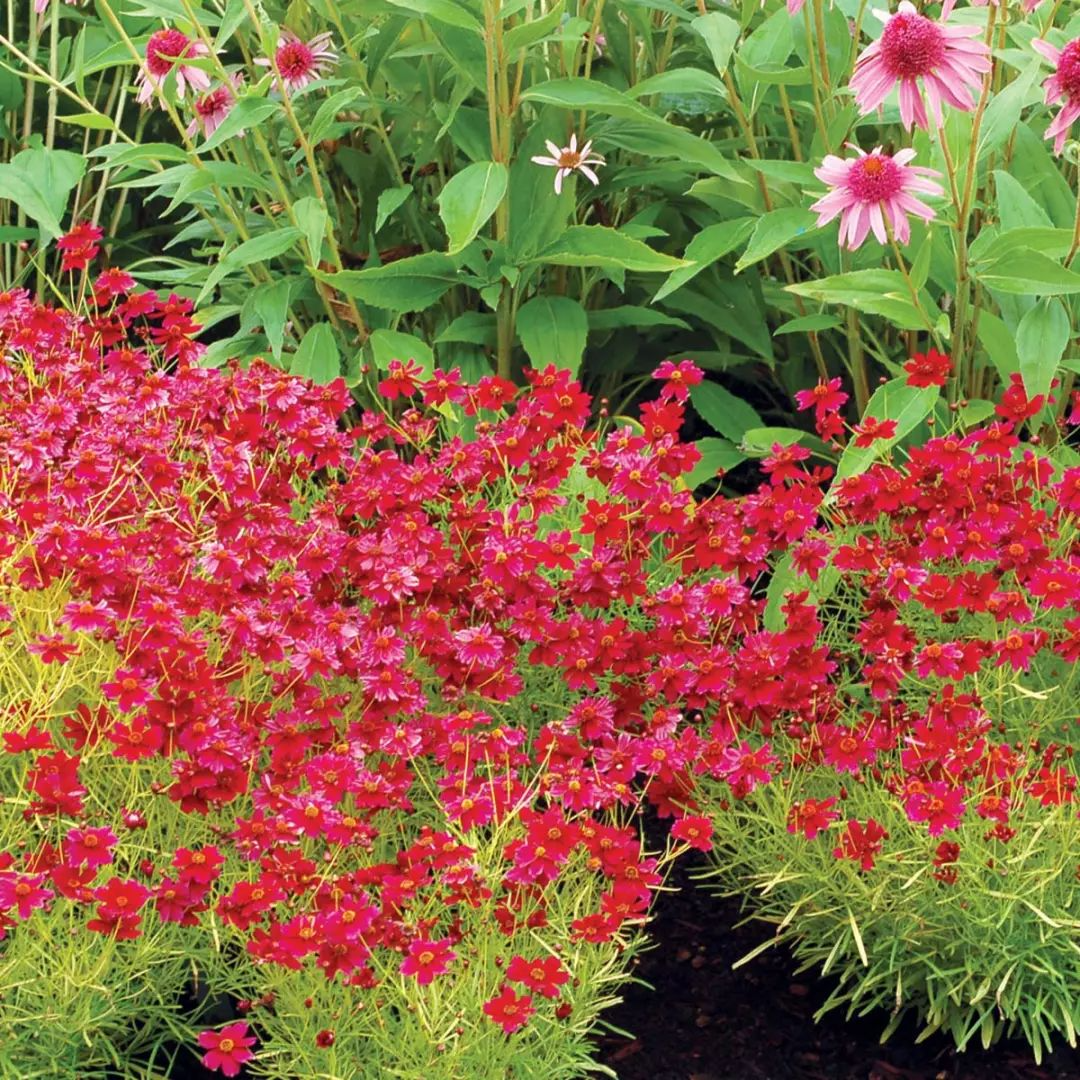
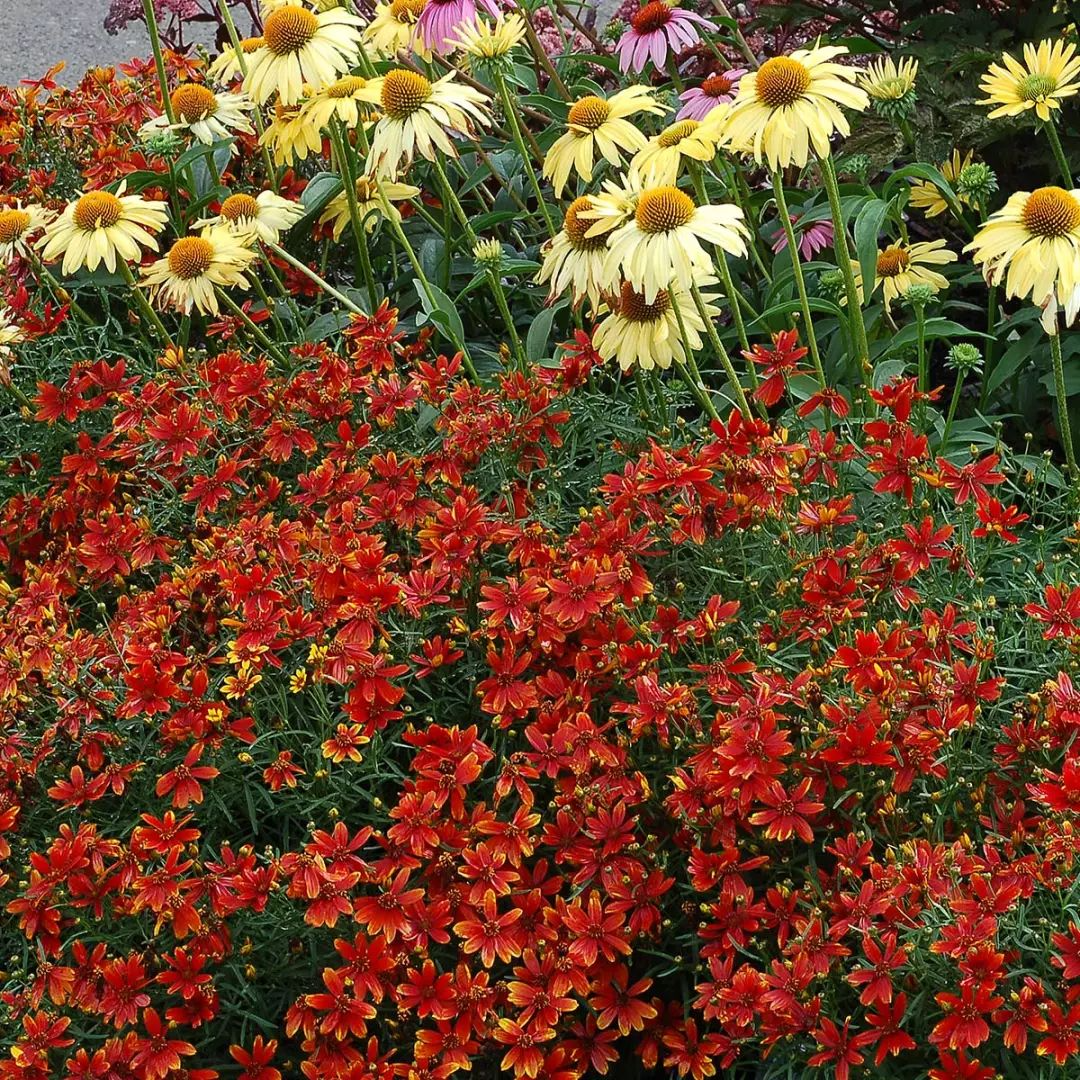
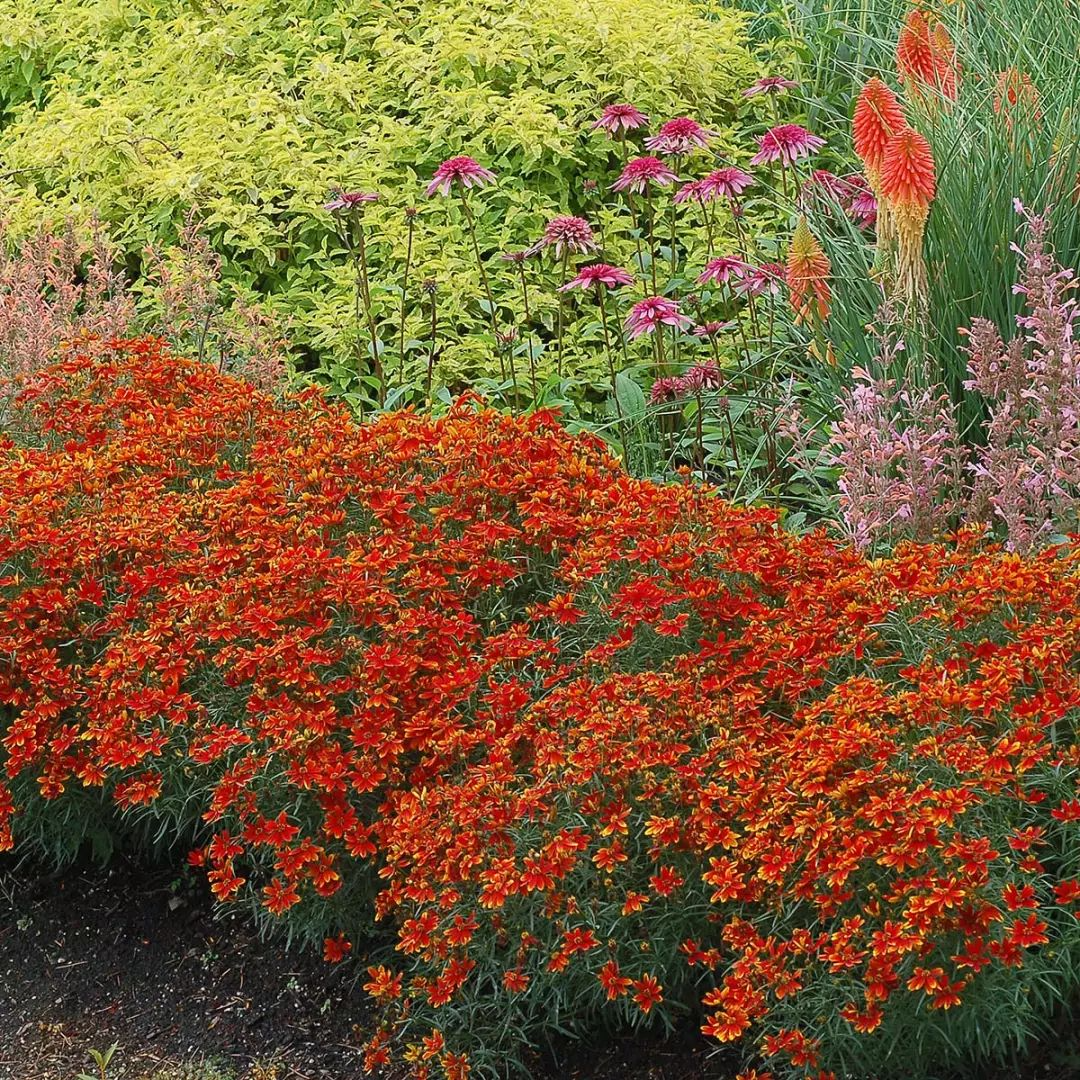
Coreopsis 'Lightning Bug' planted with other plants
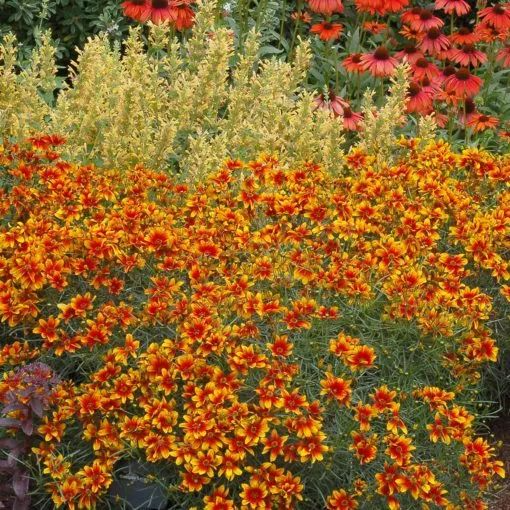
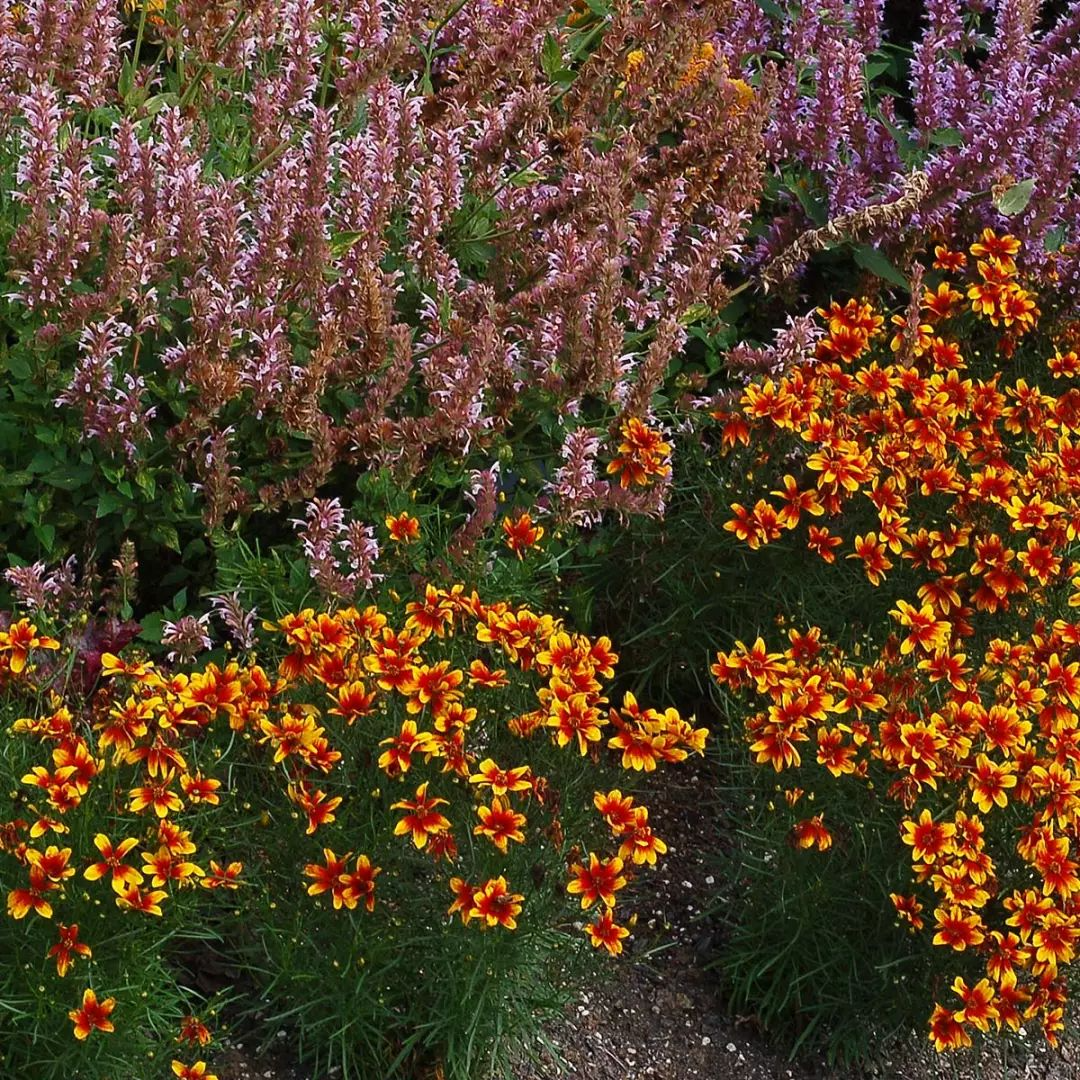
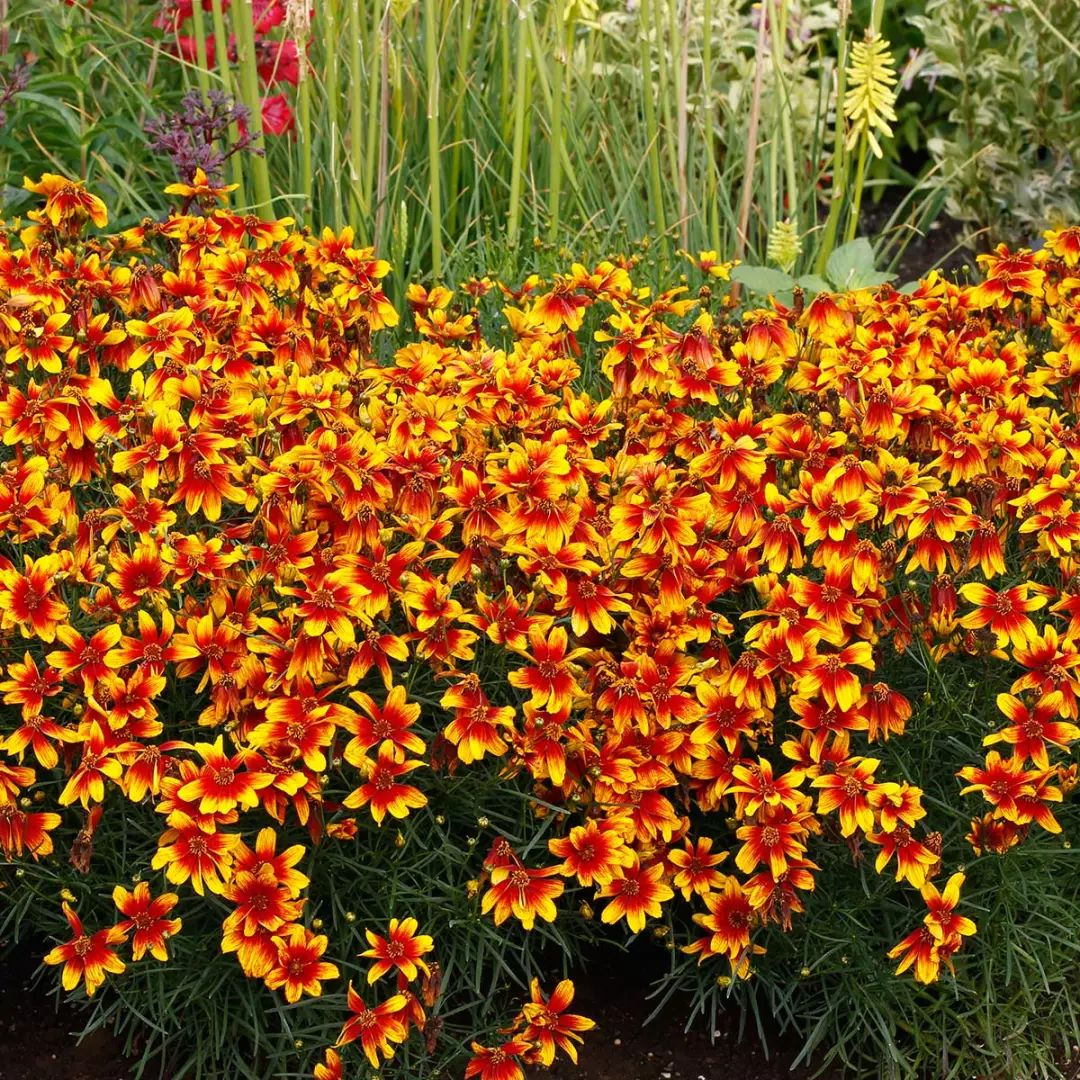
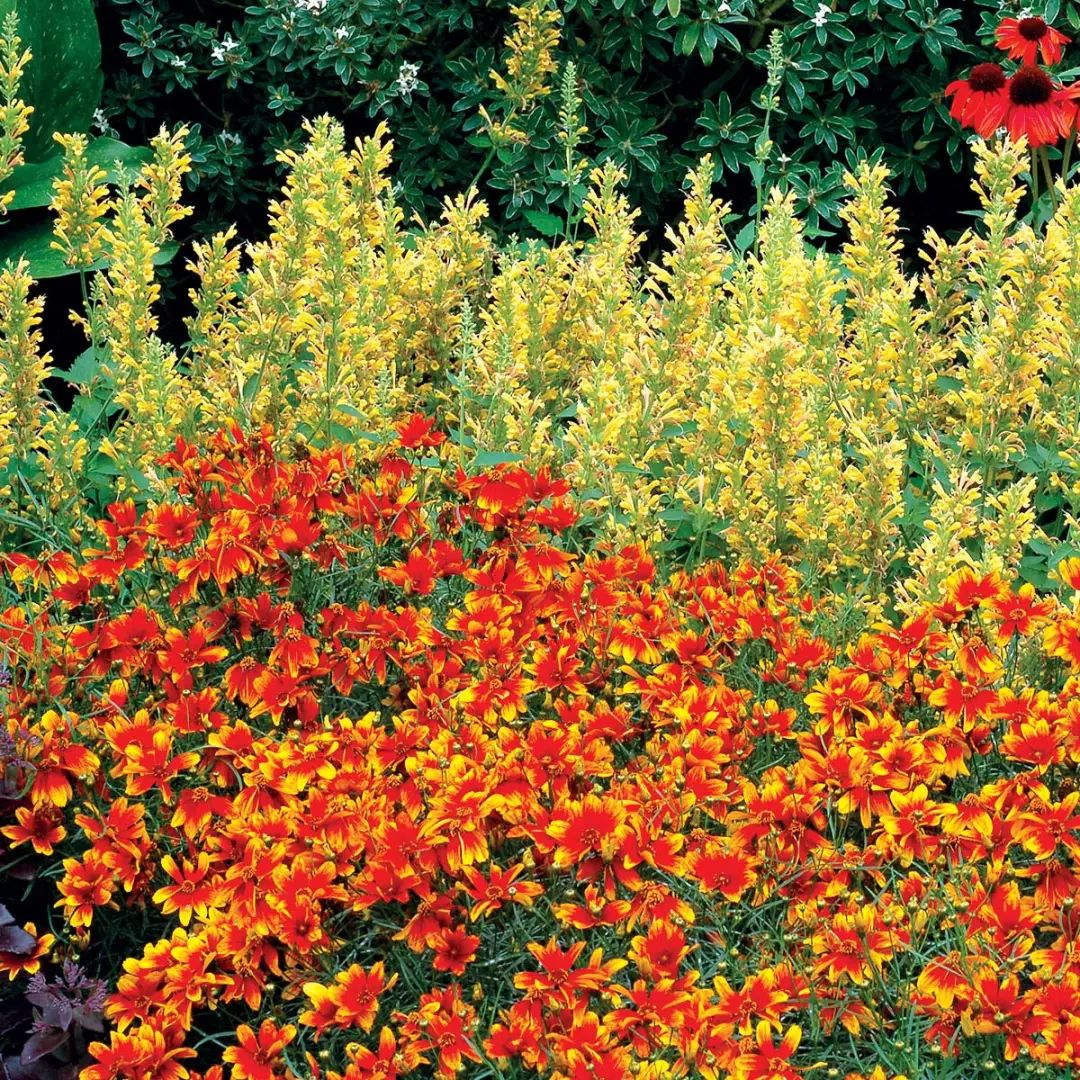
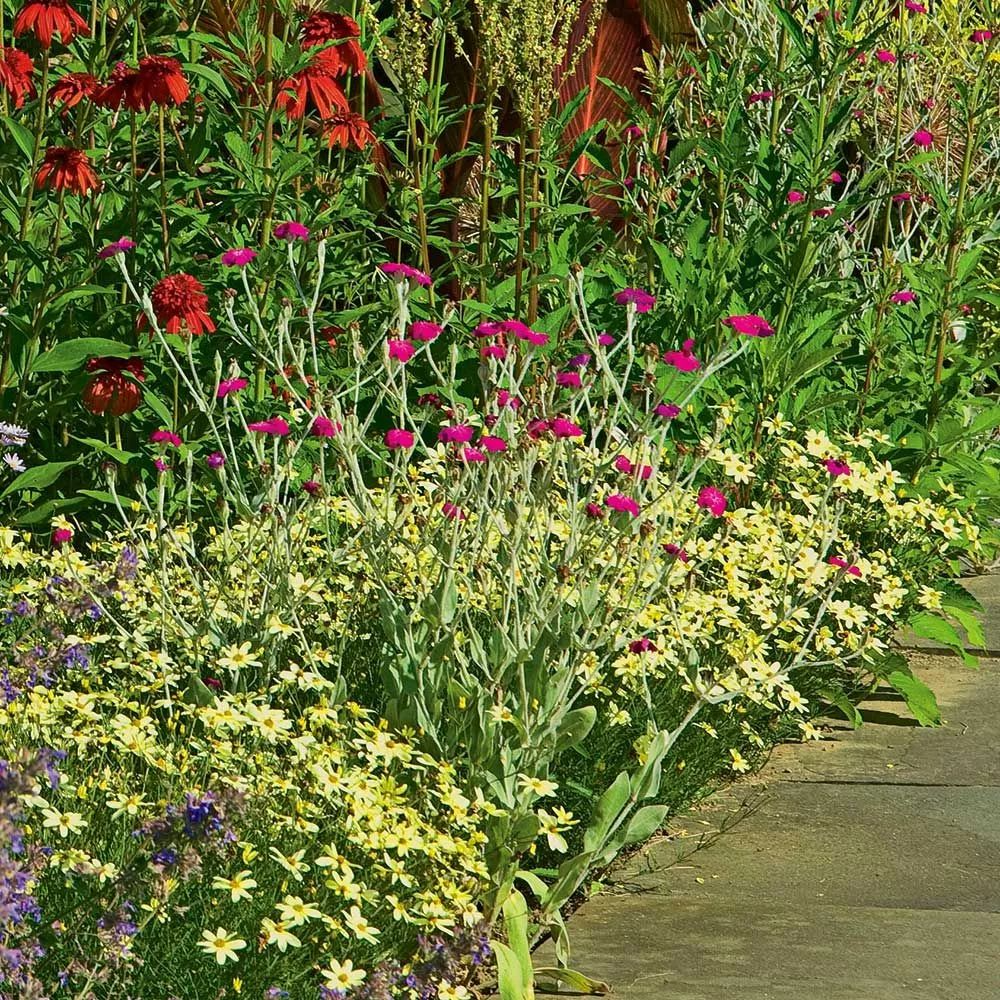

As we all know, many gardens abroad plant coreopsis and echinacea together, including many plants of the Lamiaceae family. I have to say, the effect is amazing!
3. After looking at the plant configuration, what about the planting form?
To see the effect of mixed planting, you really have to go to the Terra Nova display garden in the World Horticultural Exposition . It is so beautiful and huge!

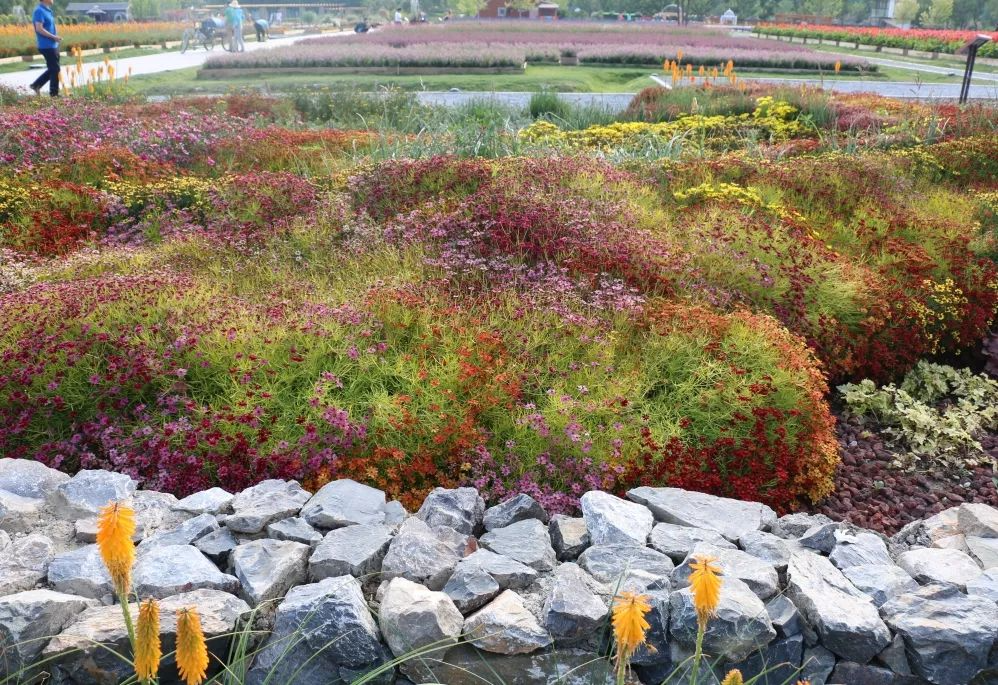

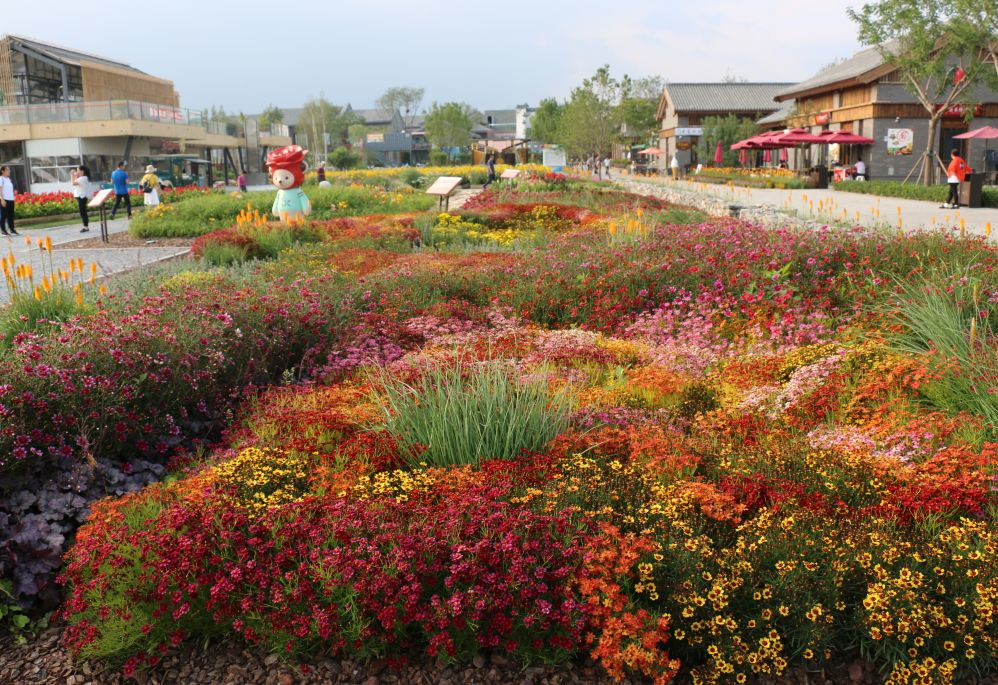
So, cluster planting? Patches? Rows? Each form has its own unique beauty~
However, you will know after looking at the picture. The large-scale application of Coreopsis in China is still limited to a single fixed variety, the large-flowered yellow Coreopsis. Other varieties may not have been promoted due to various reasons such as adaptability, resistance, and cost. However, I still look forward to seeing more colors appear.
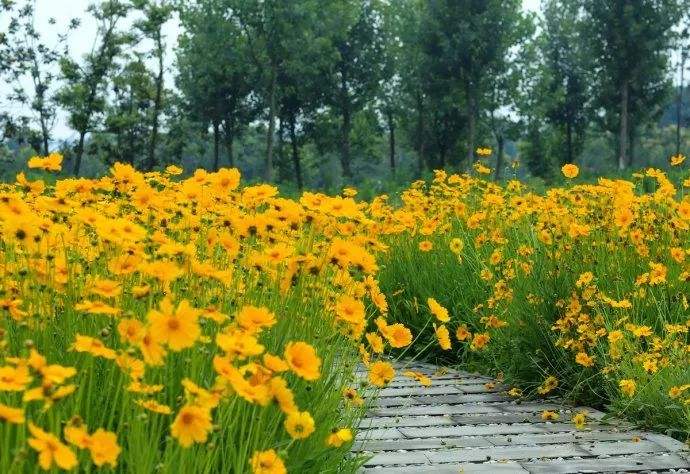
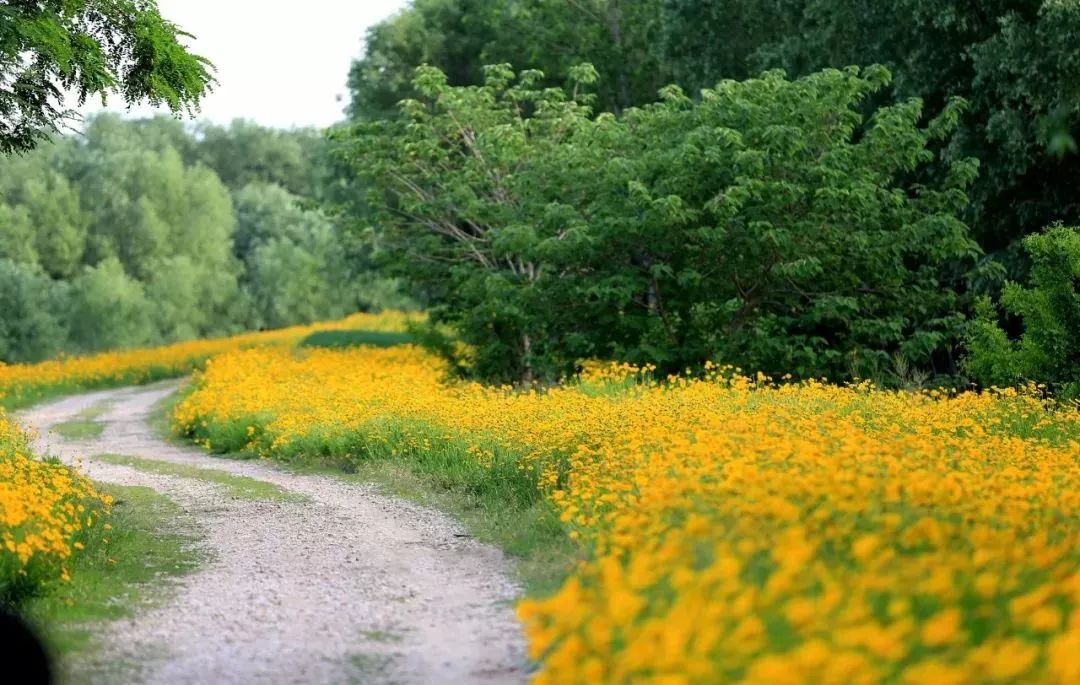
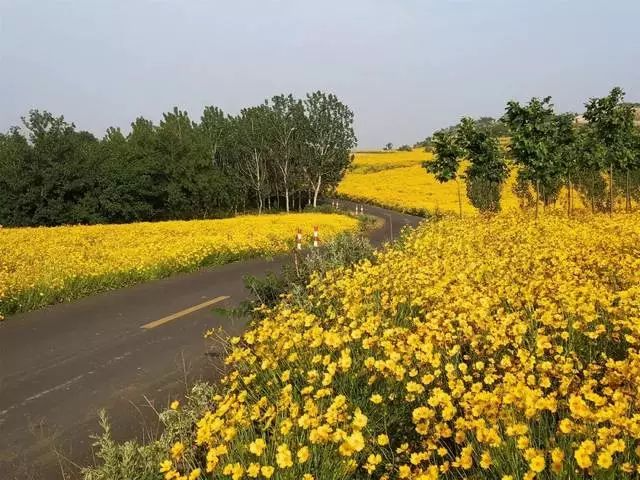
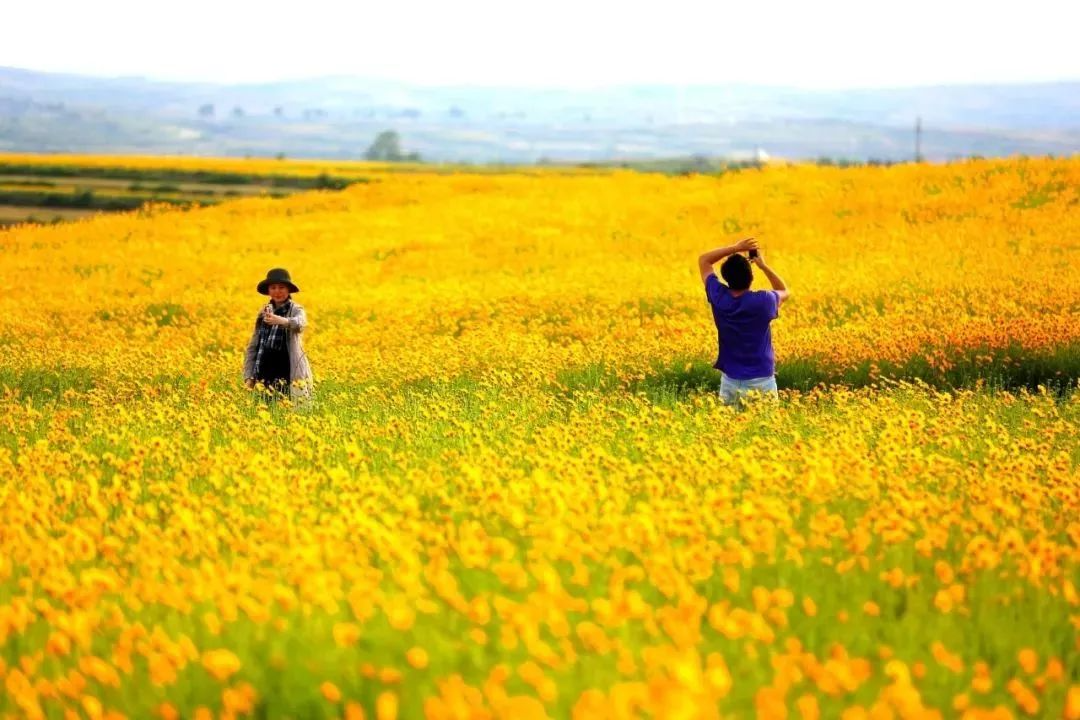
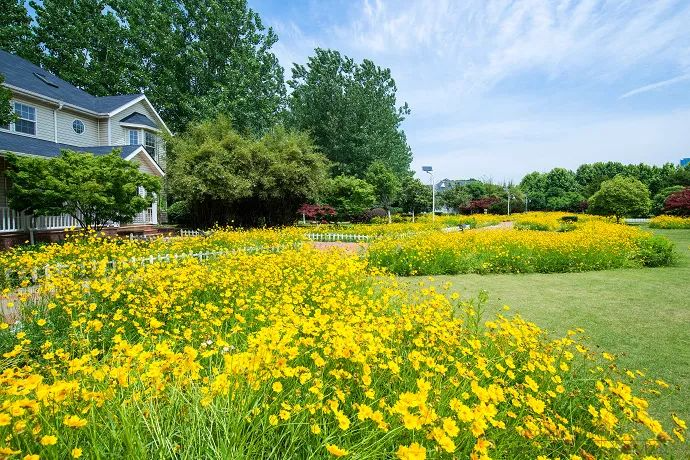
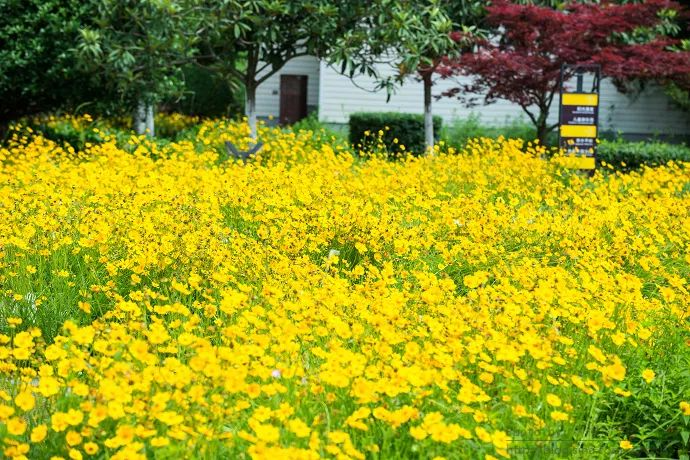

I know you're watching

It is not easy to write and edit this article. Please indicate the source when reprinting: Huaze Gardening (ID: huazeyuanyi)